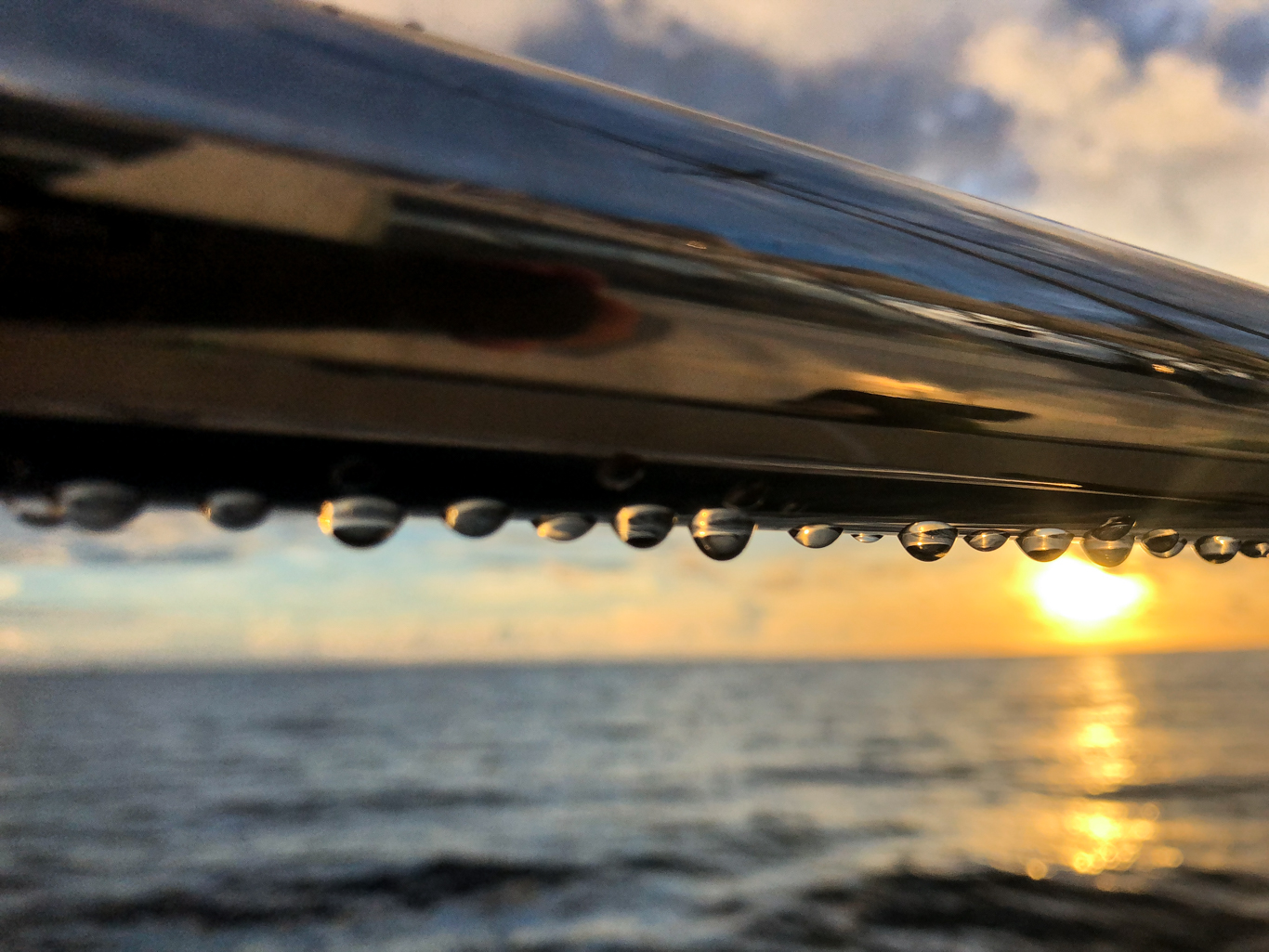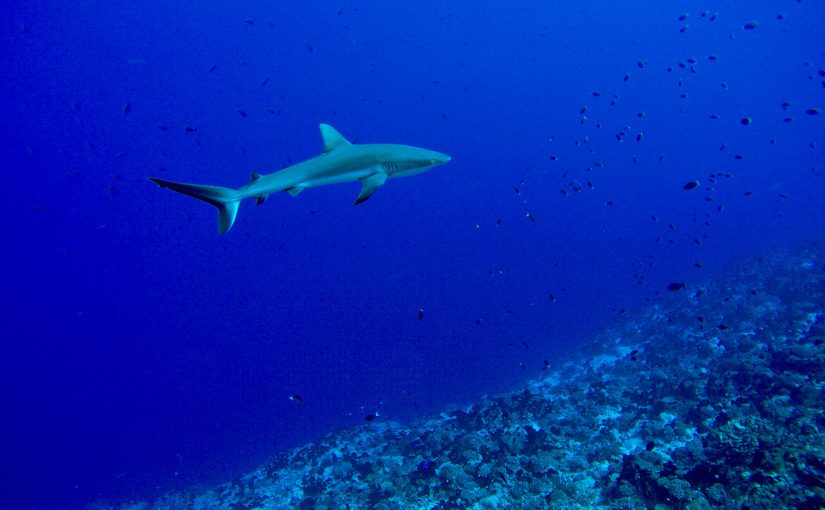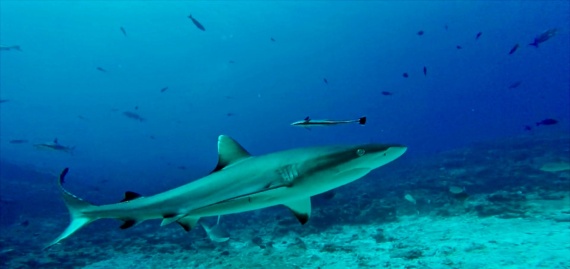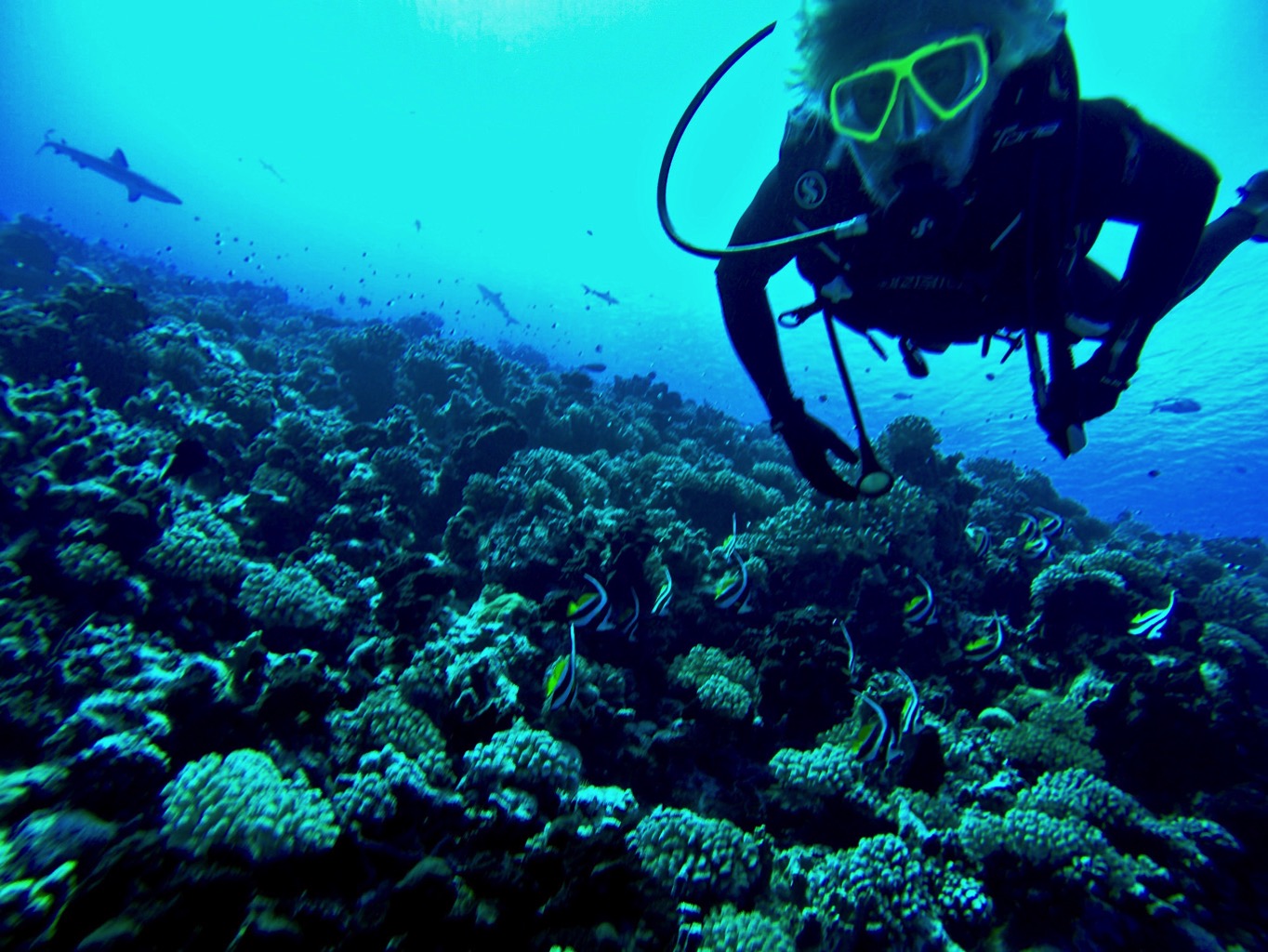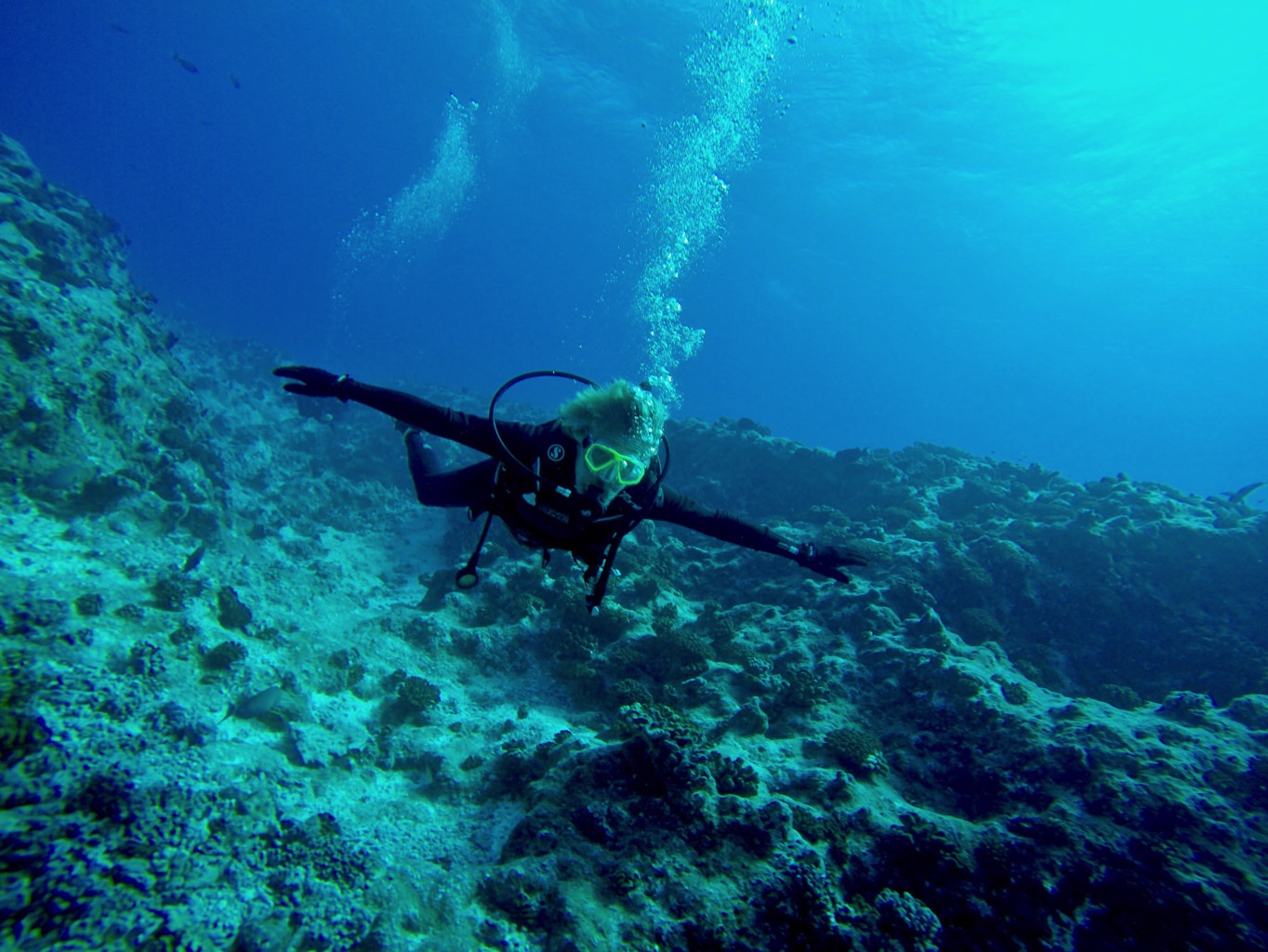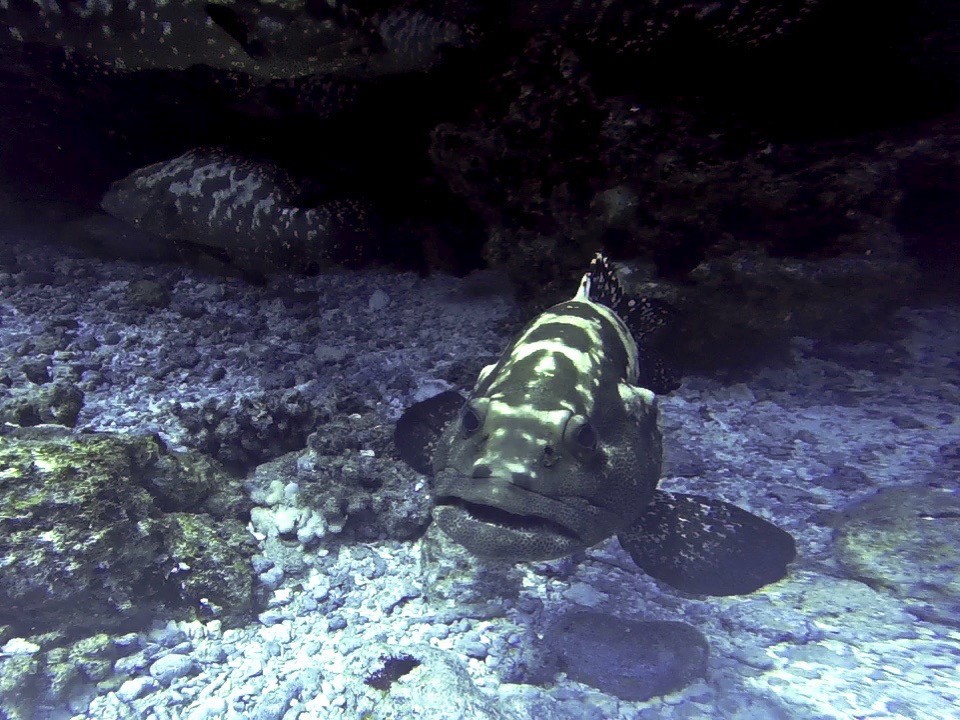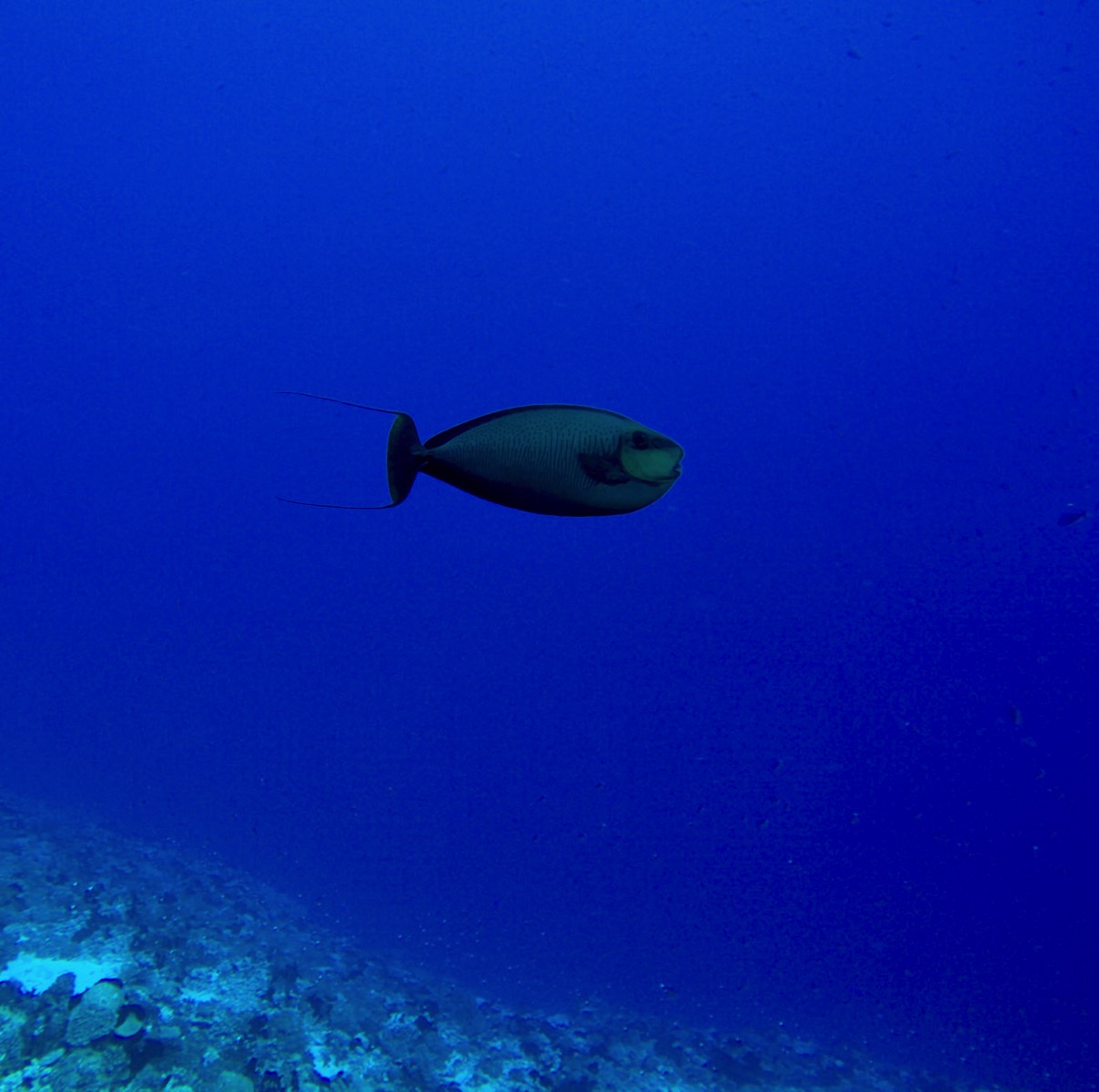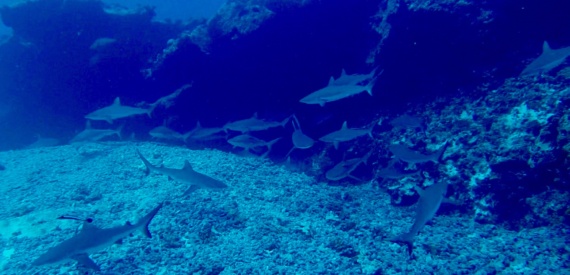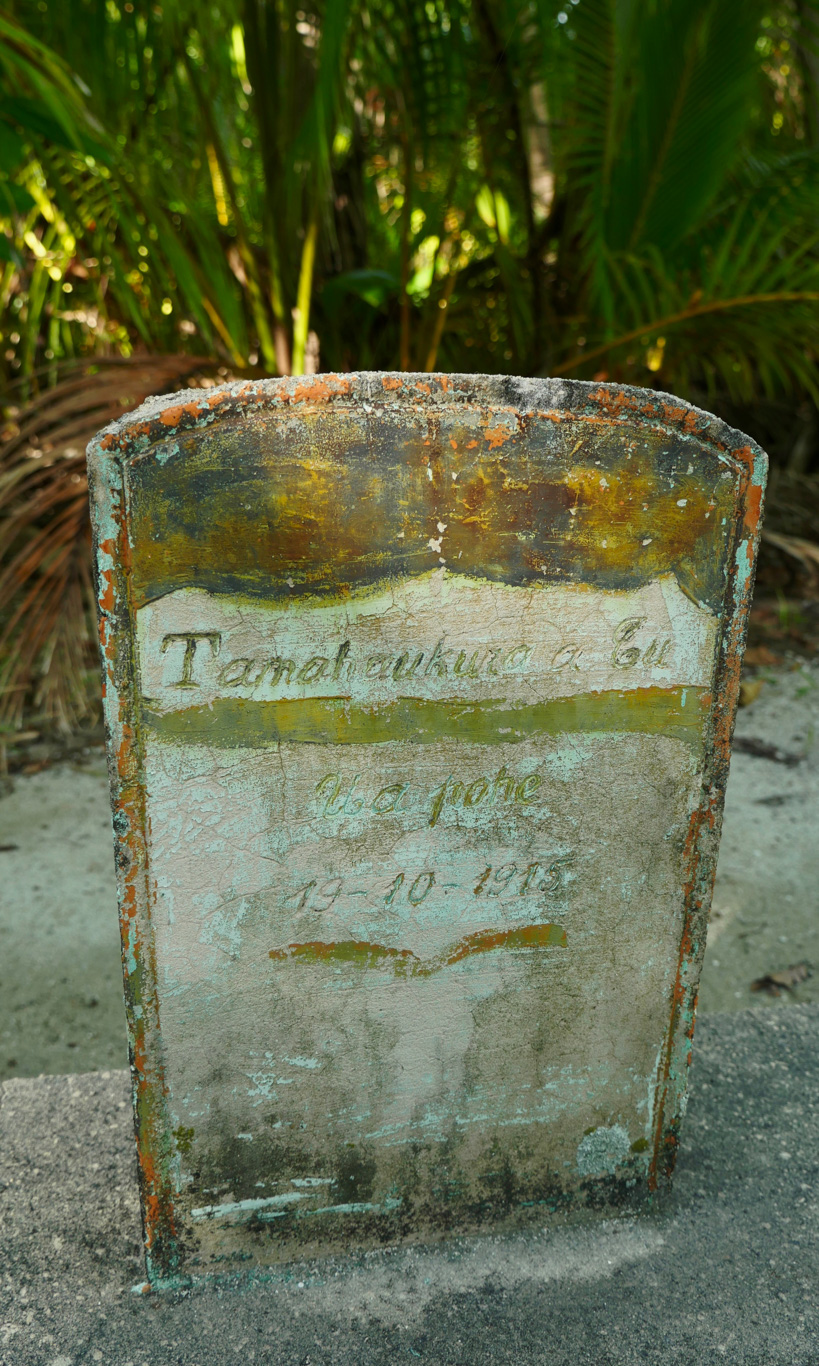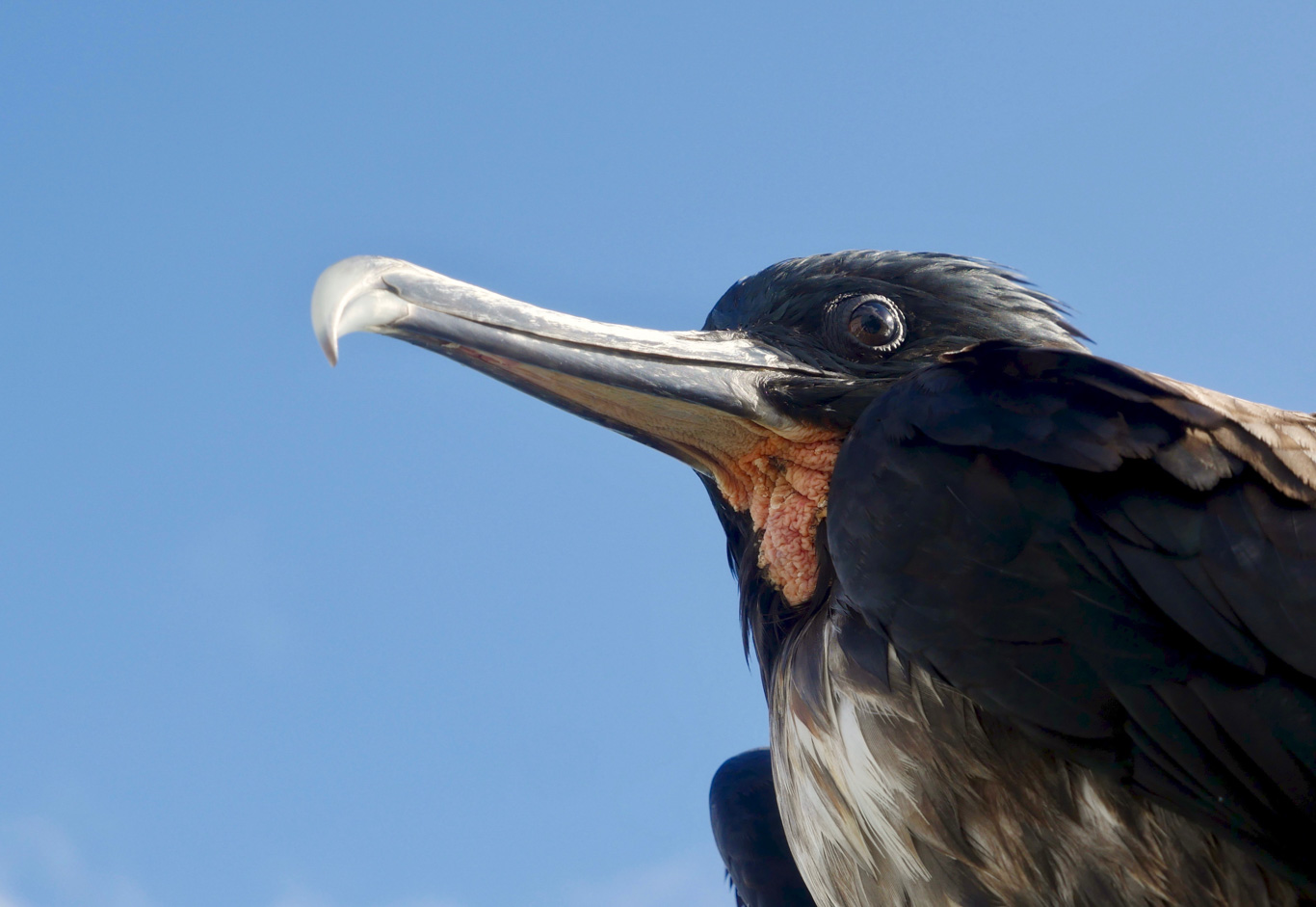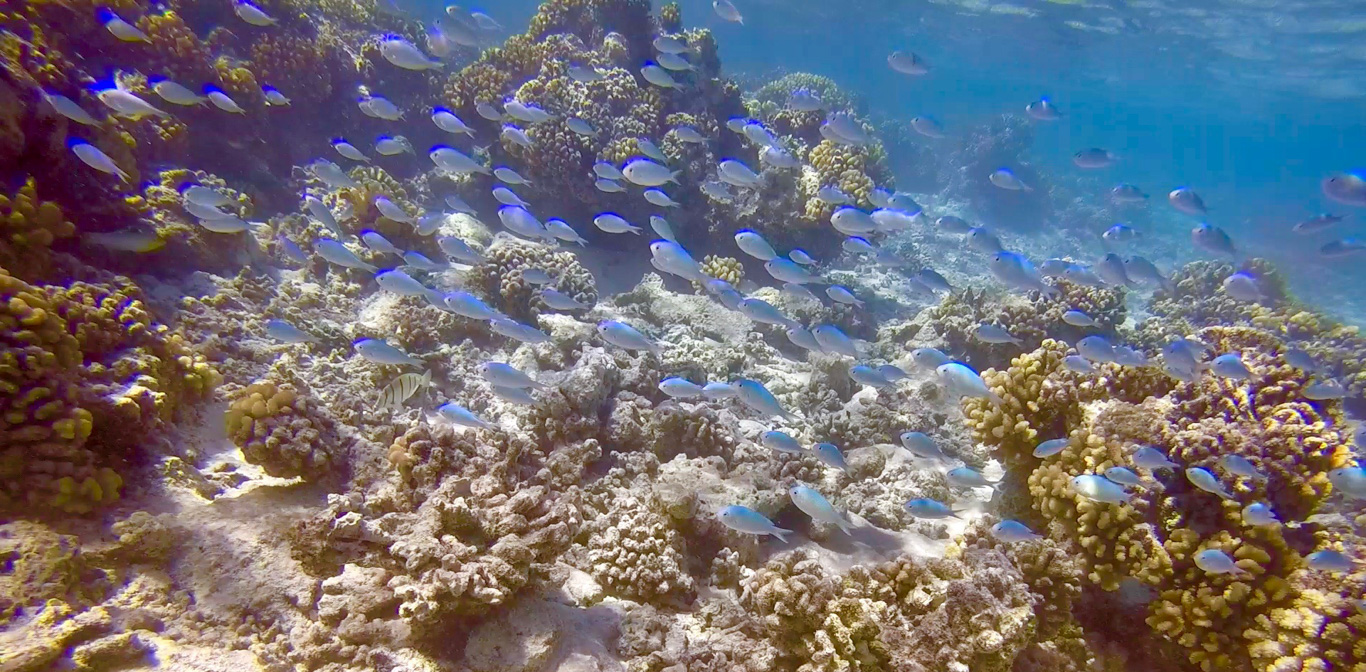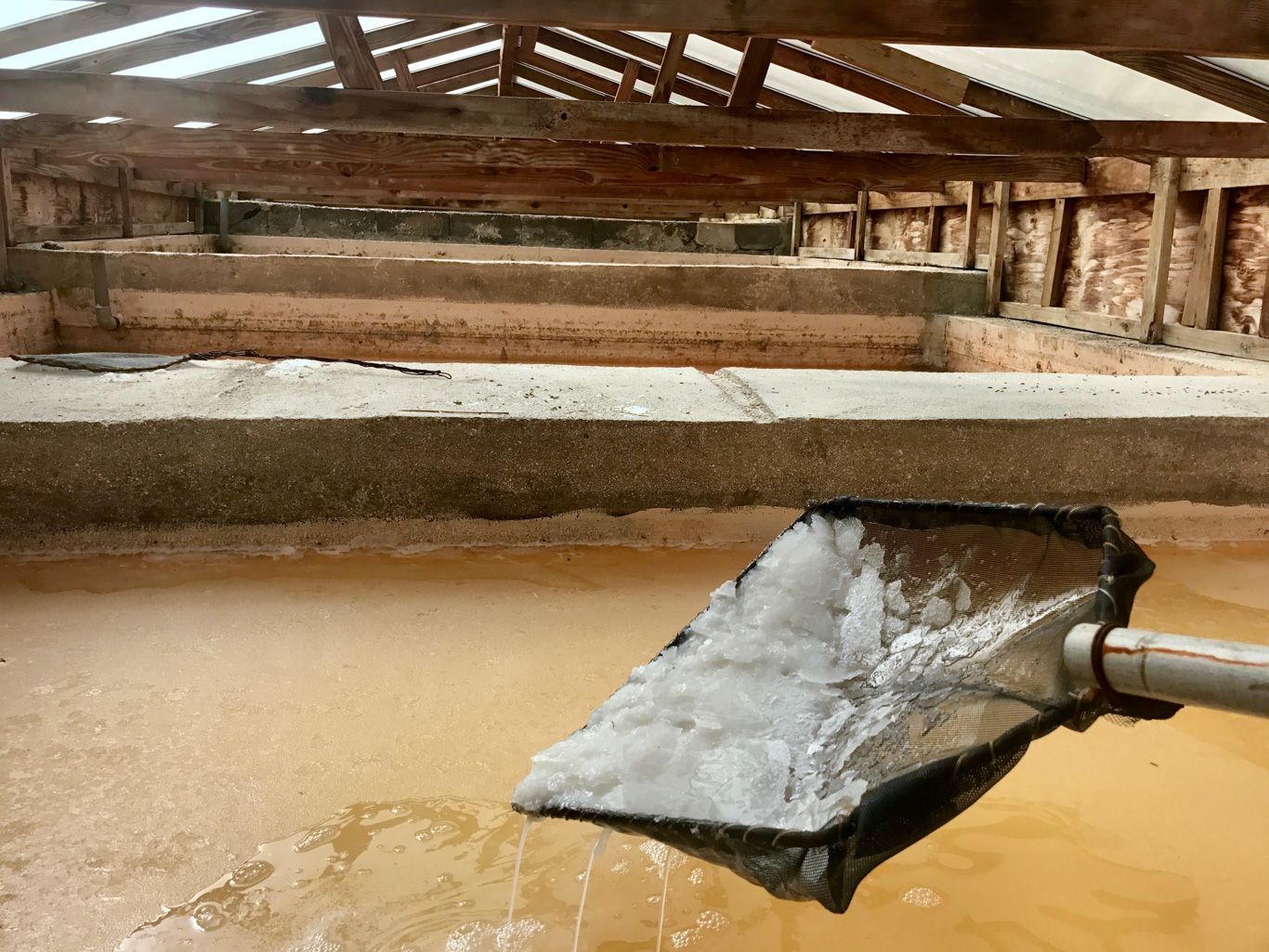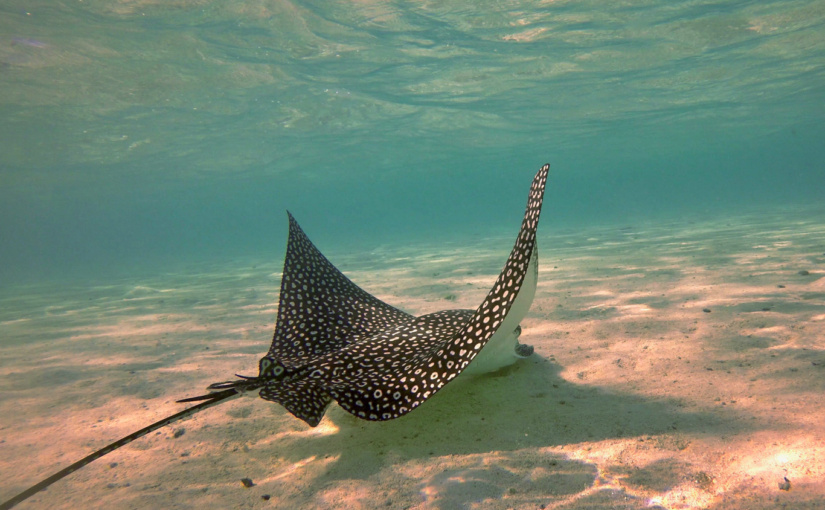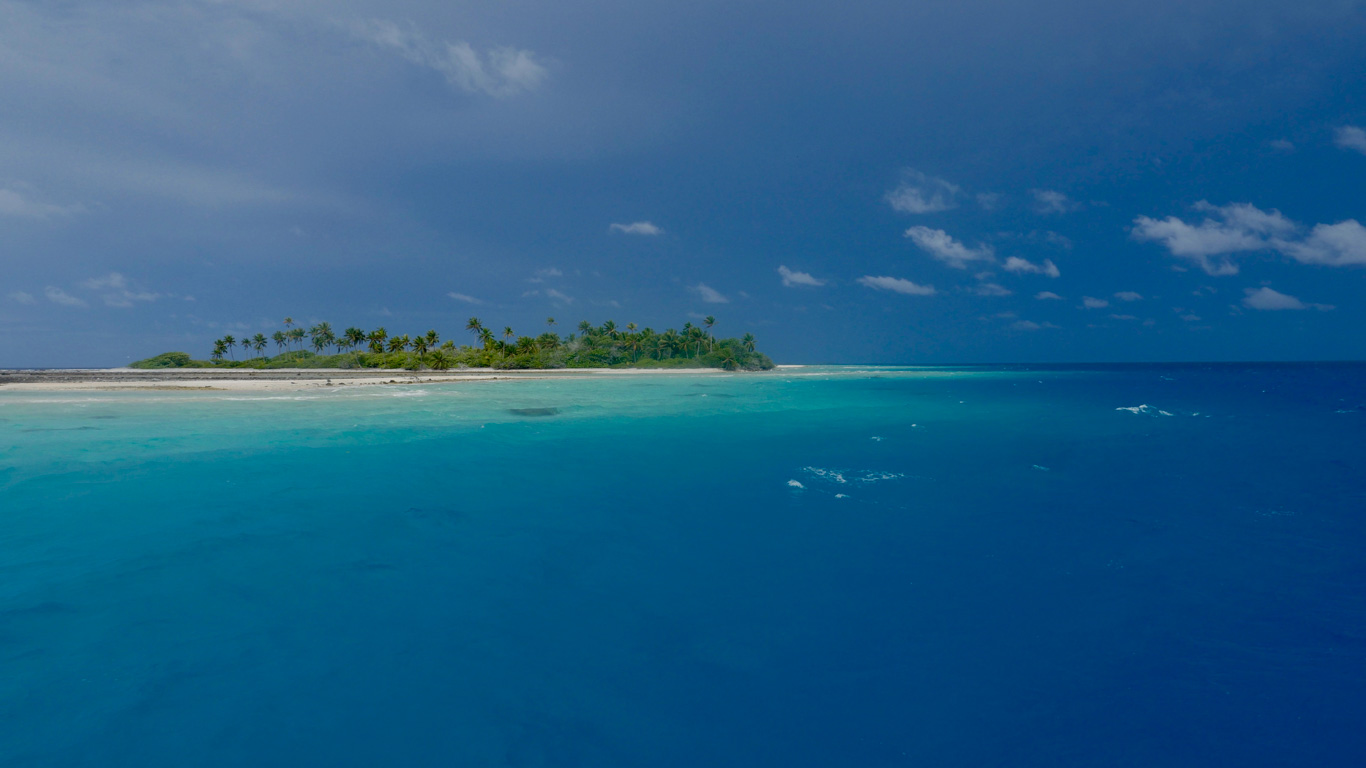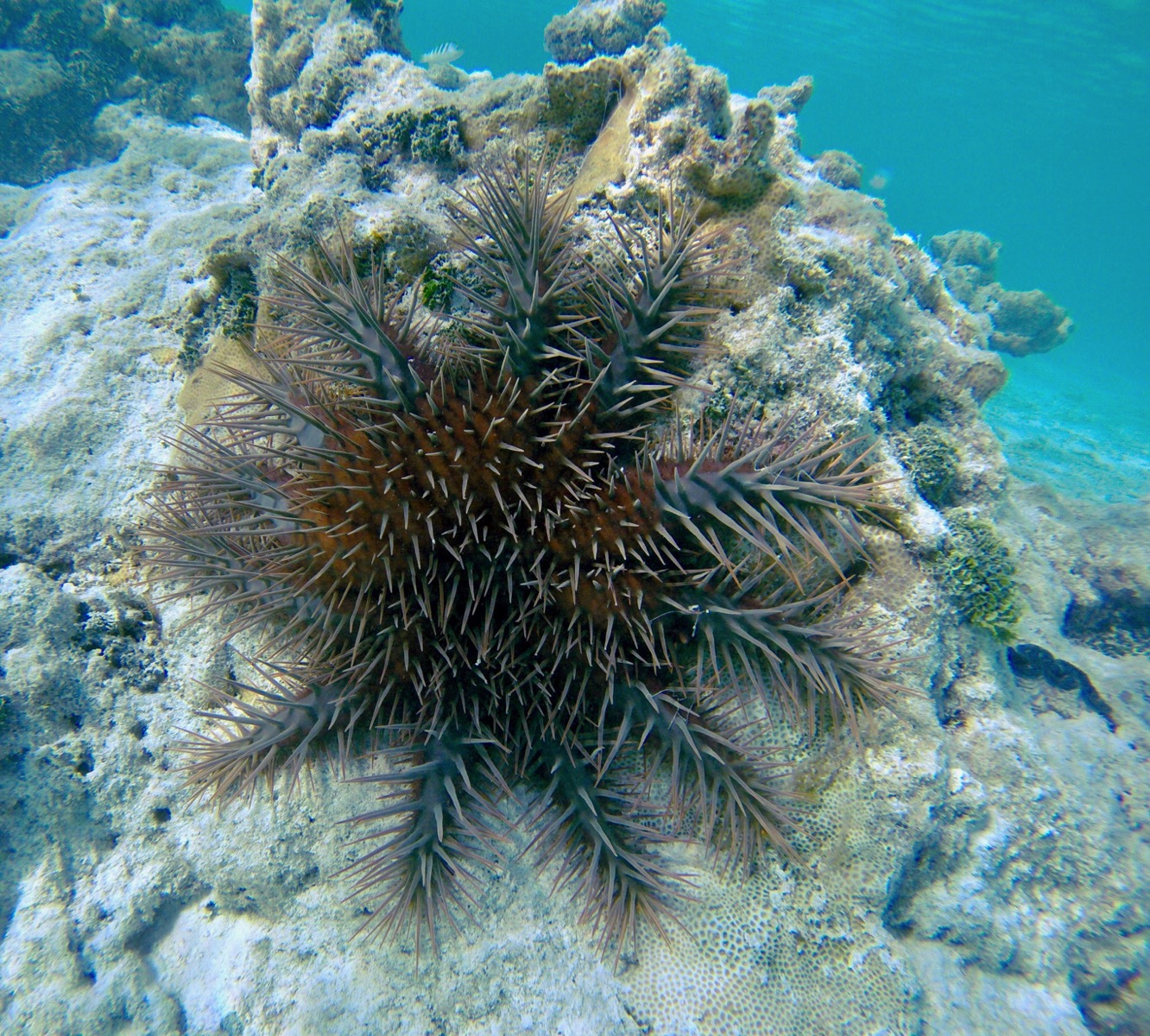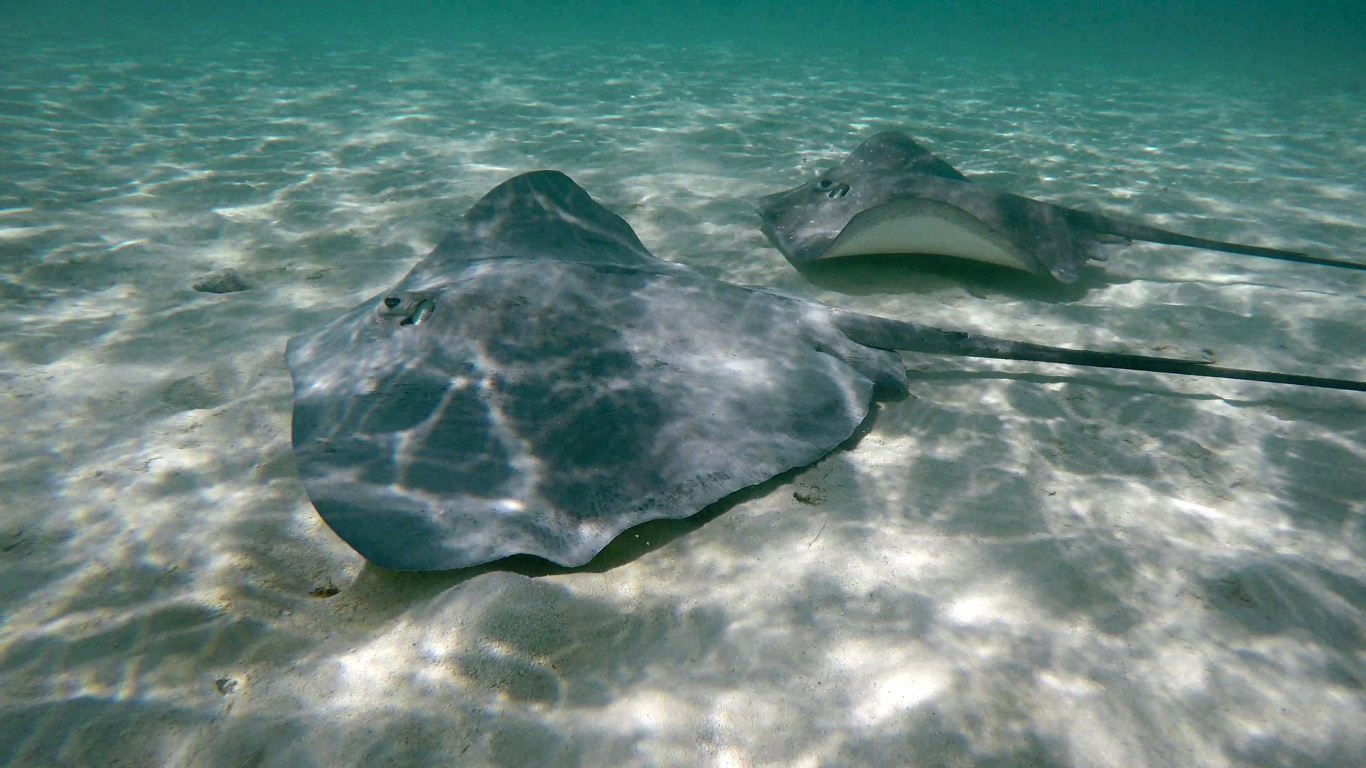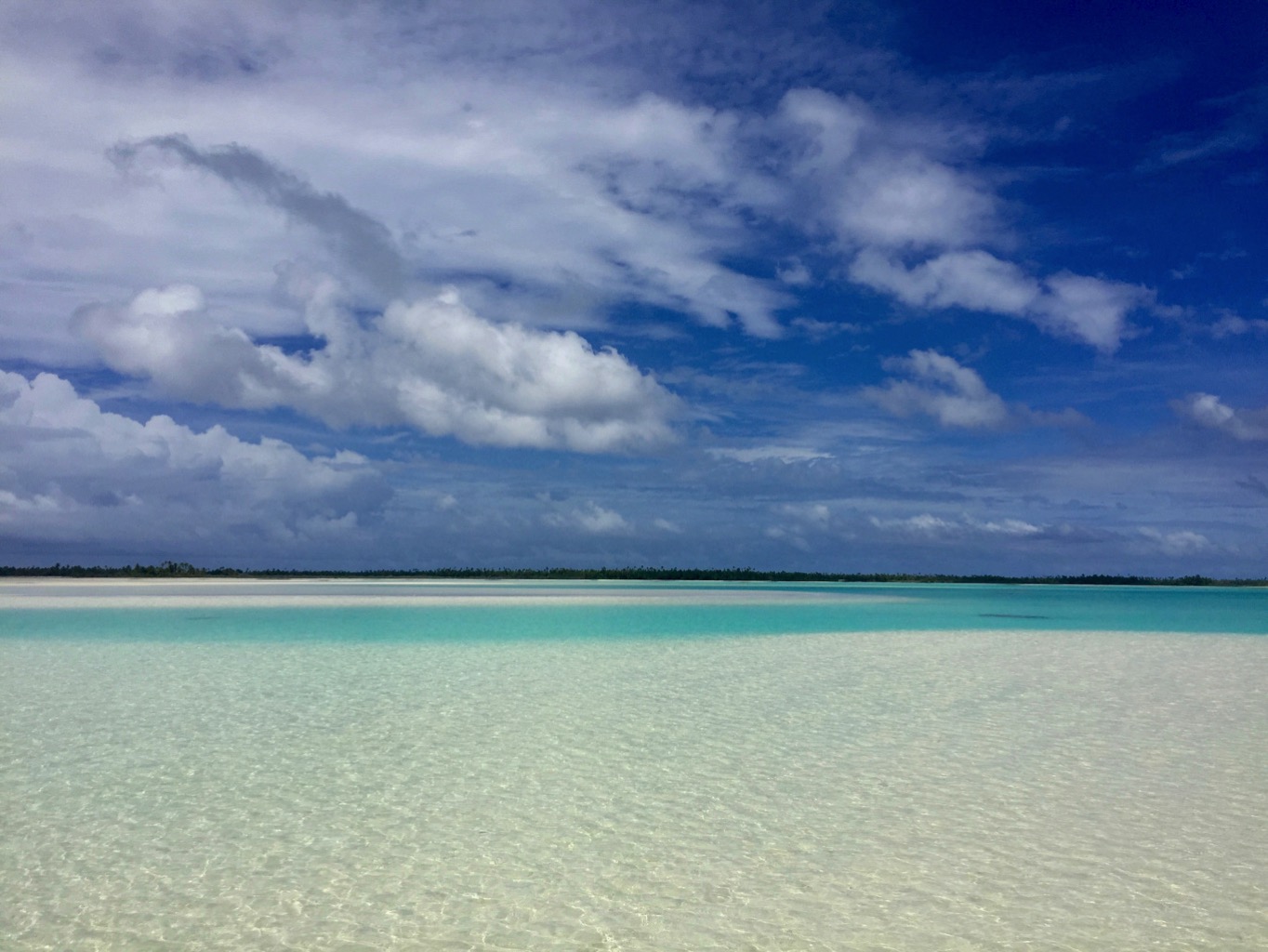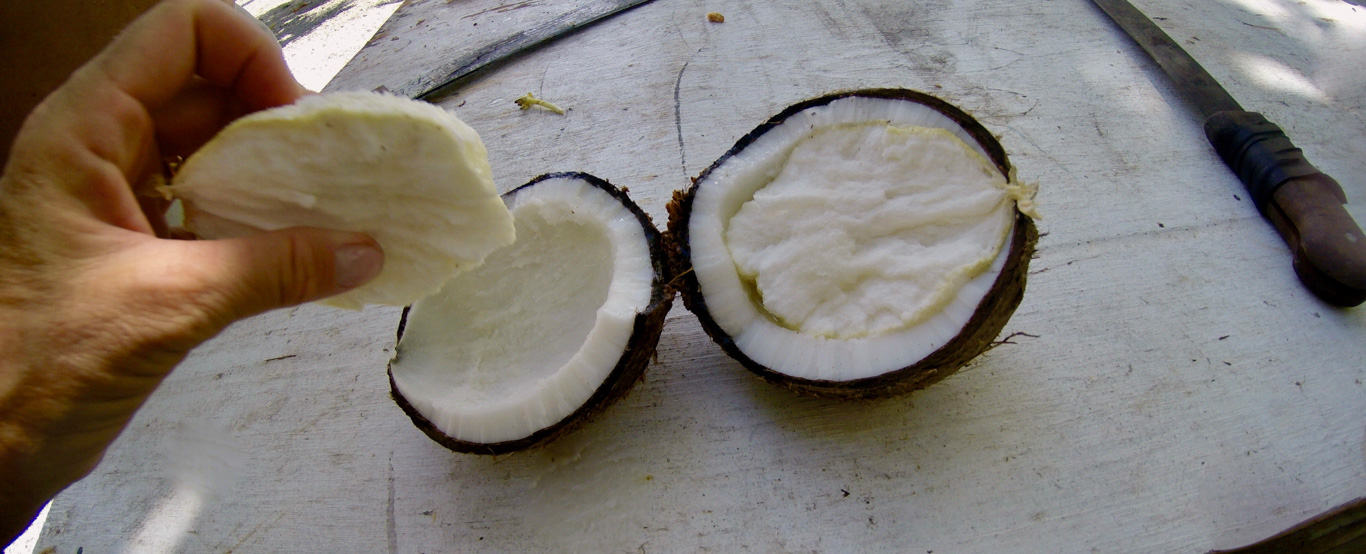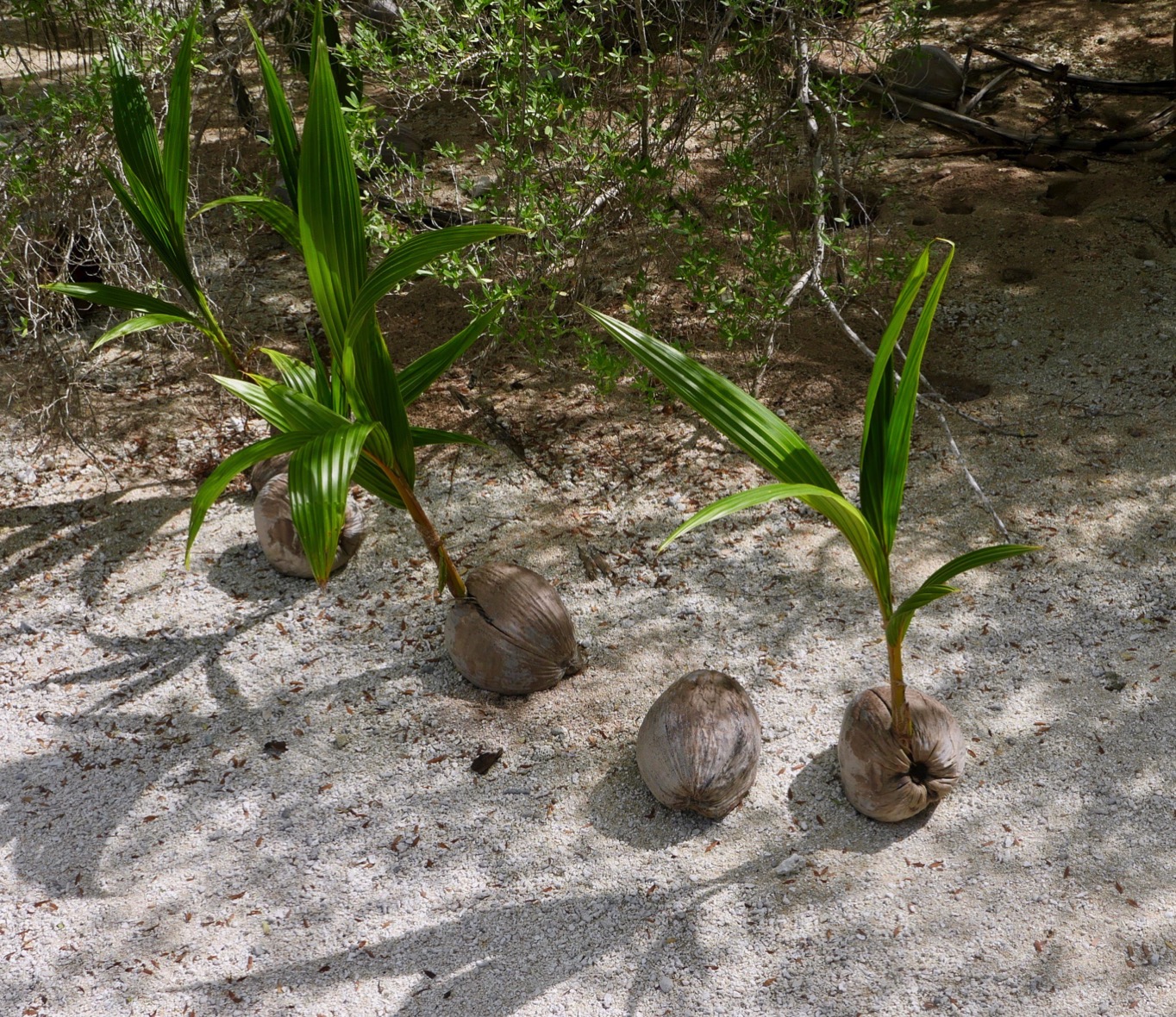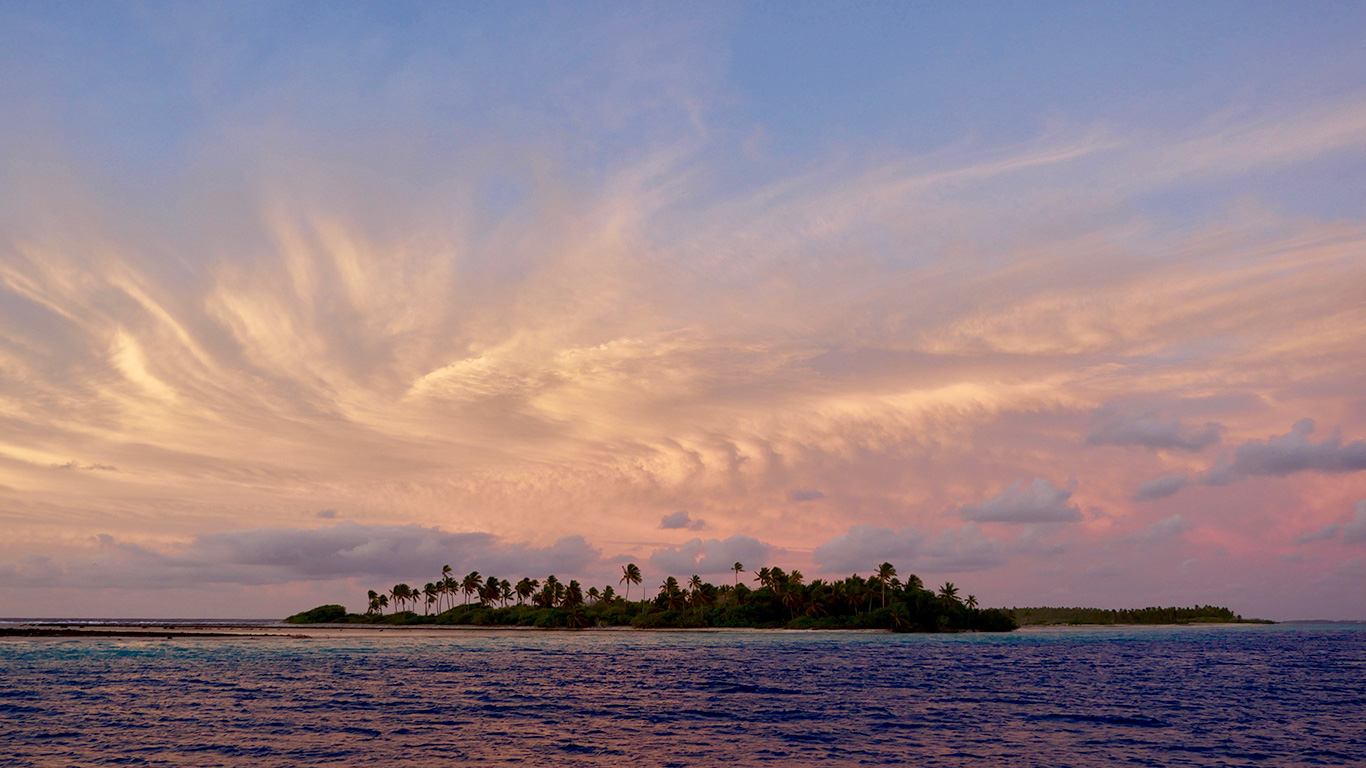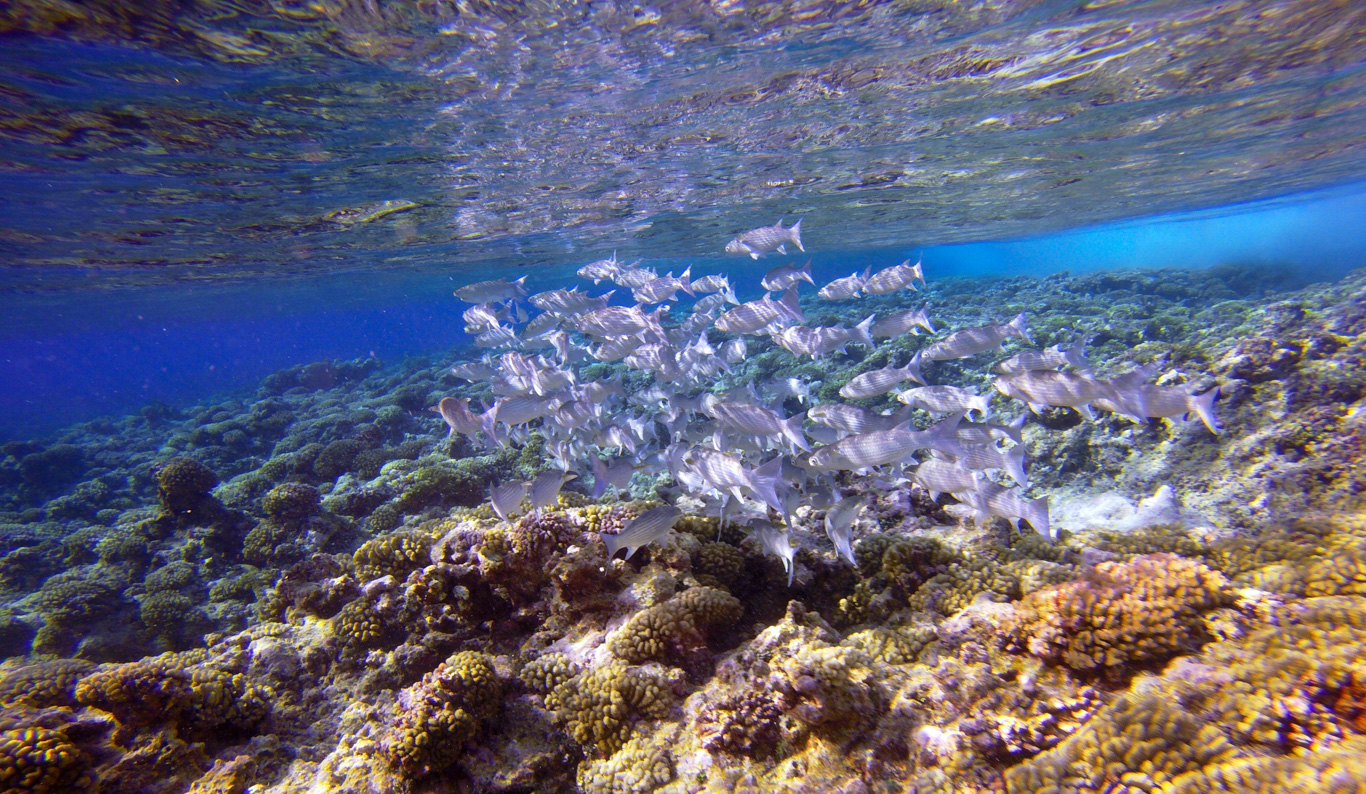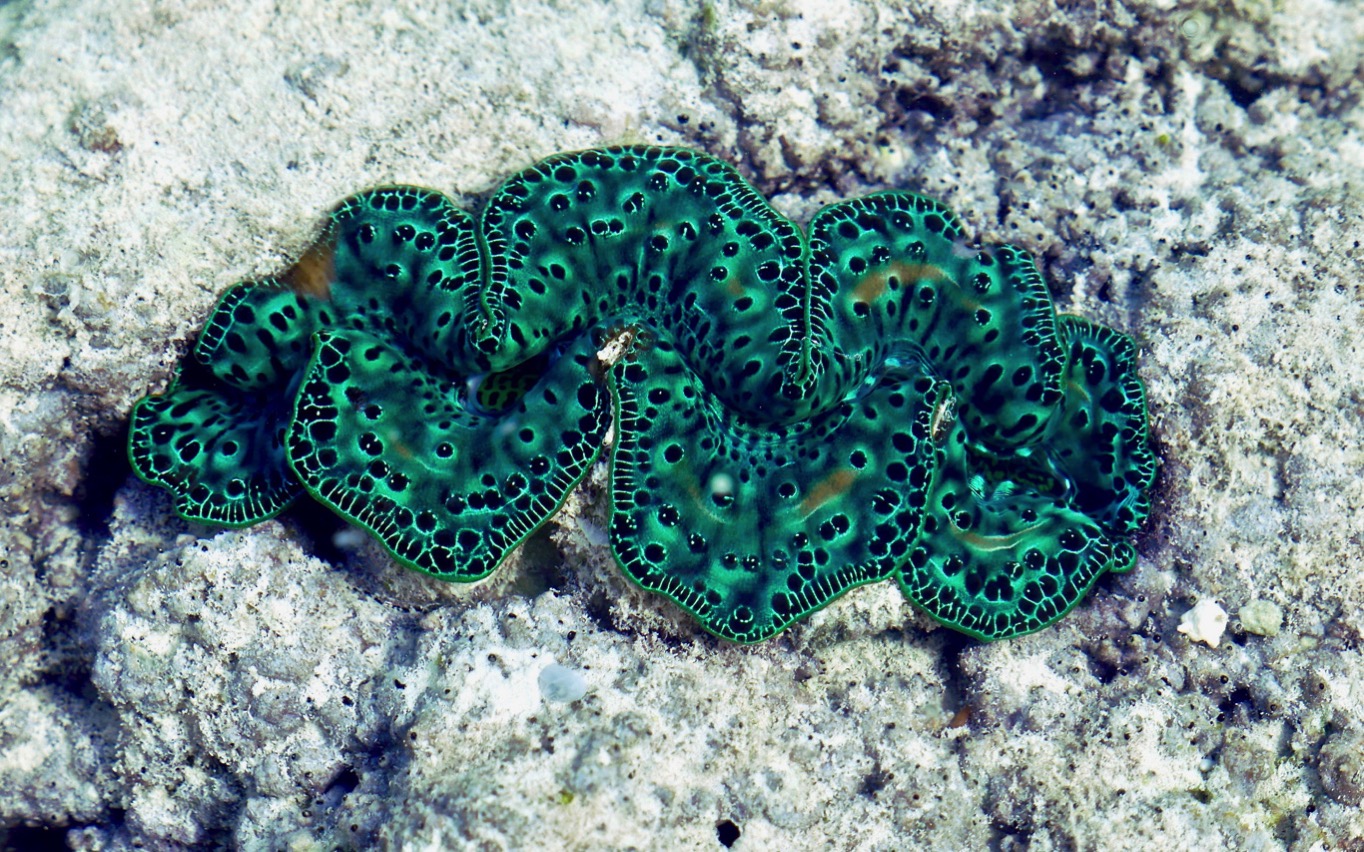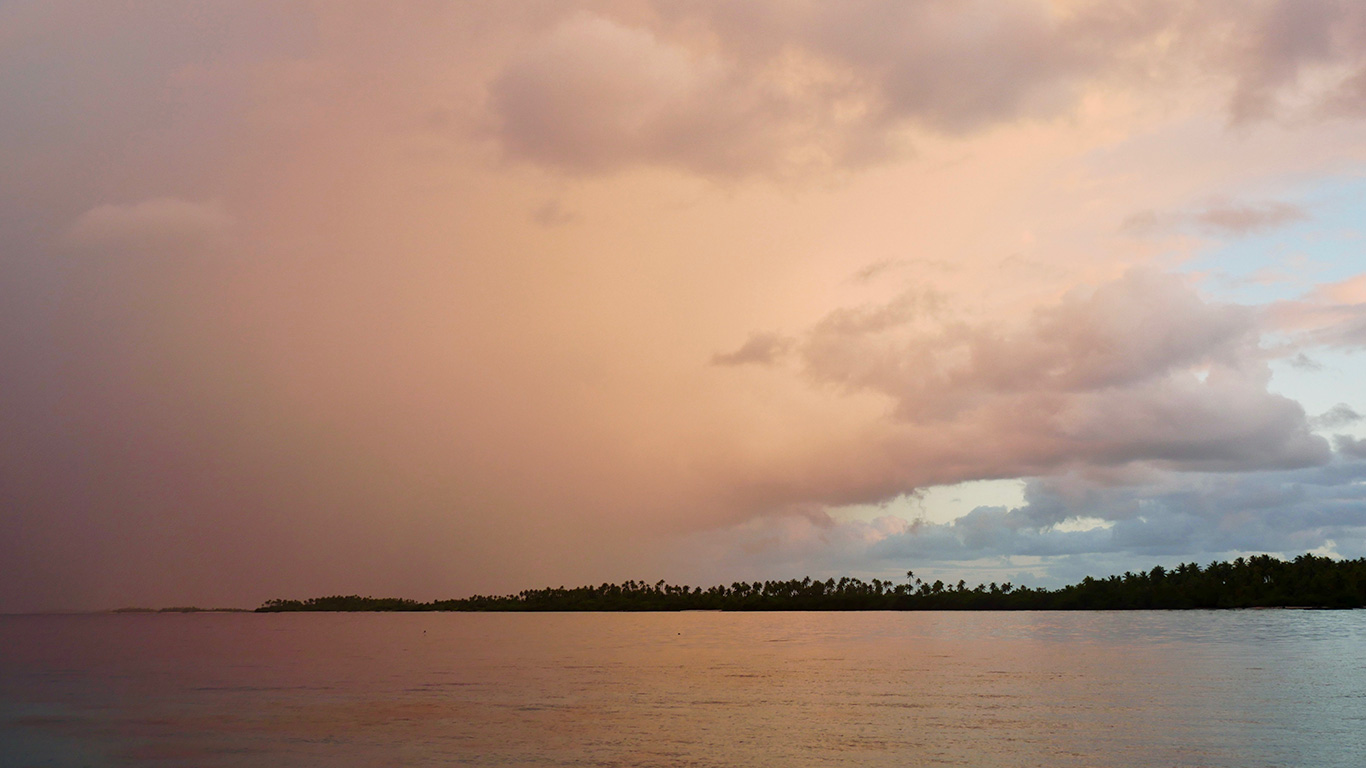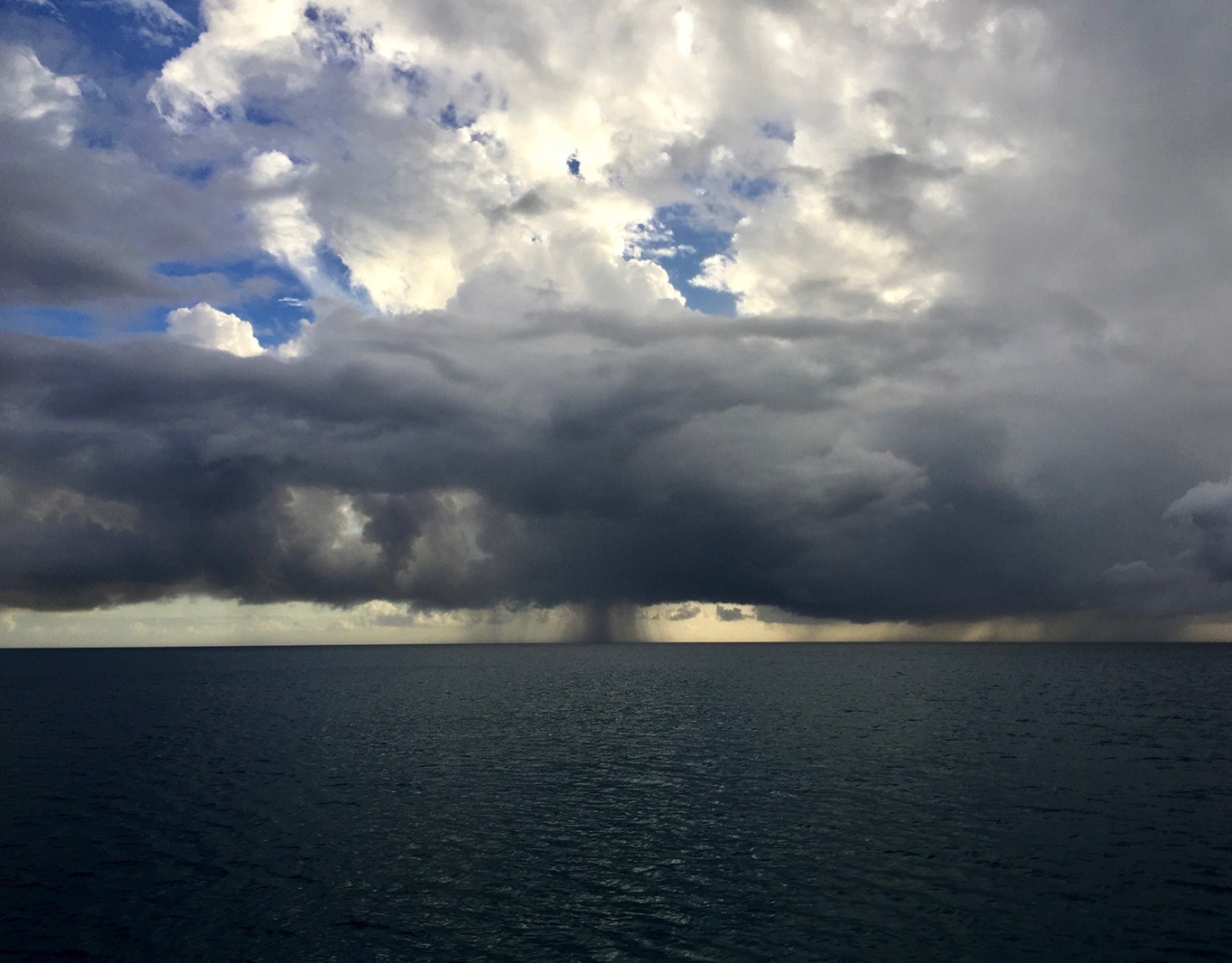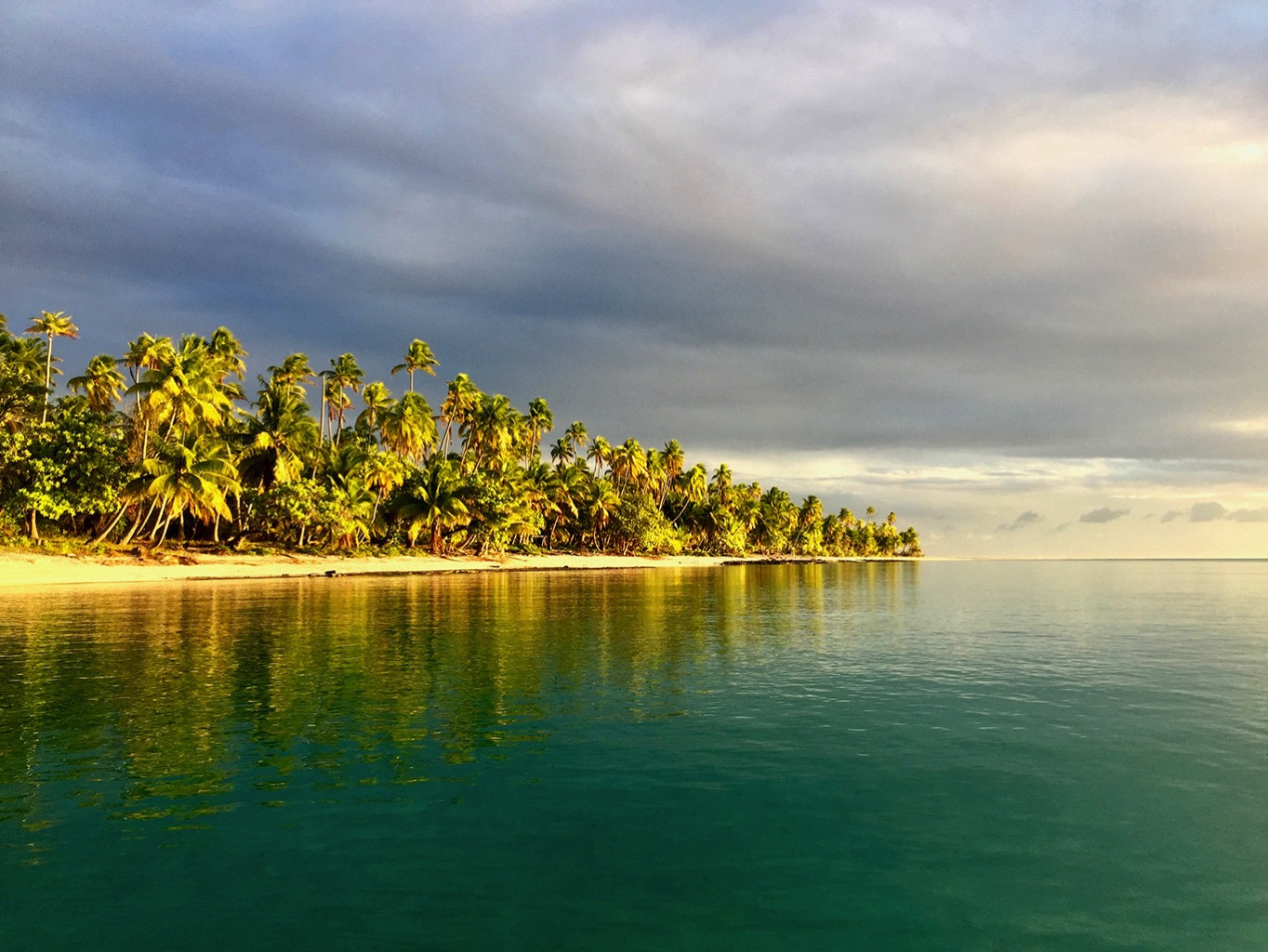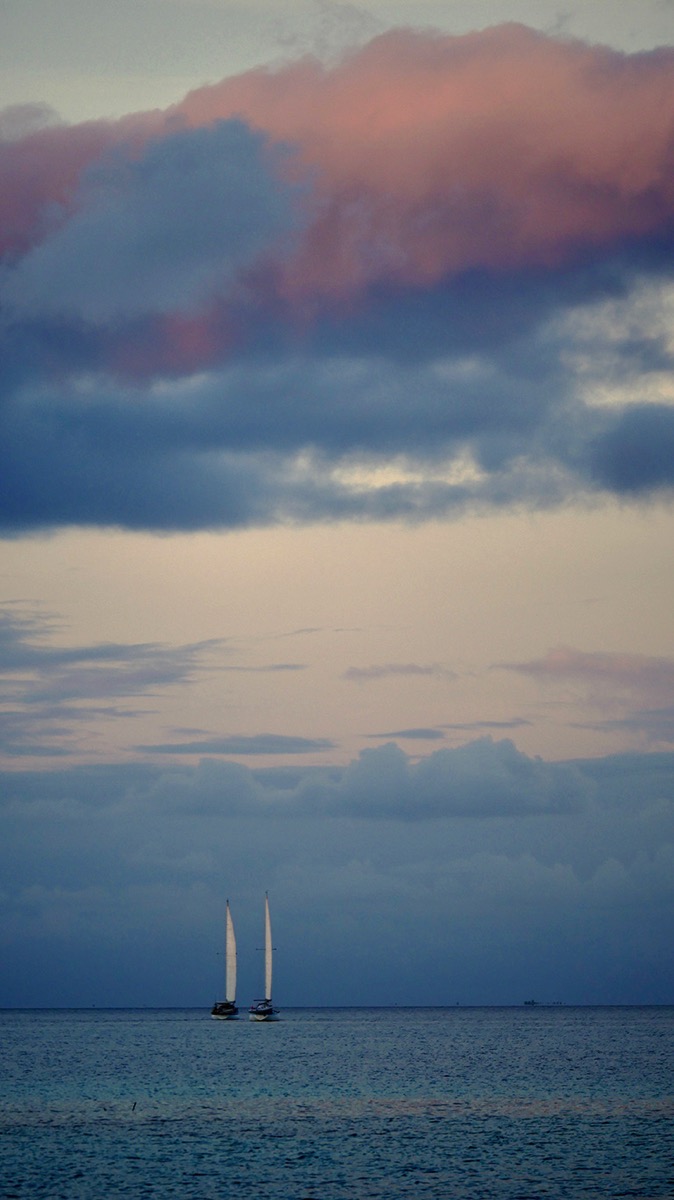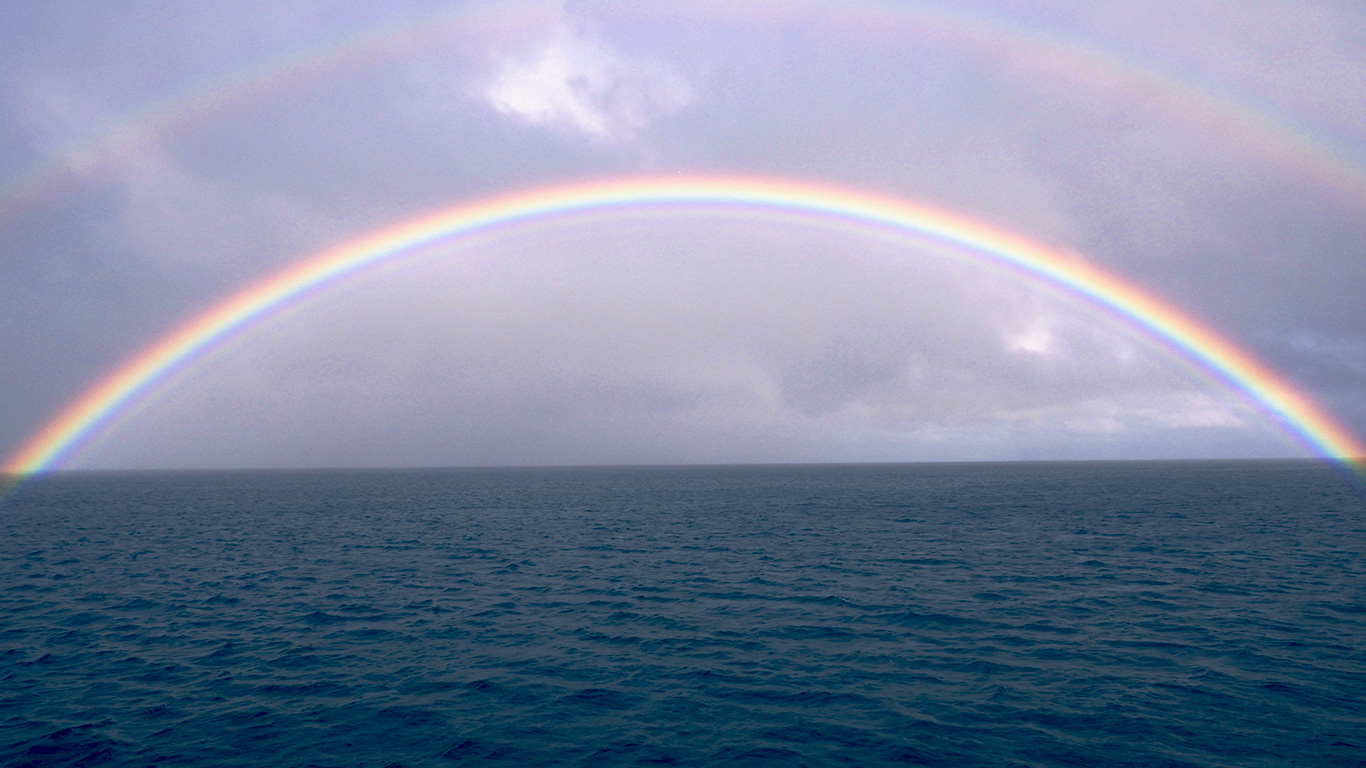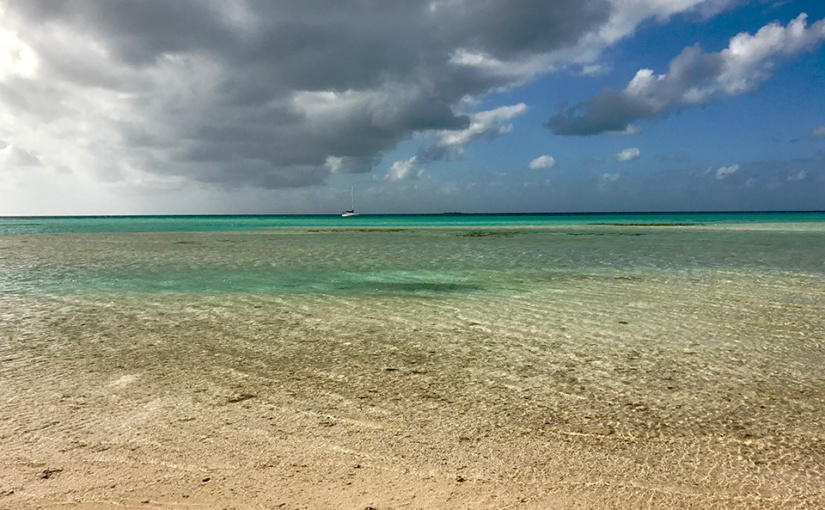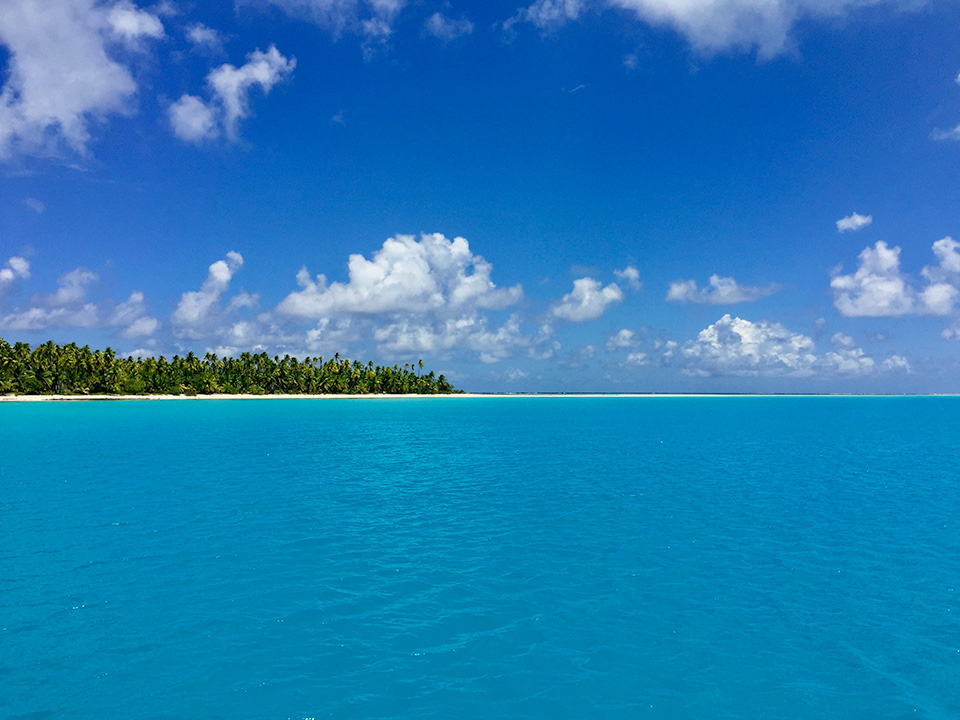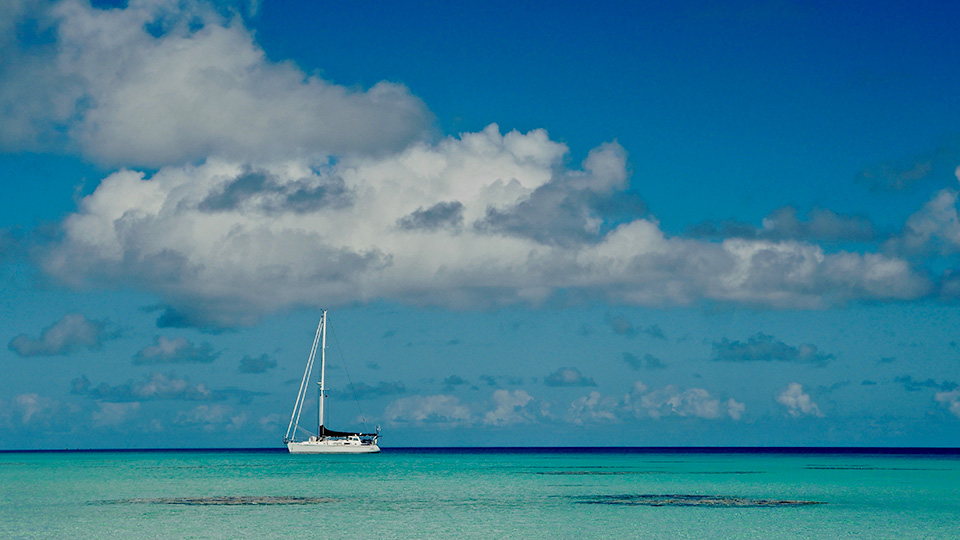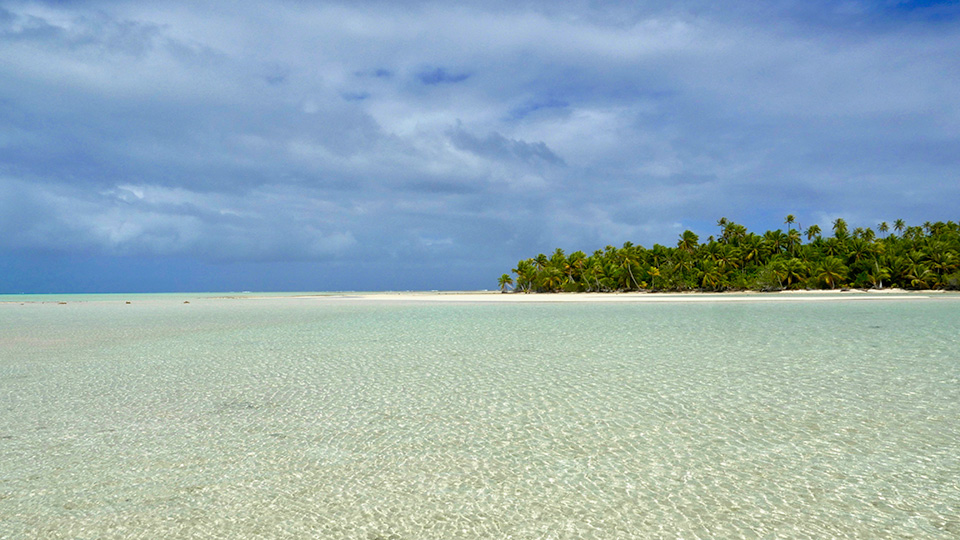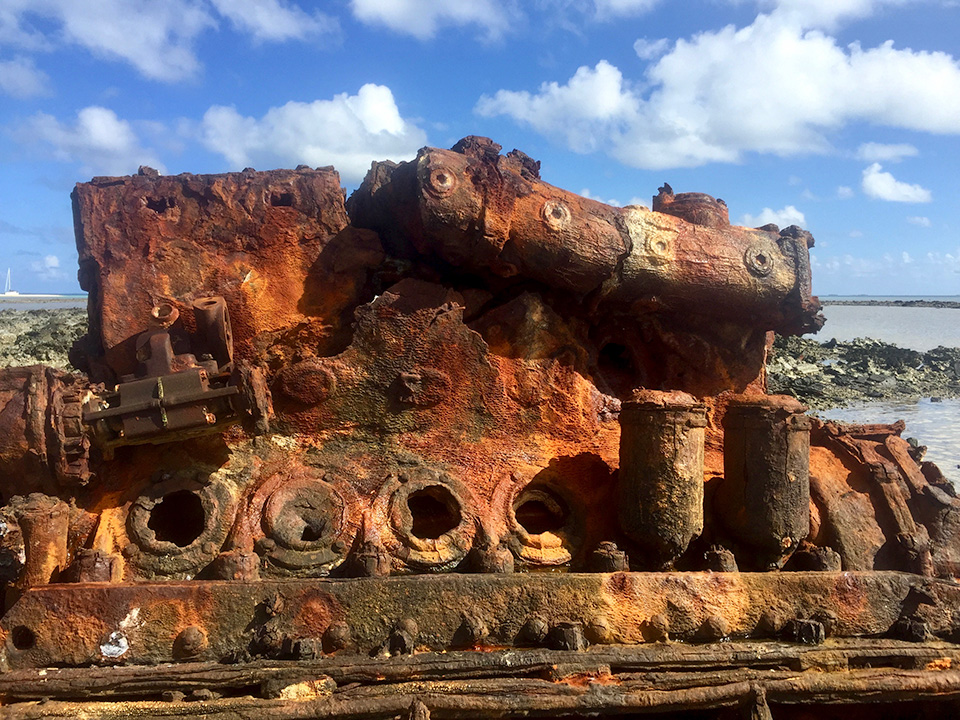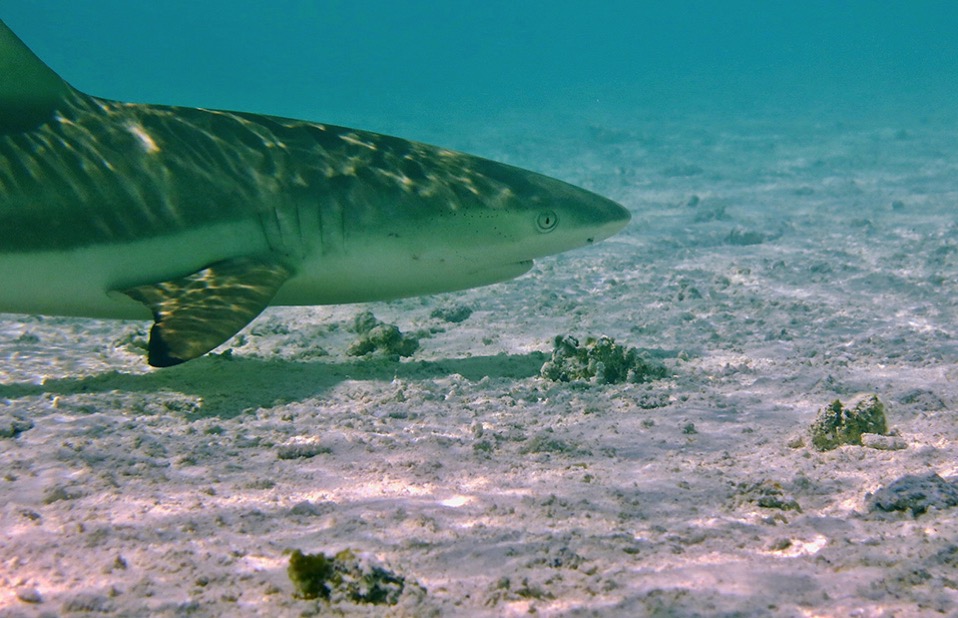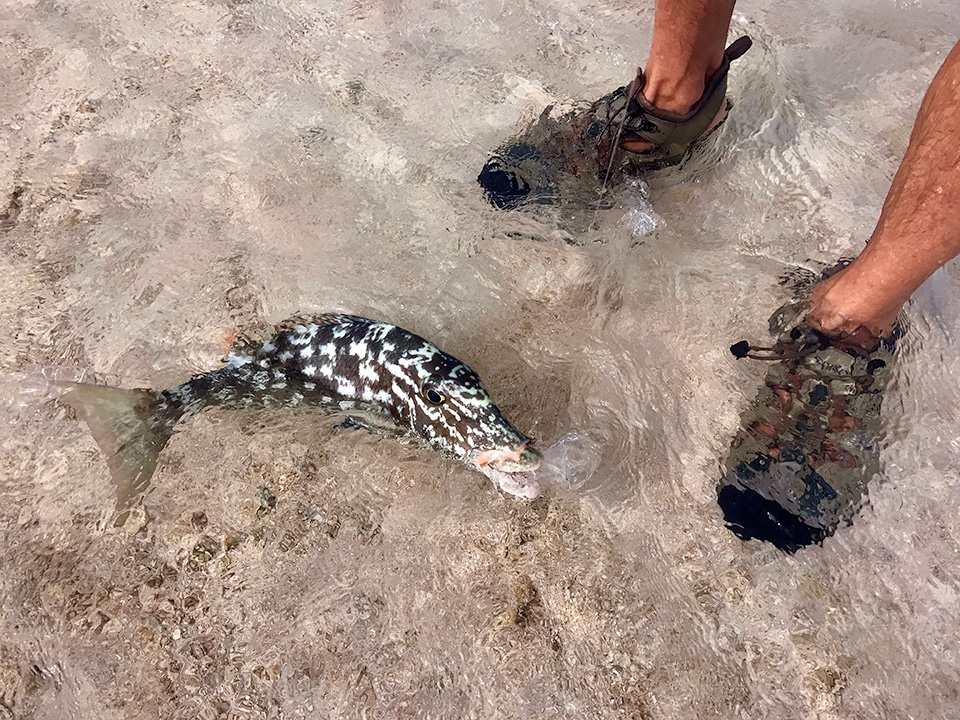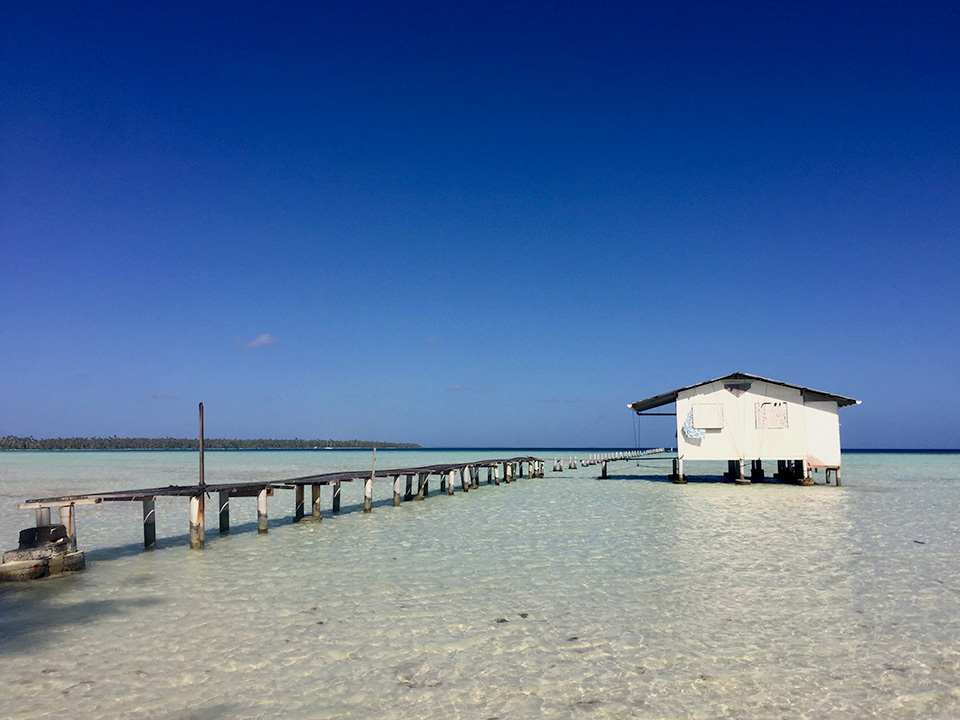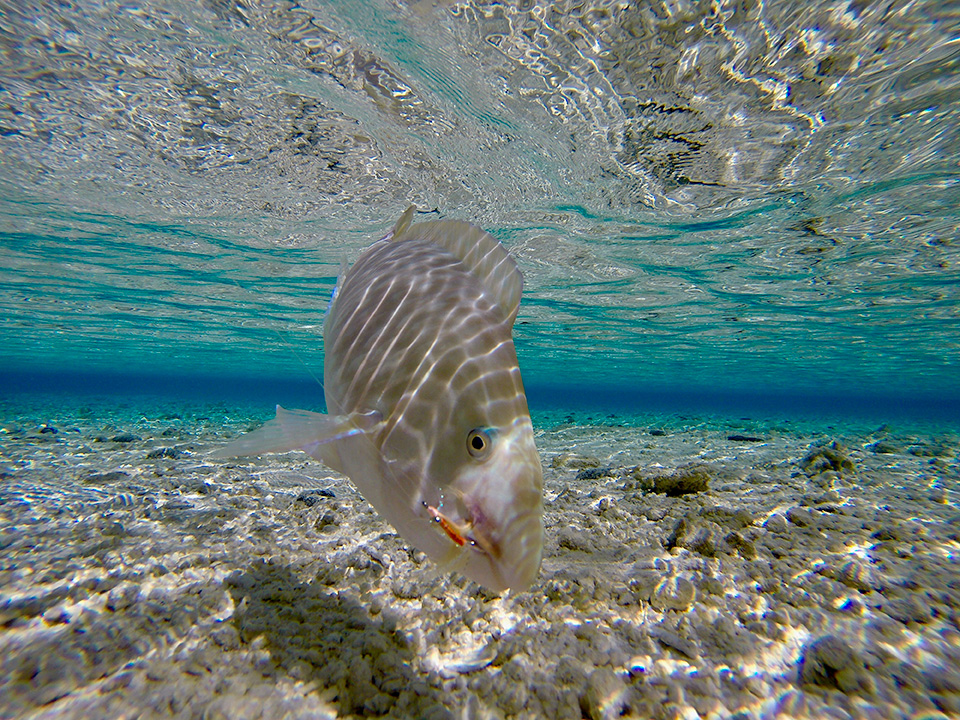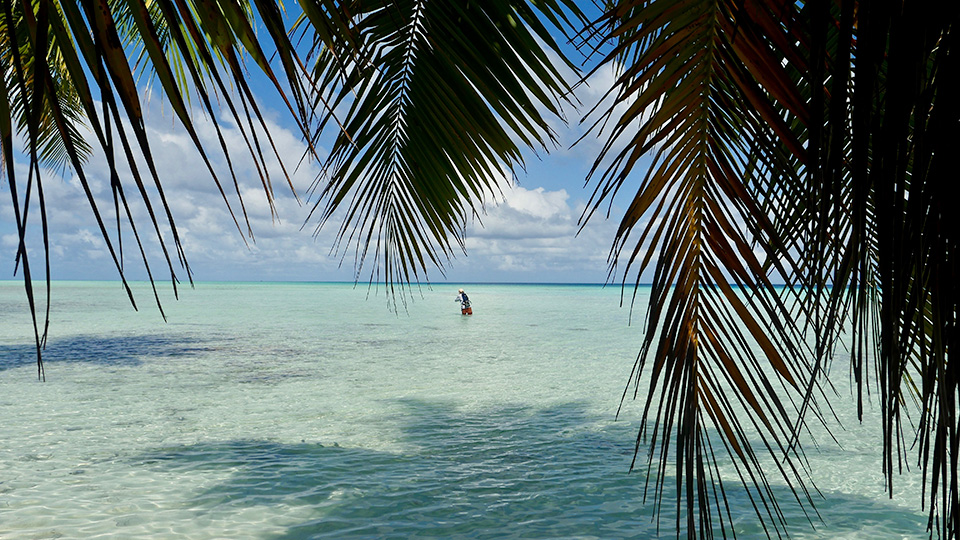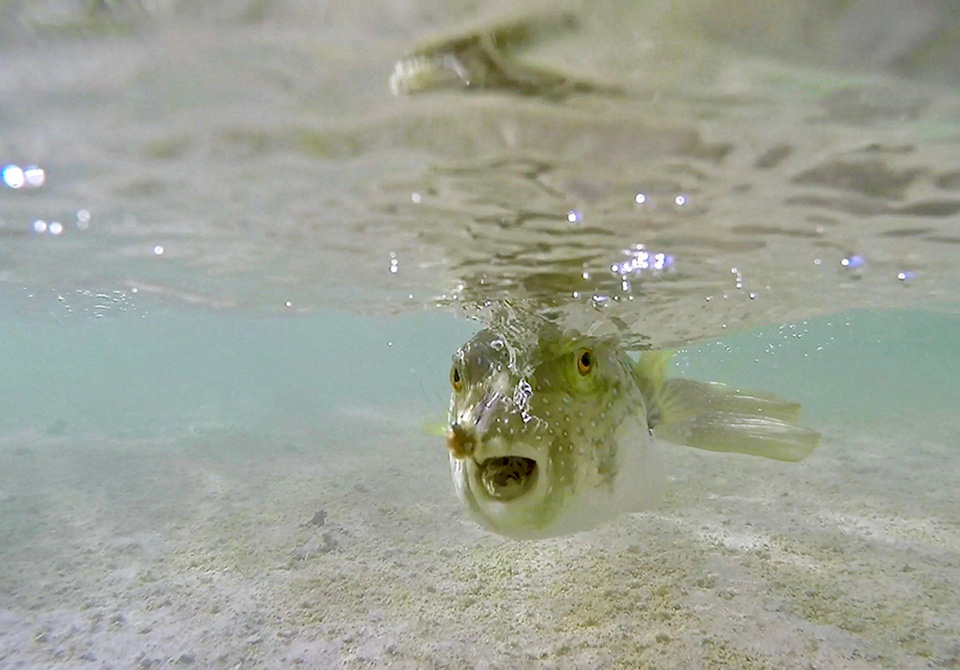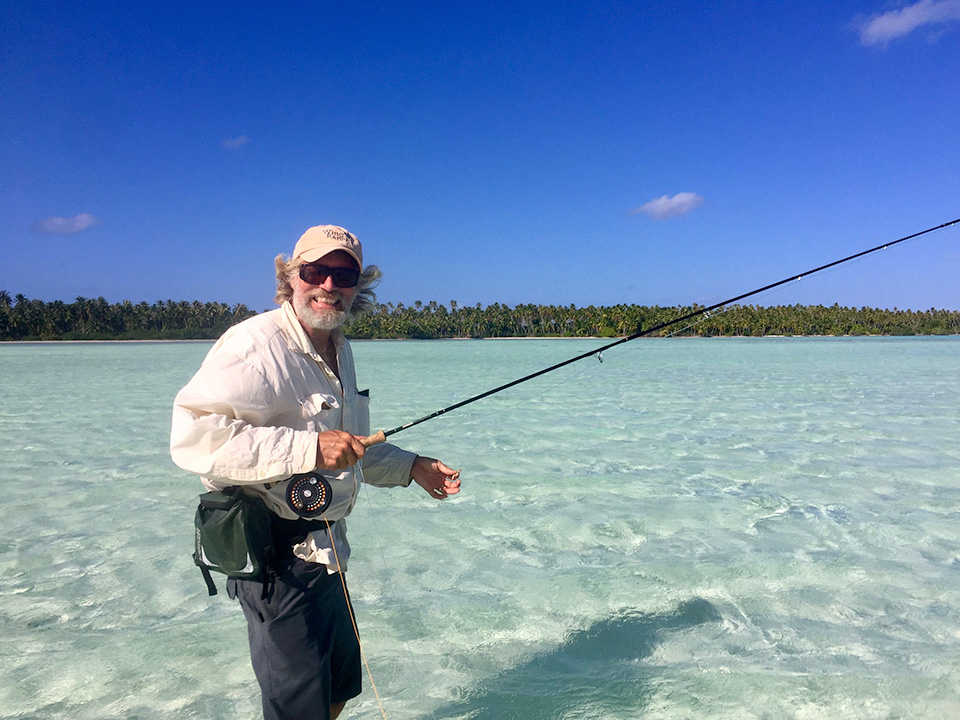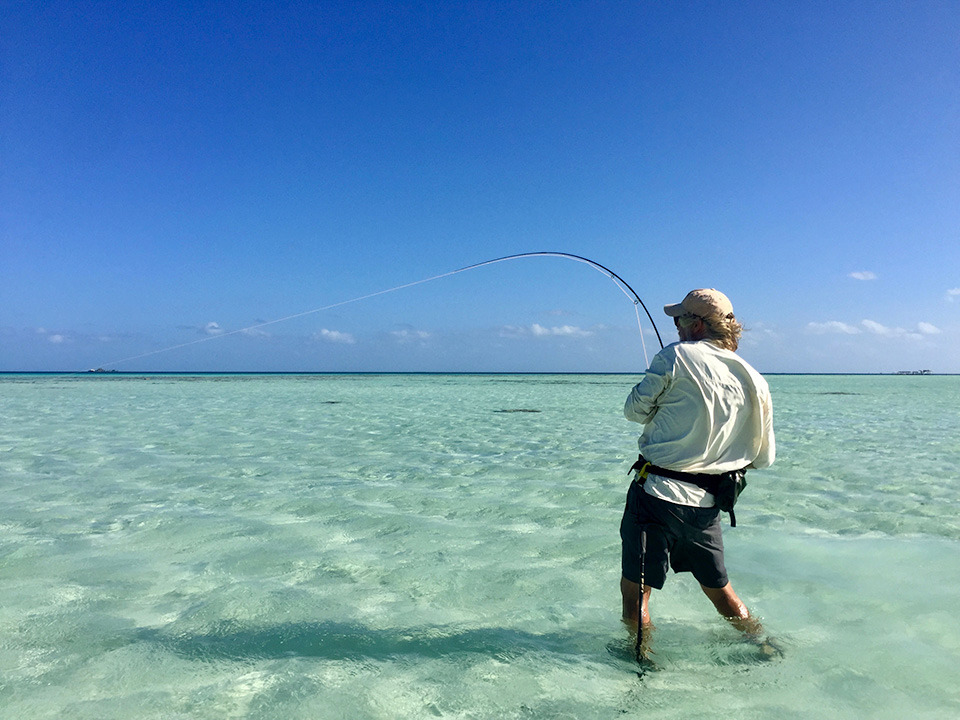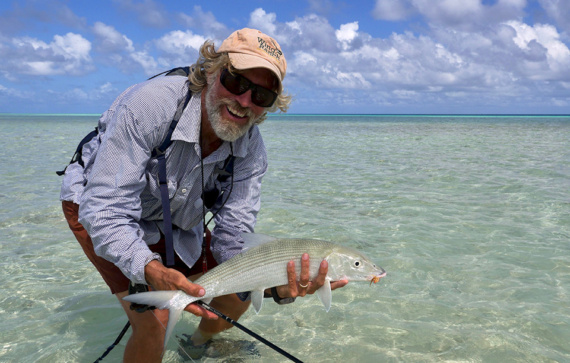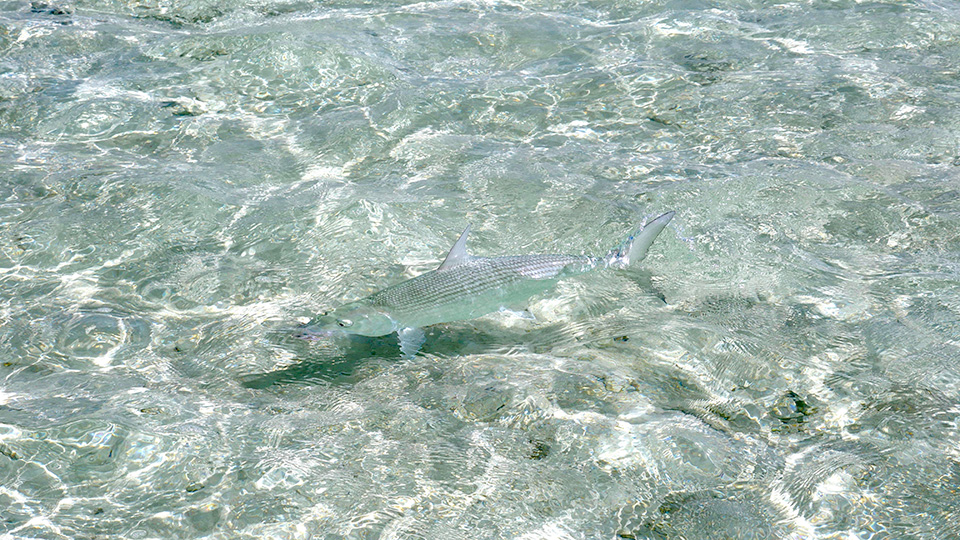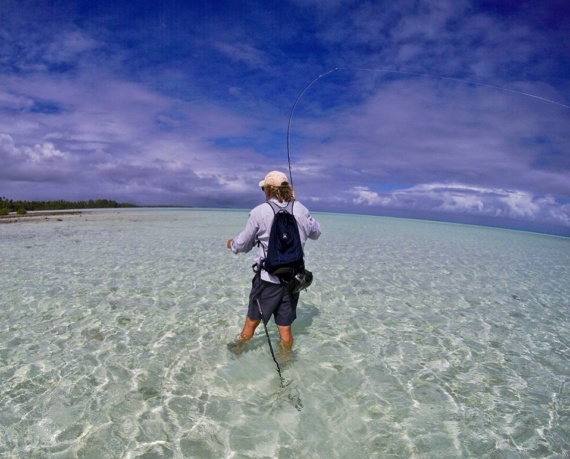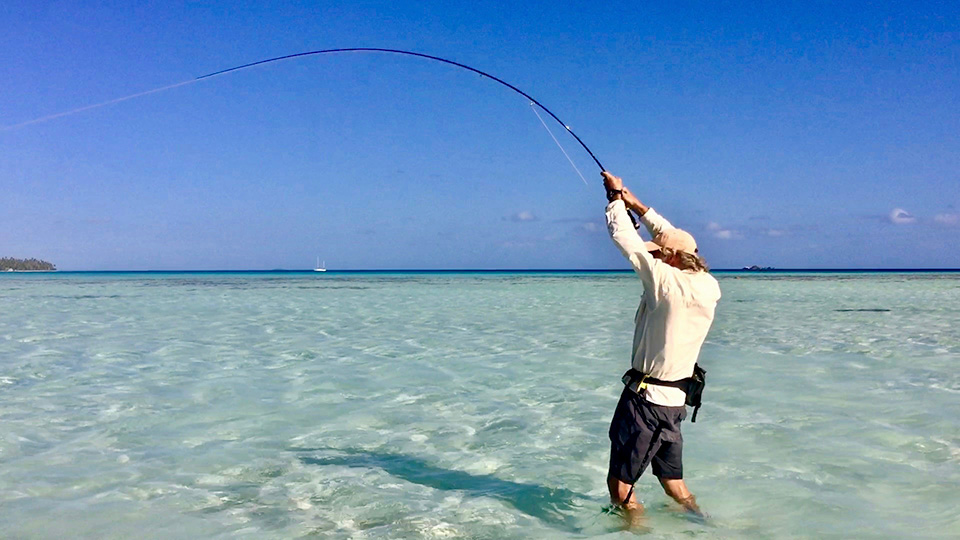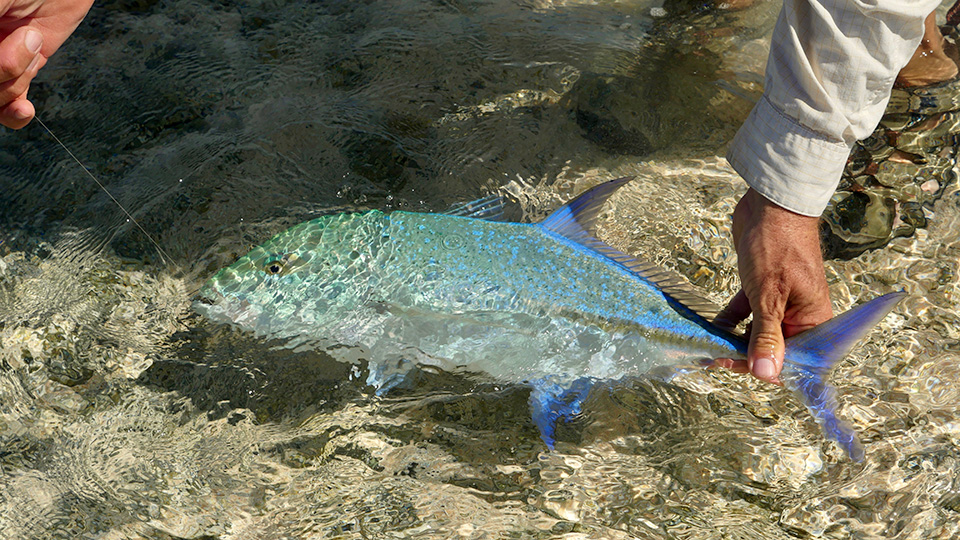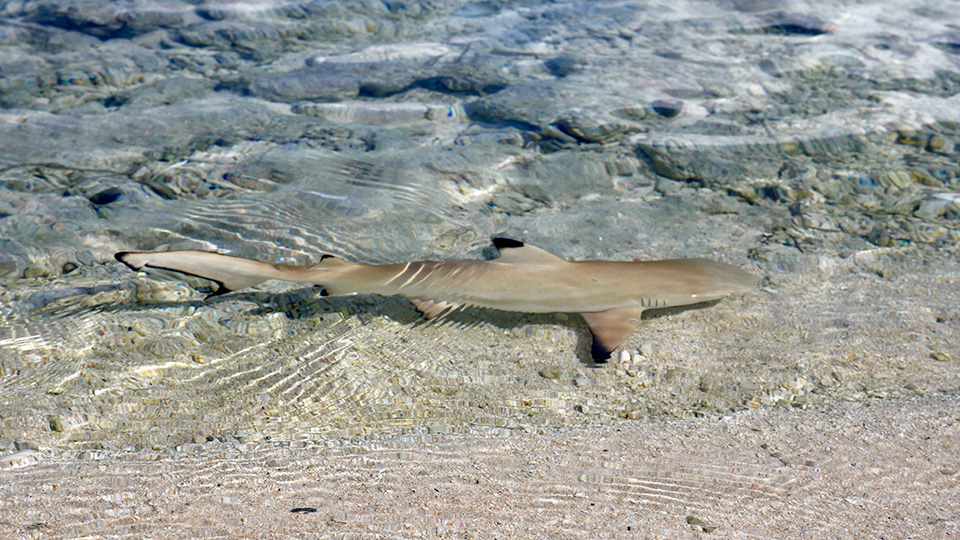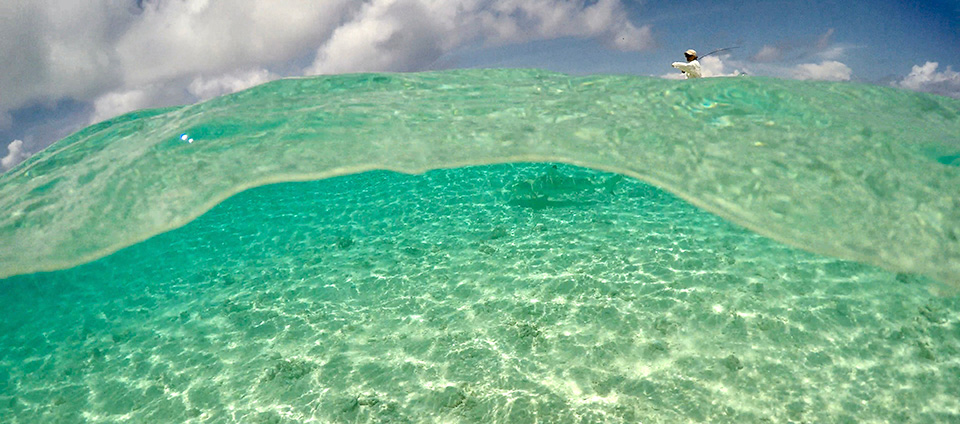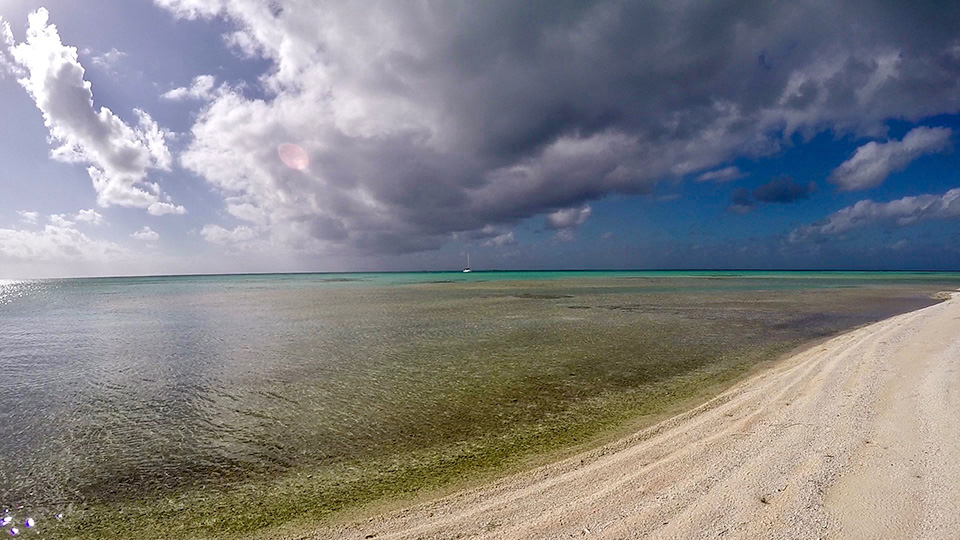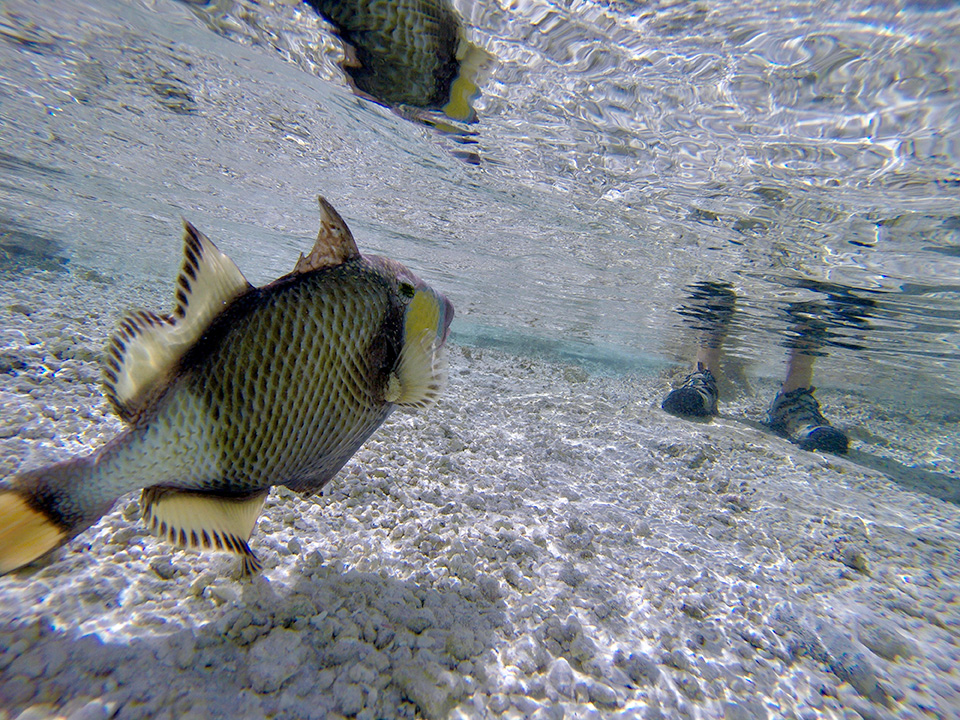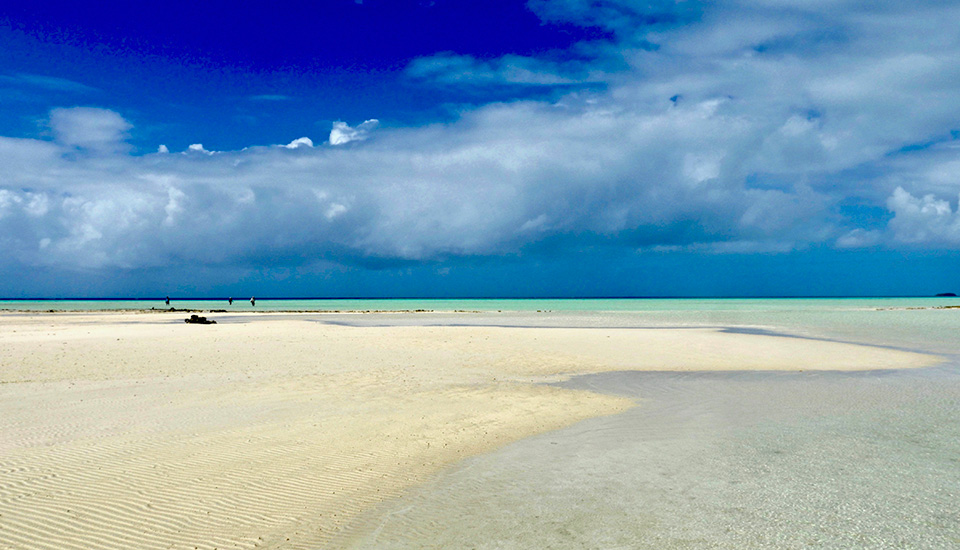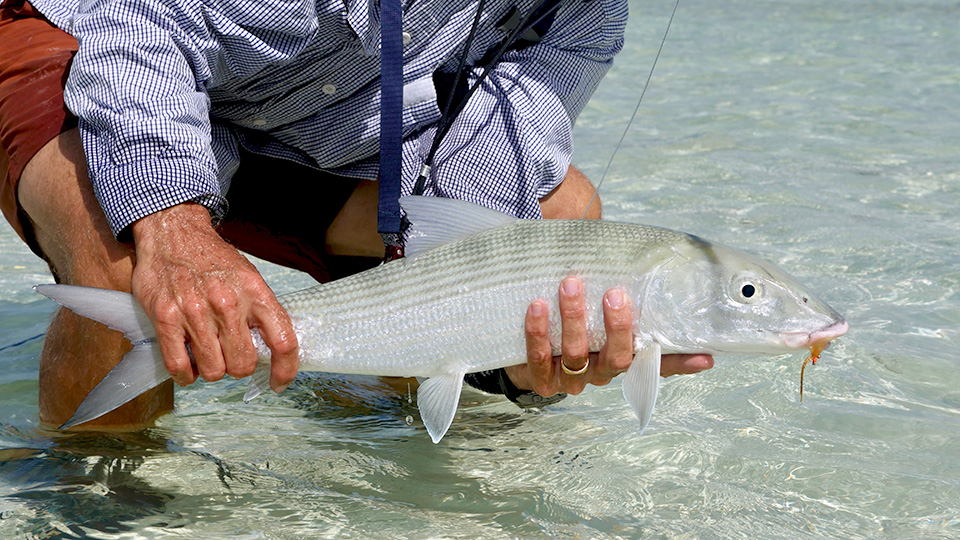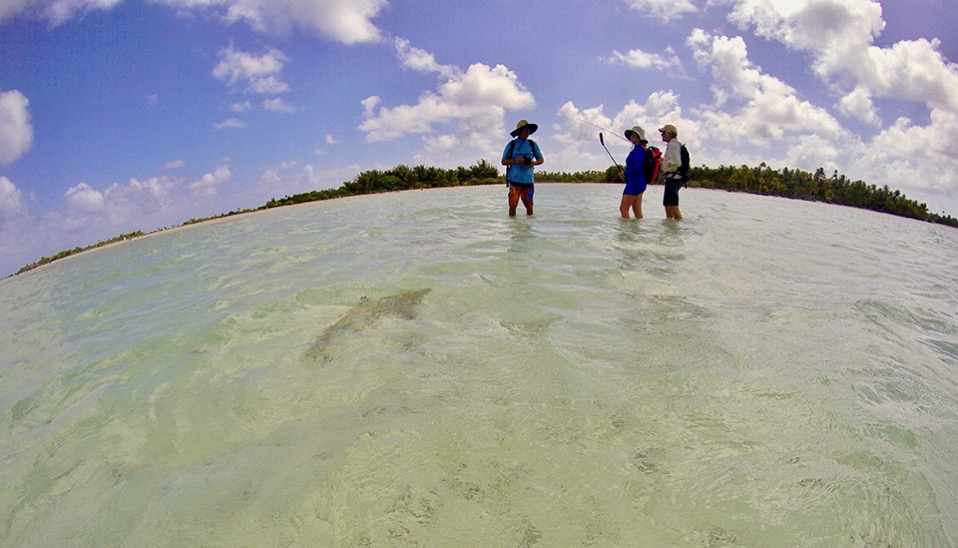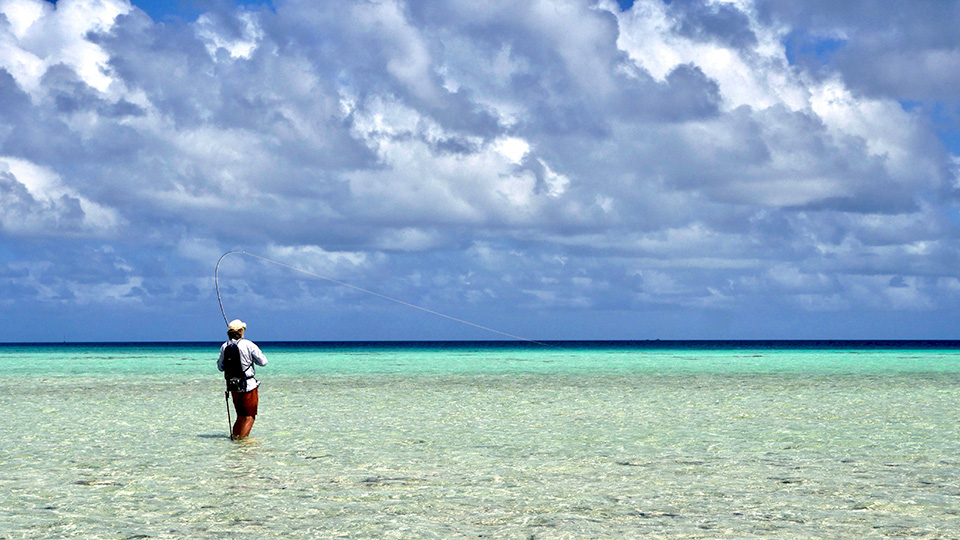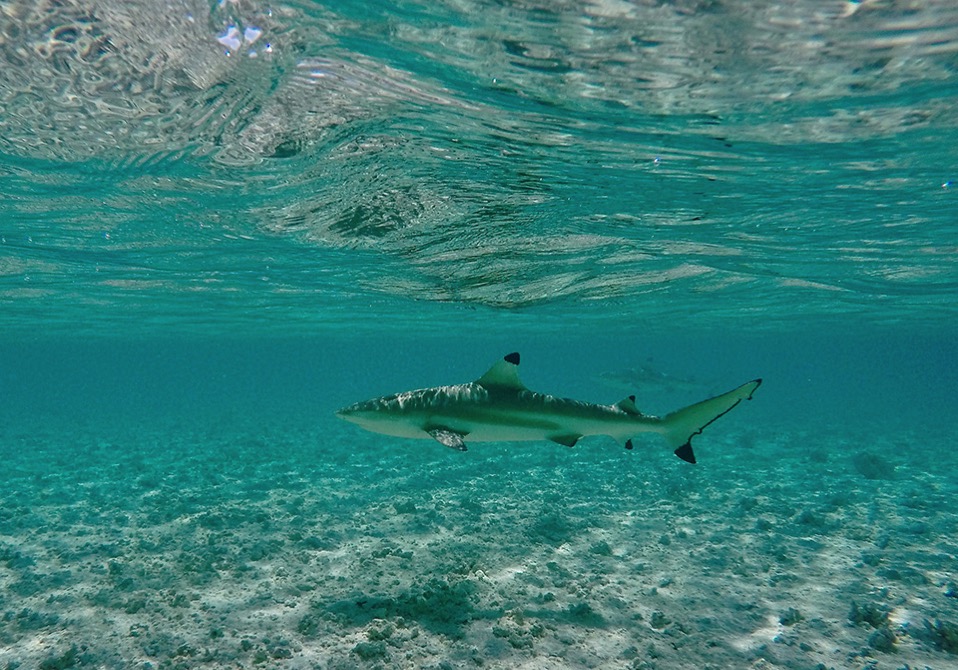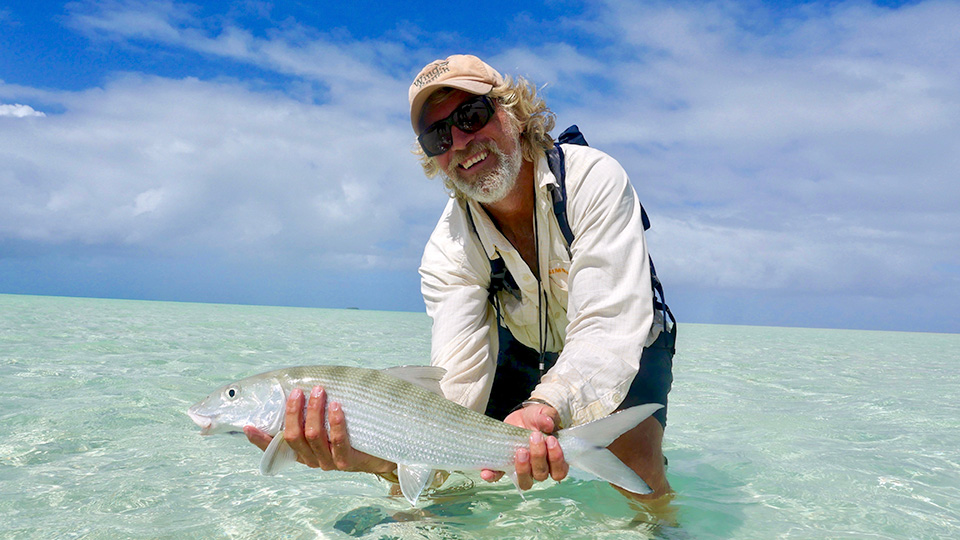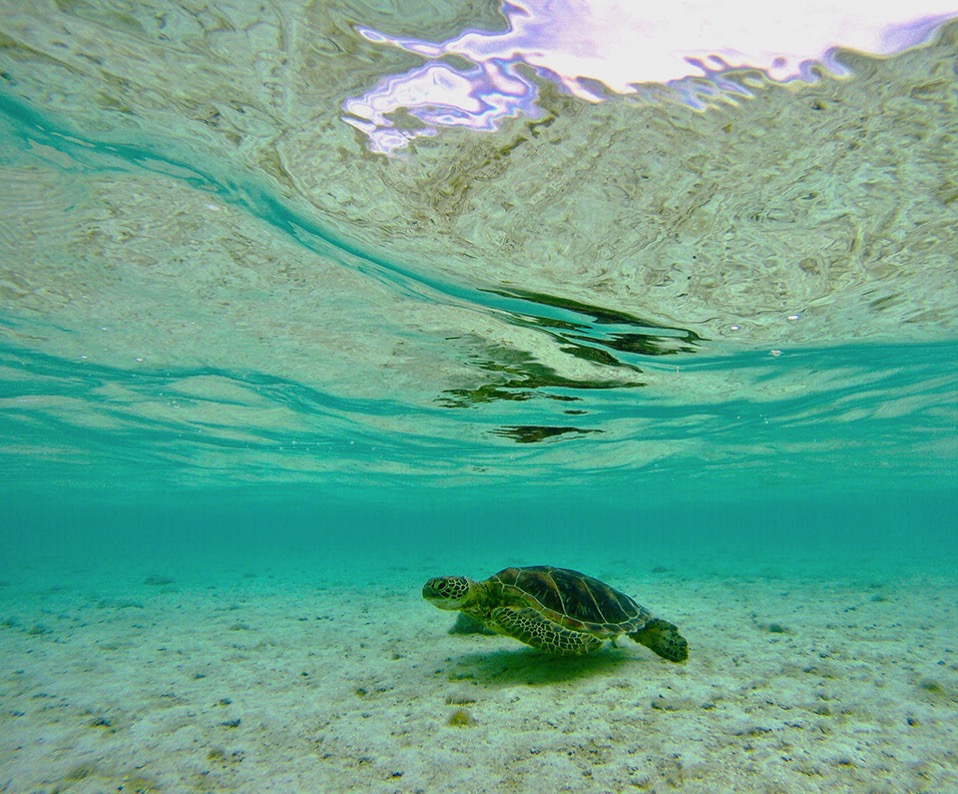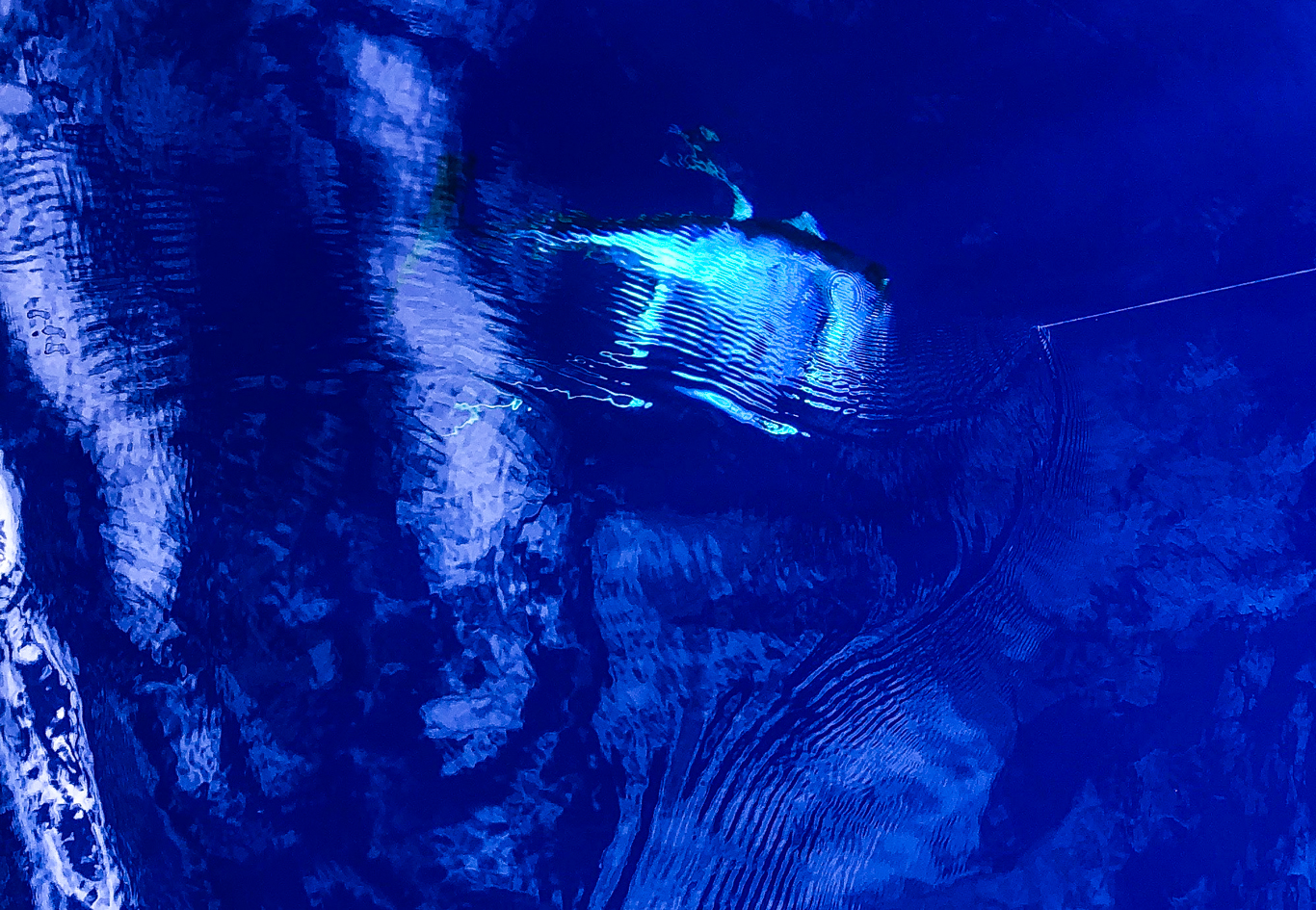 This magnificent fish appeared to us first as light
This magnificent fish appeared to us first as lighta silver flash, deeper than we dreamed we could perceive
rising Apollo of the Pacific
ancient enough to carry some scars
close in his iridescent skin, yellow blue purple and black
finely etched lines
how long had he been living in this wide sea
how many leagues of luminous ocean
glided by that scepter of yellow fins
 We are bruised, but he lost his life
We are bruised, but he lost his lifewe have food, he is gone
confounded by a line, a hook to his jaw
his moment of victory,
crushing his prey, fouled in a startling, confusing instant
he headed for the safer deep,
he ran
for how long
he thought he must win
and he nearly did
fickle luck decided his fate
cruel chance was on our side
It was not a fair fight
but he was not a fair fighter either
prowling the Pacific, picking on fish his own size
at least he and I were nearly exactly matched in weight
a fish my own size
I had huge mechanical advantages, technology
reel built in Italy, graphite rod from China, lure from Japan
a global conspiracy
Monofilament, 80 kg
a few pounds under our weight in breaking strength, too
for three hours the outcome hung on that scale,
our tug of war,
each had the means to break that transparent thread
his pure muscle
my miscalculation
if I set too much drag
if he could pull suddenly, powerfully enough, fool the rod
catch that thread on the rudder, the keel, the hydrogenerator
Ping! he tried that too, dirty fighter
Most unjust, we knew the terms of the contest
he had only terror, confusion, instinct – shouting, get away!
how could he ever ken
the nature of the power that vexed him
what steel contraption of death hooked him
the end that comes without explanation
before that
he circled for an hour
a slow spiral up
silver mirage in the gleaming blue
what restrains me?
He could not know my arms were pumping, failing
but he could feel moments of my weakness
of hope
did he wonder if we knew he was blacking out from exhaustion
rolling on his side relying on fins and broad side
like a sea anchor to stave off the inevitable
that he came up to the surface those times
because he couldn’t fight the light for another second
until he found that with everything to lose he must
fight
it wasn’t a test of strength, there never was any question about that
o powerful god of the sea, we know
When sharp gaff bit tender gills
life faded with salty blood into the water of his birth
and when
with the last of our strength we pulled him from the sea
the Whitetip shark could smell his death
came in cautiously, sensing danger
we fooled him, too
found strength we didn’t have to lift our prize
The fish is gone
we have only replicas of his majesty.
~MS
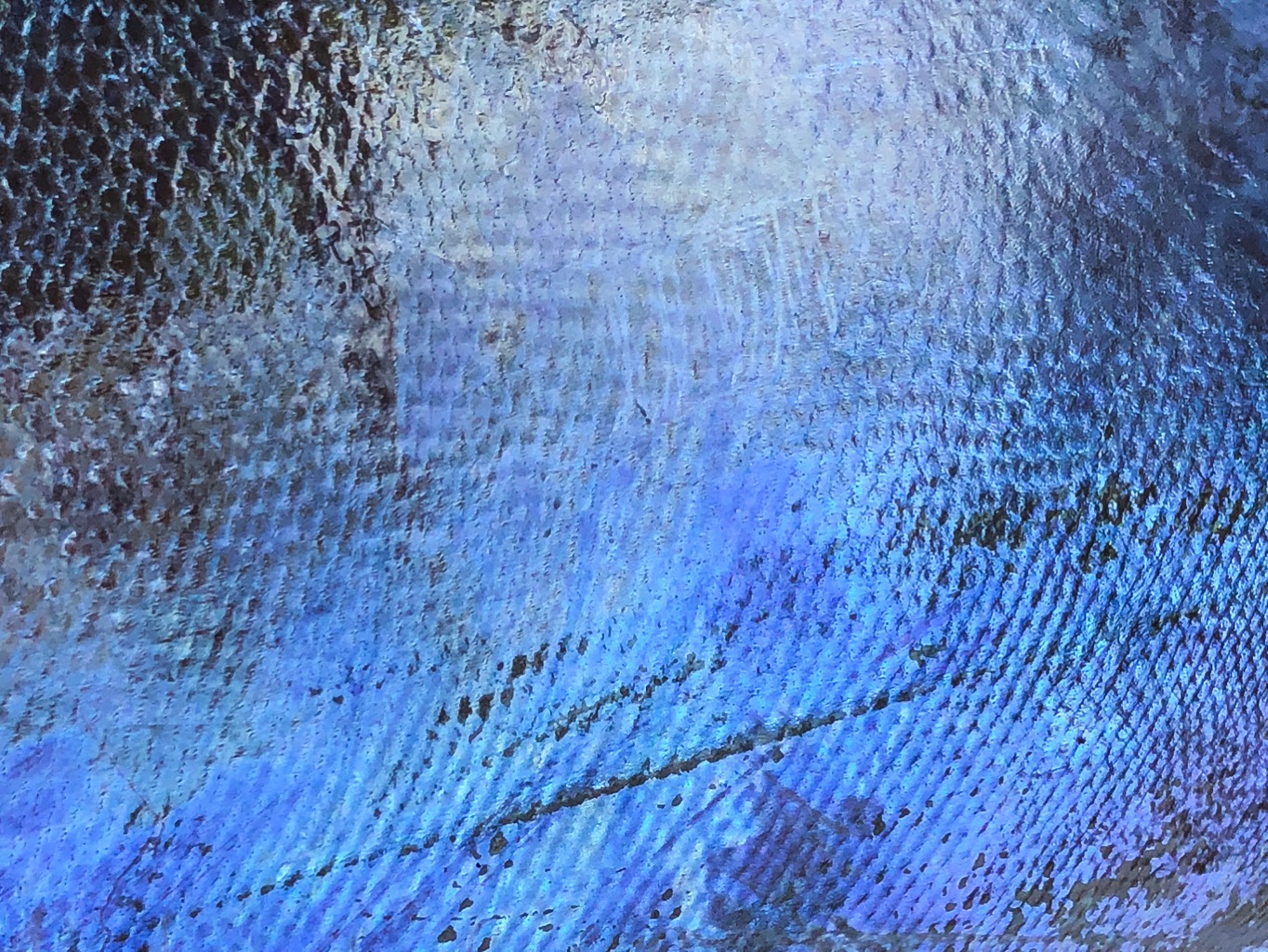
STATS:
Yellowfin Tuna
64 inches tail to mouth, 44 inches in girth
190 pounds
240 steaks
8” purple and orange Yozuri lure
180 lb test line with 300 lb wire tippet section
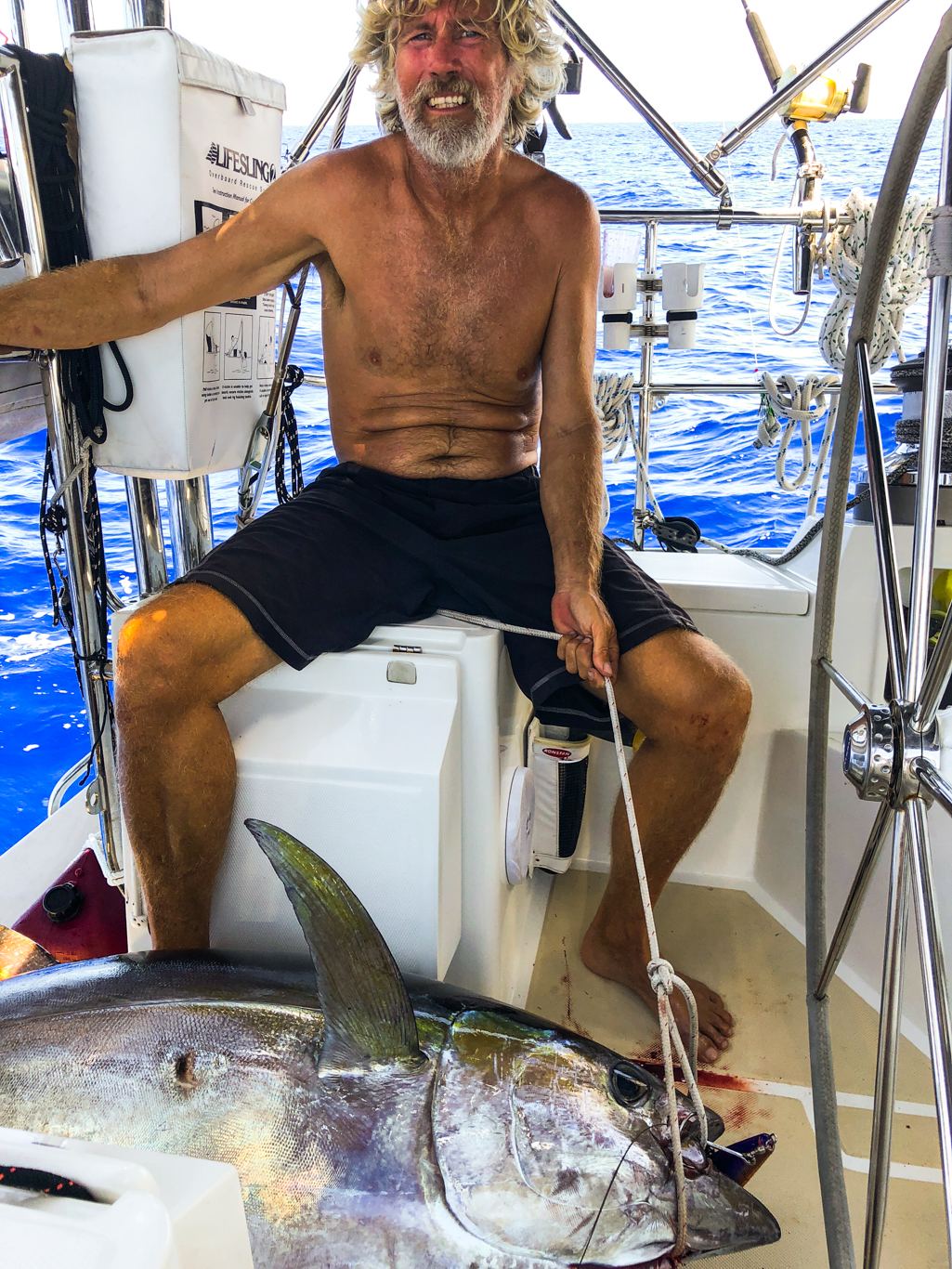
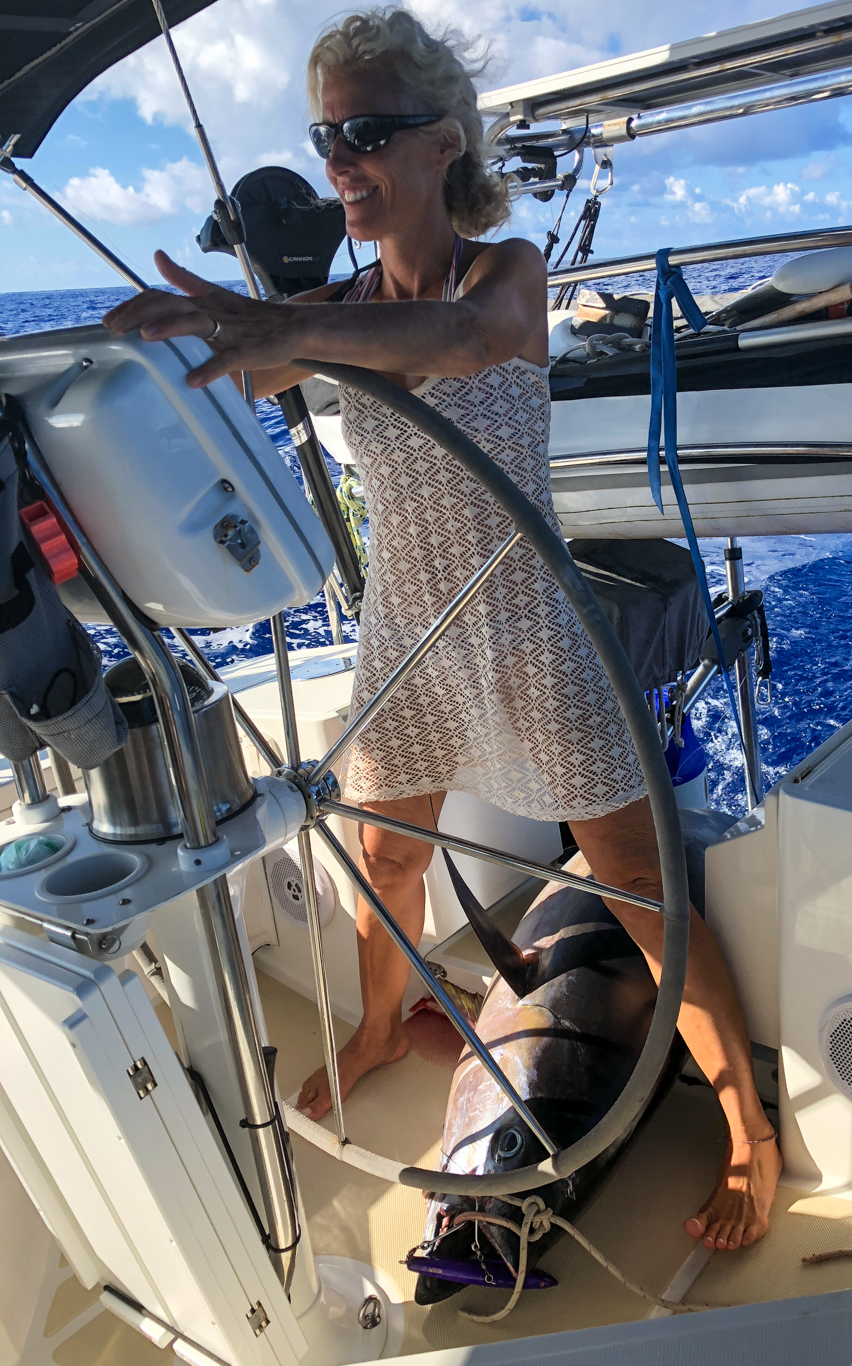

THE DETAILS:
After we broke two fish off near Bora Bora, I decided to do something about it. A big new rod and a reel that weighs more than all my other reels combined.180 pound test line, 300 lb test wire leader, eight inch Japanese Yozuri lure with two I don’t-know-what aught giant hooks. We were ready.
We wanted fish. So I had my secret weapon out, which I learned from a sport fishing boat in Mexico. A teaser trailing about thirty rubber squid in a school formation. Gotta get the fish’s attention, especially when you’re sailing downwind in light airs.
When a saltwater fish starts taking line, you don’t really know much about what you’ve got, unless you’re lucky enough to see the take, as I did with my first Marlin. But even small fish are crazy strong out in the ocean. If they weren’t they wouldn’t be here. They live with sharks.
We’ve learned the hard way how difficult it is to battle a big fish from a sailboat. Lines, sails, rigging, davits, hydrogenerators, long rudder and keel. The first thing you need to do, is slow down. When this fish hit we were sailing wing and wing with the genoa poled out to starboard. Luckily, since crossing the Pacific we’ve been setting the pole out with a bridle, so when we decided to hove-to there was a foreguy already in place to keep the pole from swinging back into the shrouds.
Diana got on the VHF and called our friends on Makara who been sailing close by, to let them know we had a fish on. Having broke the swivel on one of the hooks before on this rig, I went easy on the drag, and the fish ran and ran. When we’d slowed to about a knot or so, I started putting more pressure on, though I stopped the run, I couldn’t gain anything.
Diana dug out the “Golden God” which is the name she came up with for what she thought was a ludicrous fighting harness when I’d bought it back in California.
With no good place to be, I set up with the rod on the starboard side. The stern was blocked by our dinghy, dangling teaser, steering vane post and hydrovane. It looked like about half the line I had on the giant reel was out. I set more drag, but couldn’t get the line in. This may have been the first moment that we began to guess that we were in for a long haul. Makara called to find out how it was going. Little to report.
For the next two hours. Two hours. I would reel in as much as I could, and then lose at least two thirds what I gained with the fish pulling inexorably away. I was fighting the fish facing sideways, since the dinghy and everything else was on the stern of the boat. We were drifting slowly off course to the northwest, and the fish was pulling east. I was getting tired, but it was too much for Diana to hold very long on her own, so she helped relieve me by supporting the rod from the side. I’d get a couple winds on the reel and then we’d catch our breath.
Makara called again. No fish. We hadn’t even seen it yet. We heard Starlet come on the radio, they were hearing Makara’s side of the conversation.
Finally, somewhere in the second hour the fish started to rise, and I was able to take in some line. We got our first glimpse of the beast. A silver flash, deep deep deep down in the blue sea. Then Diana thought she saw yellow.
We already thought, hoped, prayed, that it was a yellowfin tuna. It had to be. Marlin jump. Dorado jump. Tuna go deep. What else is that big?
We told Makara we could see it, but that it was still a long way off.
The fish acquiescing so much line and coming up, fooled us into thinking that we were getting close. I think we even got the gaff out.
Wrong, O’ how wrong! The really brutal part of the battle had only just begun. The tuna started heading for the other side of the boat, getting the line wrapped around the hydrogenerator and the dangling squid teasers and just about everything else on the stern. Both of us were already bruised up, me from the pole slipping out of the harness and Diana from trying to hold the pole at the rail, getting her hands trapped between the rod and the Bimini frame.
Both of us took turns unwrapping the line and Diana started the engine to try to turn the boat toward the fish so it would be off our side instead of behind us. More than once we heard the line “twang” off of something on the stern, sure that we’d lost the fish after everything.
Just about the time that I began to think about the looming probability that the muscles in my arms were seriously going to give out, we got a small break. The tuna started doing deep predictable circles. Diana guessed about 70 feet below us. With each circle I could gain a little as he passed closest, and then lose some of that gain as he pulled away. A few inches at a time and Diana was able to report to Makara that we had the fish at about fifty feet. Diana would help me lift the pole and I would reel like crazy on the drop. The fish too was getting tired, but sometimes just as I could feel him falter, I realized I had to take a break, too. I just couldn’t pull him up.
Diana gave me water. My arms were pumped, literally spasming involuntarily as we got the fish near the surface. He was still pulling in circles, but now he broke the surface and we could see how enormous he was. Diana tried to gaff him, but the reach from the deck was a few inches too far for her, and the fish wasn’t done yet.
After awhile we realized that the only way to get him was for her to take the pole. She donned the Golden God.
I gaffed him, but it took all my remaining strength just to hold him near the surface. When we caught that big tuna crossing the Pacific we lost our gaff at this point, so Diana got a line tied onto the gaff in case I lost my grip.
We were contemplating how we were going to lift the fish, thinking about using the block we use for the dinghy, when Diana saw a shark swimming in, no doubt scenting the blood from the gaff.
There was NO WAY we were going to lose this fish to a shark after three hours. We put a line through its gills and put the rod back in the holder and worked the tuna around all the many obstacles at the stern of the boat as the shark circled (I kid you not). Thankfully the shark was taking its time. With both of us heaving will all our might we got the fish up on the swim platform, tail dangling out over the water. Diana tied the fish off and we both sat down and tried to catch our breath. The shark would have to leap out of the water to get the fish now, but we had to get it on the boat more securely before we could move.
Diana took a picture of me, totally exhausted with the fish half in the cockpit. We got another line on it, heaved one more time and the fish was secure, though to steer Diana had to straddle it at the wheel.
Three full hours.
I was too exhausted to help Diana roll up the genoa and reset the main, start the engine and get us moving. We called Makara and told them we had the fish.
Starlet could hear us now, and Mark suggested we come raft up to them when we got to Fakarava, so they could lift the fish onto their trawler. A much more convenient place to butcher it. The wind was very light so we used our engine to make up for three lost hours. We wanted light for transferring the fish. Meanwhile Mark also made arrangements to put the fish, once it’d been cut into steaks in the freezer of a local magasin (grocery store). We had to have the job done by eight o’clock which is when the owner said he was going to bed.
Sharpened knives, everyone dove in. We butchered on the back deck and, Jennifer shuttled them into Diana cutting steaks in the galley. Ian bagged them and estimated we had something like 240 steaks in all, plus bags of trim meat Diana and Erica sorted for sashimi or for curries.
We measured the tuna, from the bottom jaw to the crook of the tail. Mark found a chart online to determine its weight. The first graph he found didn’t even go up to this tuna’s 64 inches/44 inches girth. 190 pounds.
It takes a village.
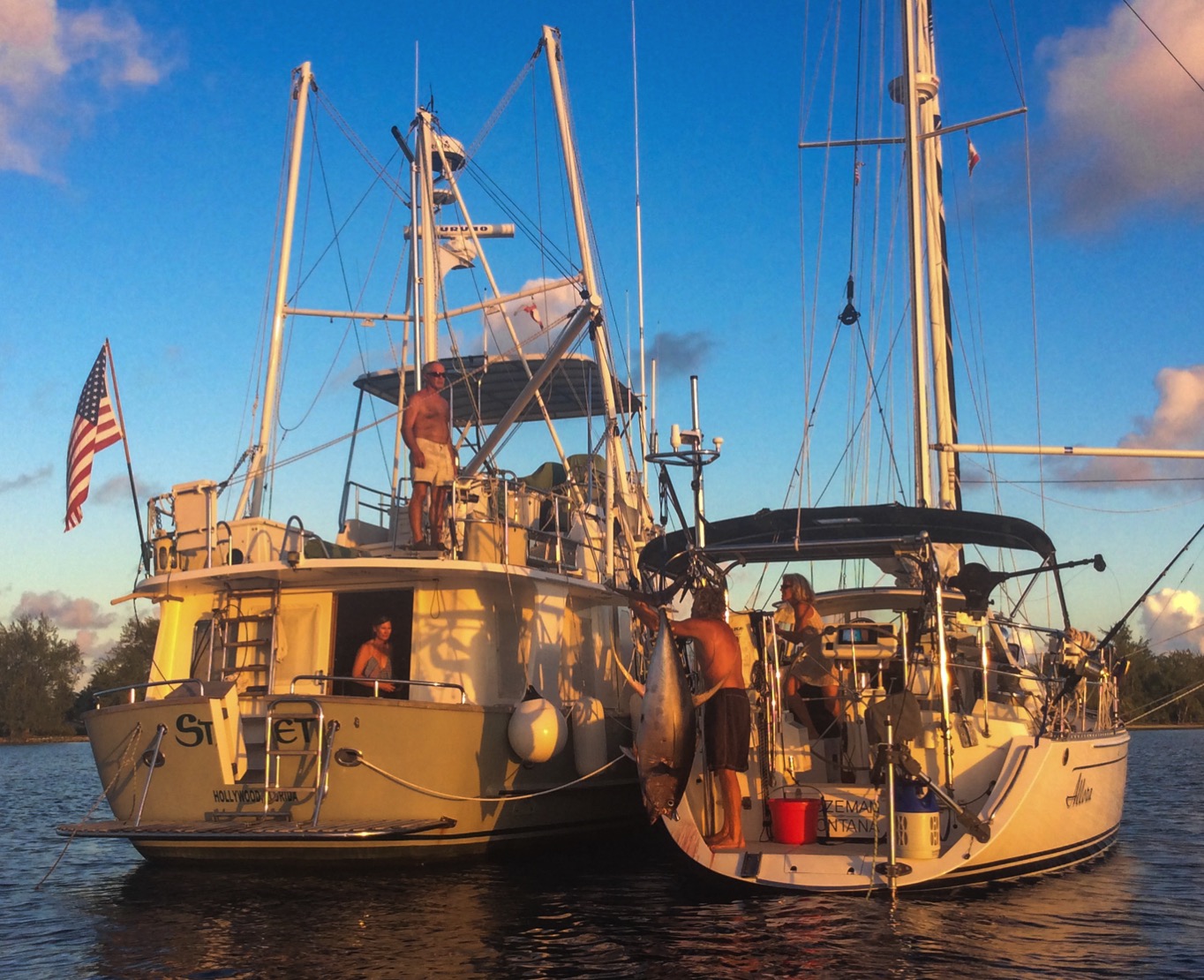

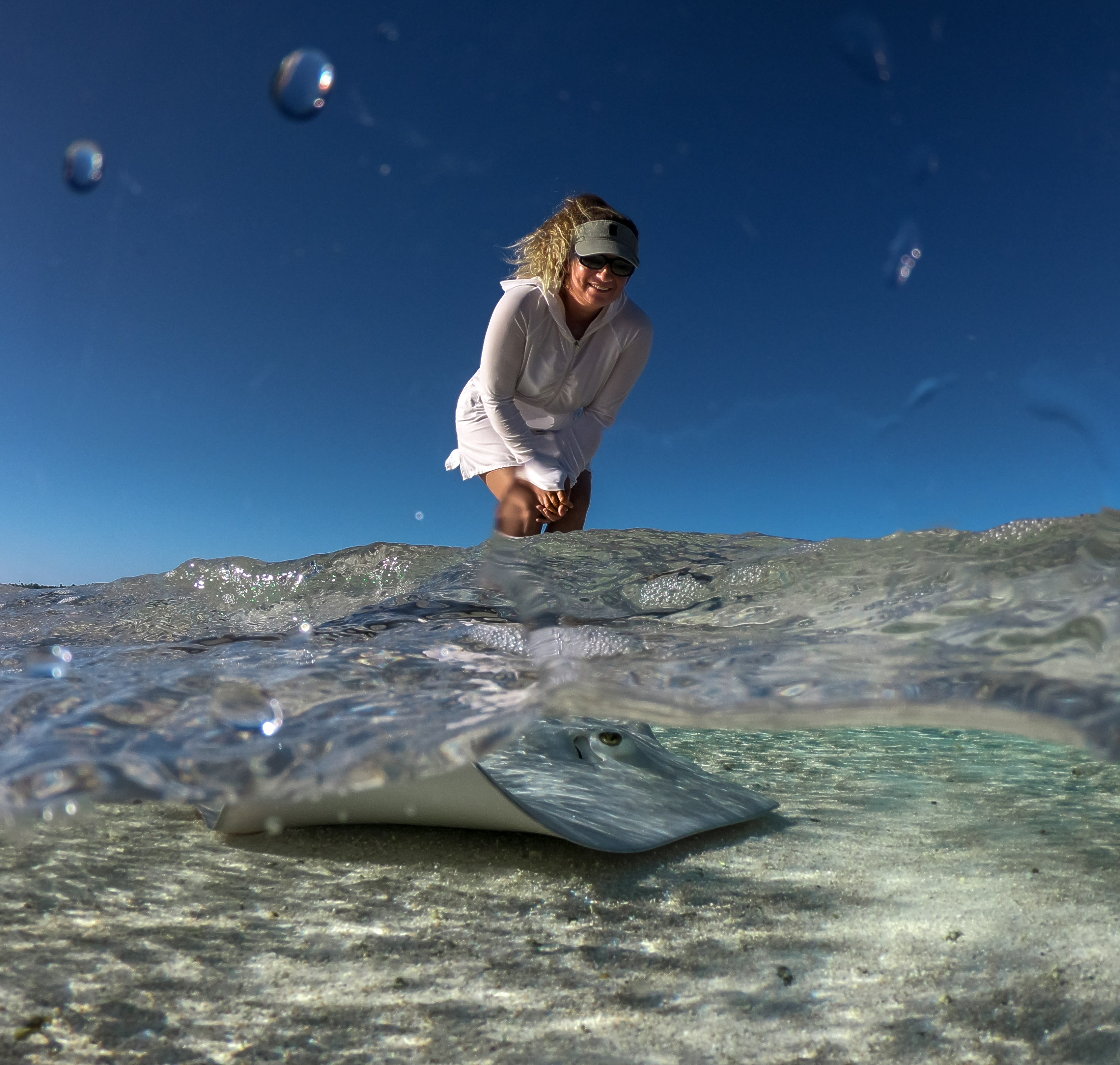
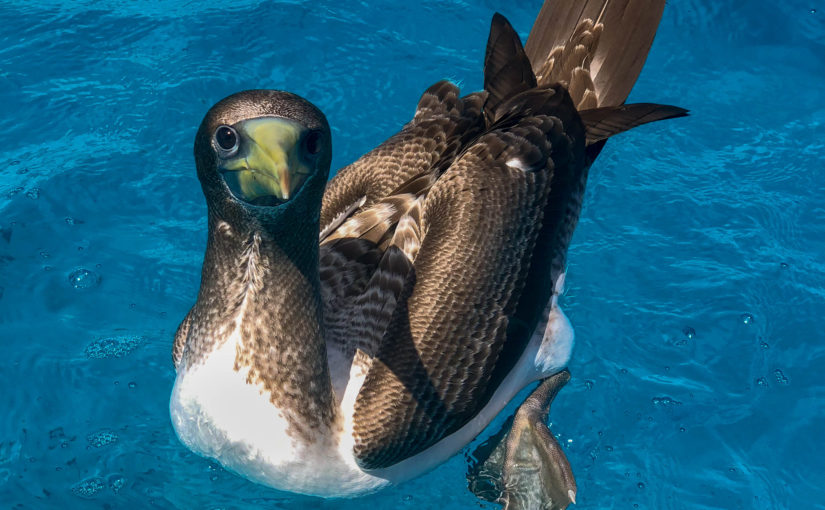













































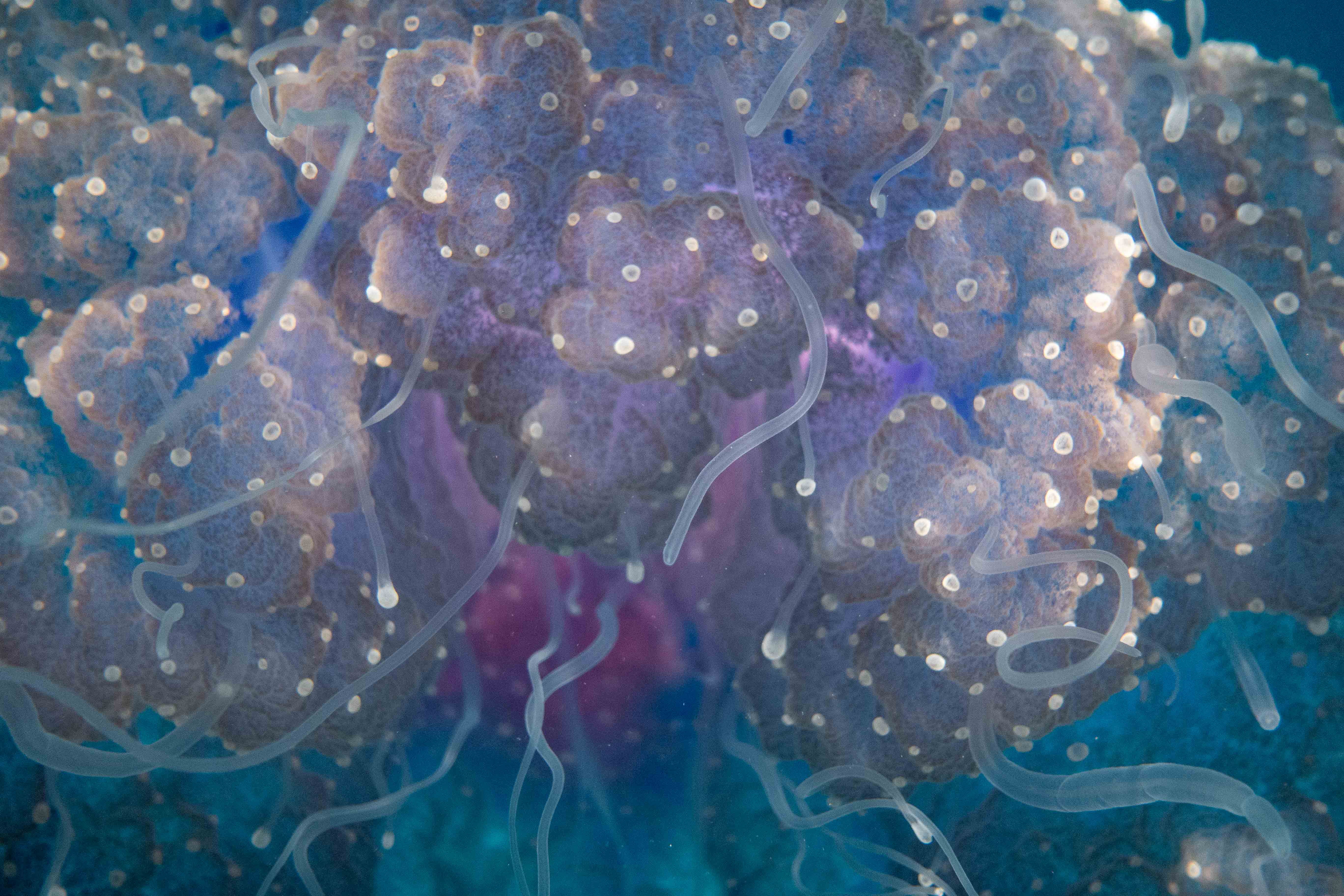








































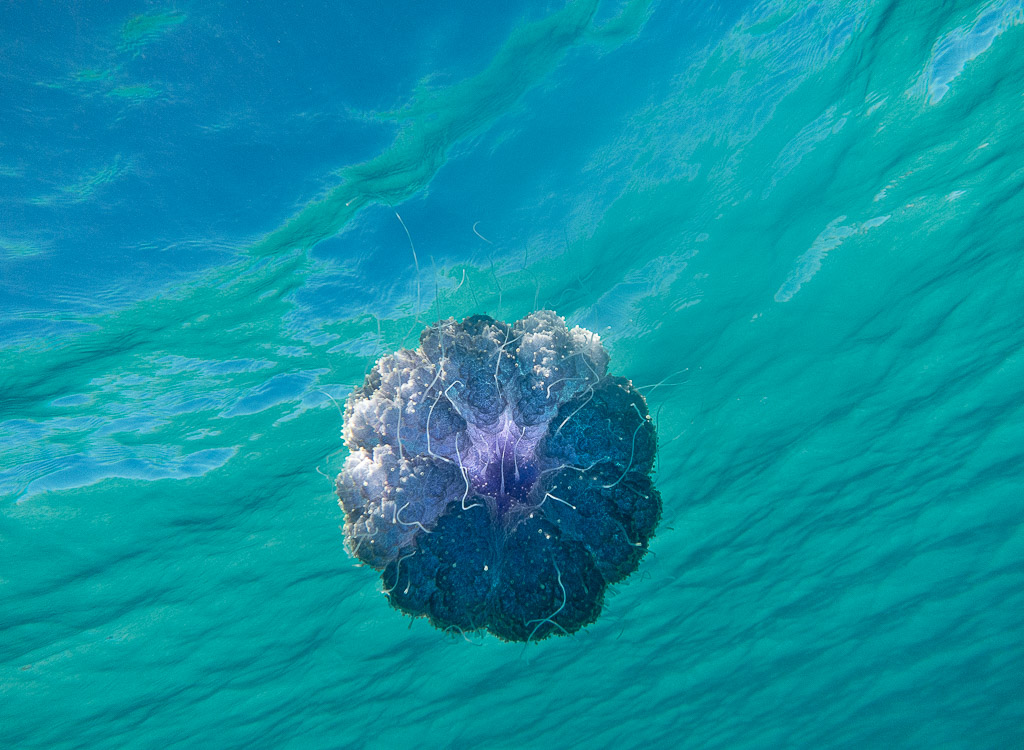























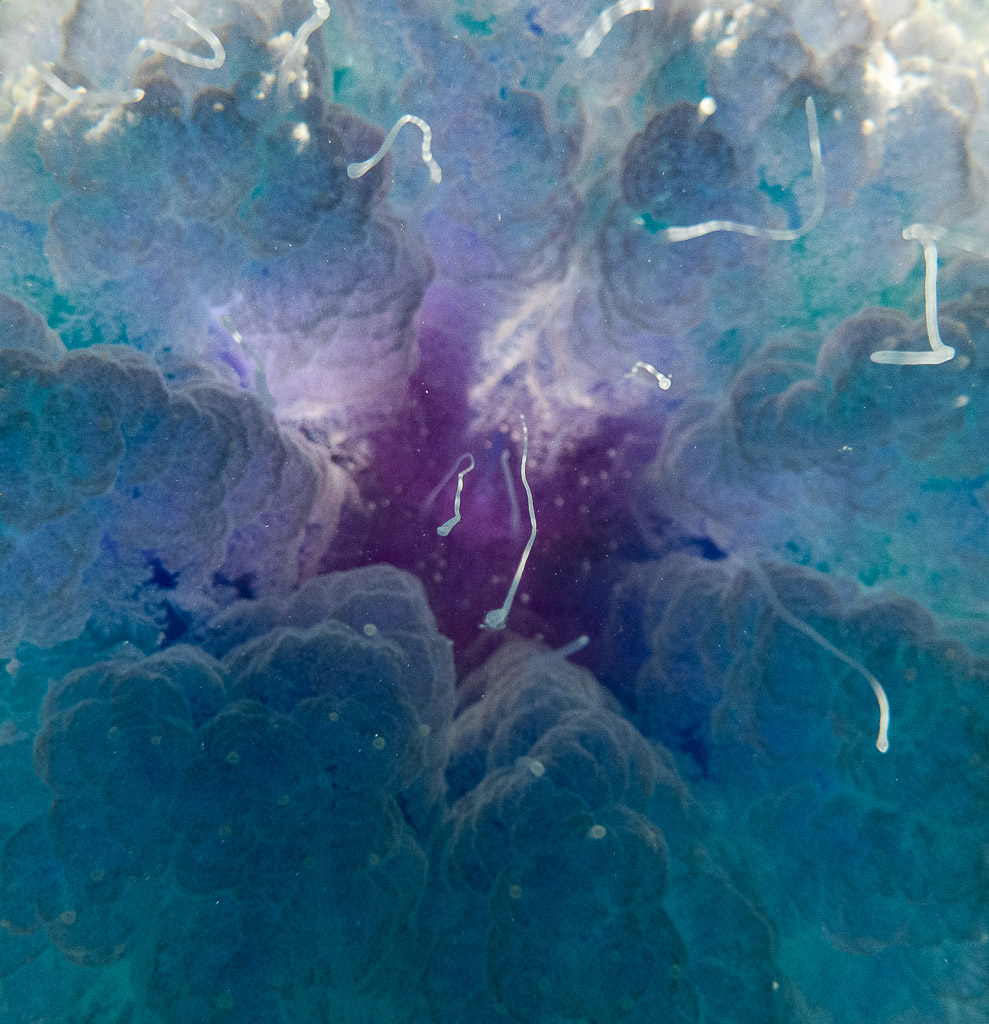










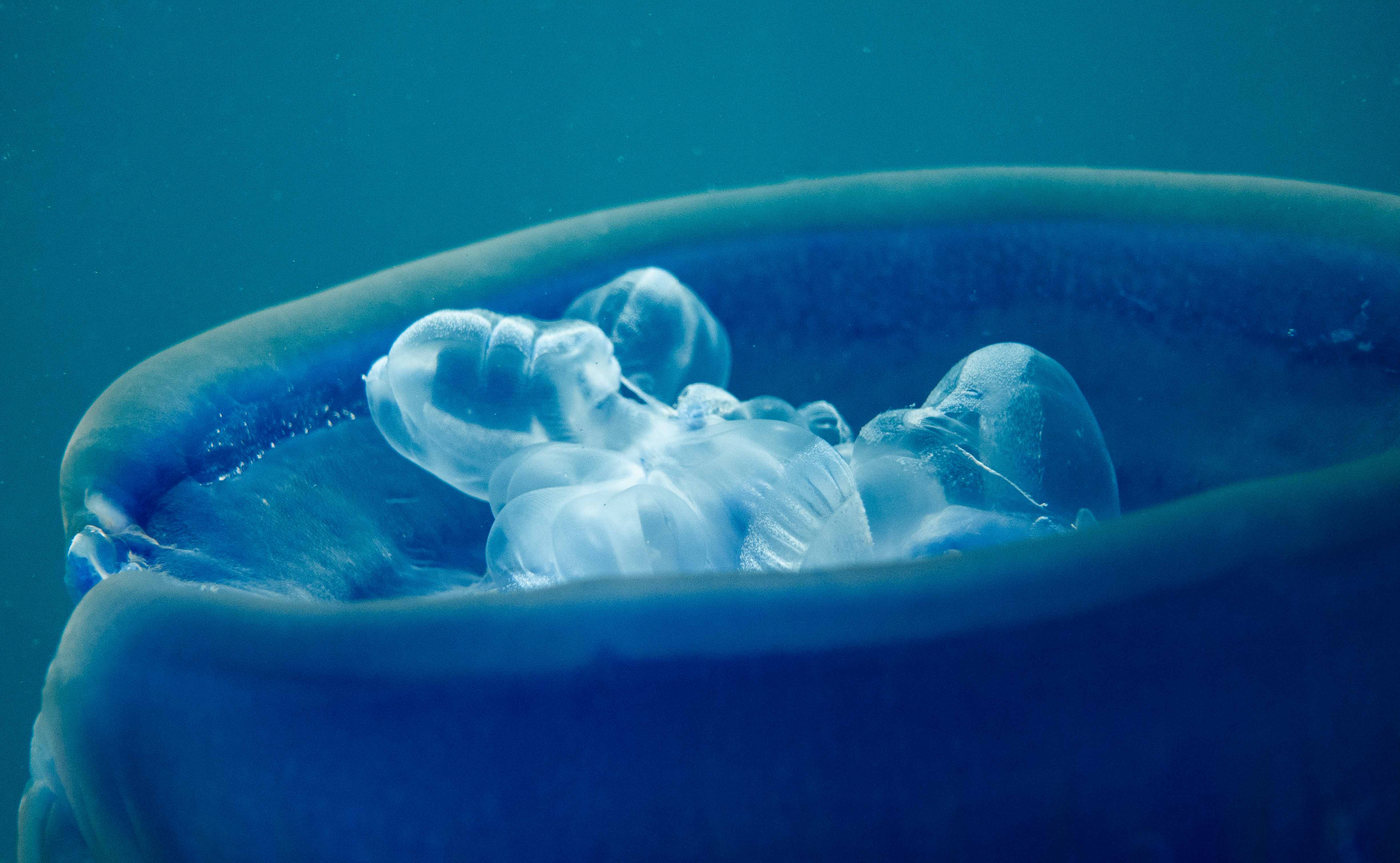


















 " data-envira-height="760" data-envira-width="570" />
" data-envira-height="760" data-envira-width="570" />











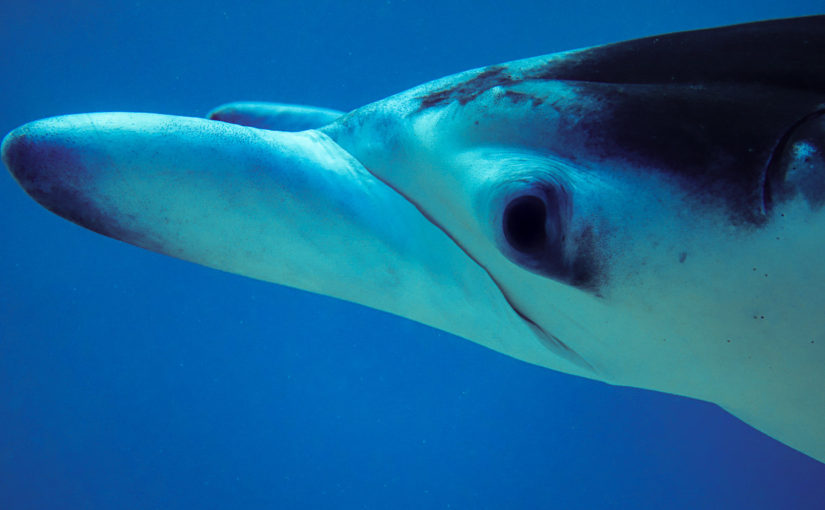
























































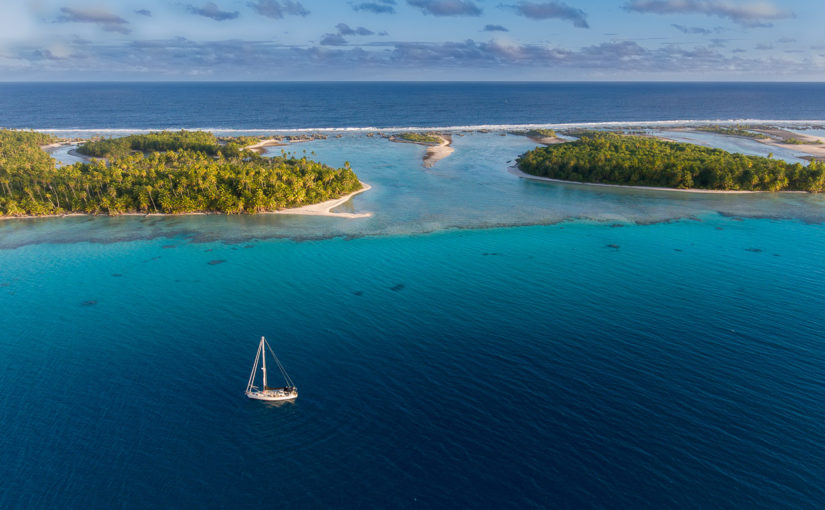














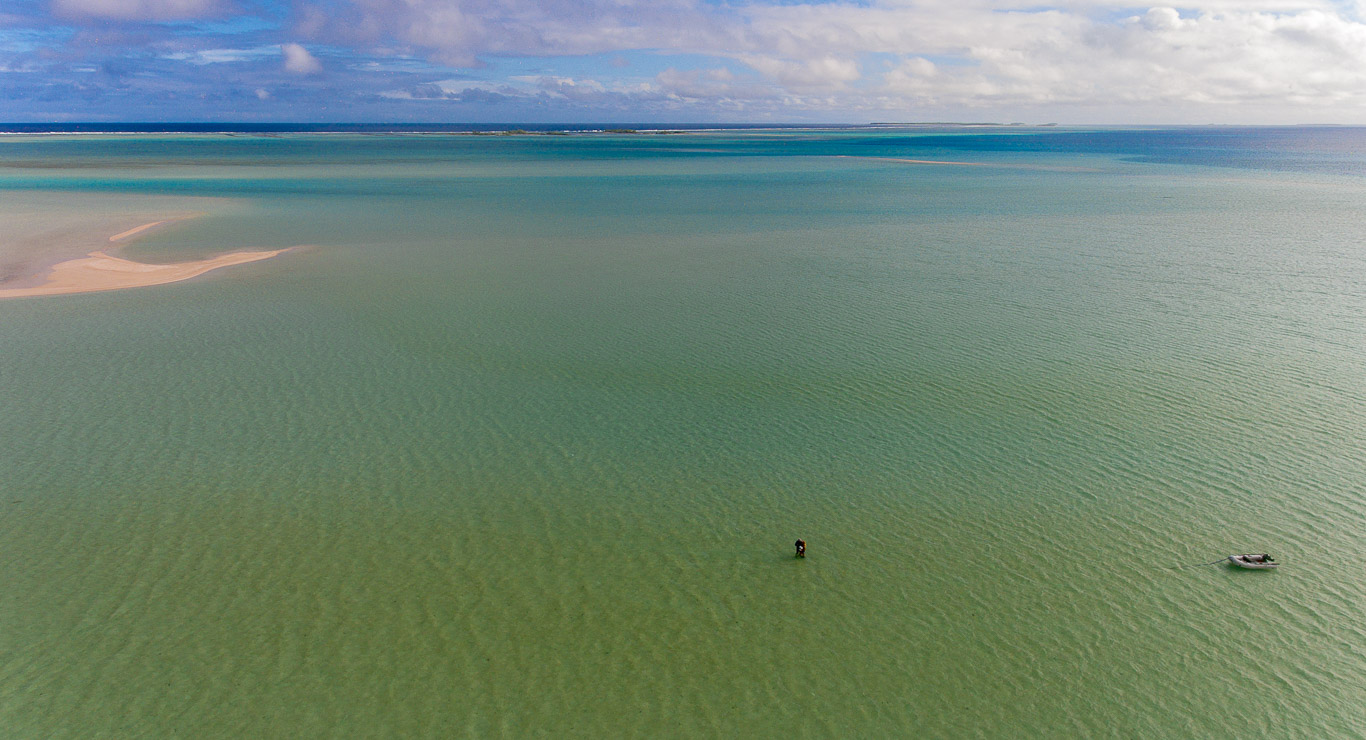














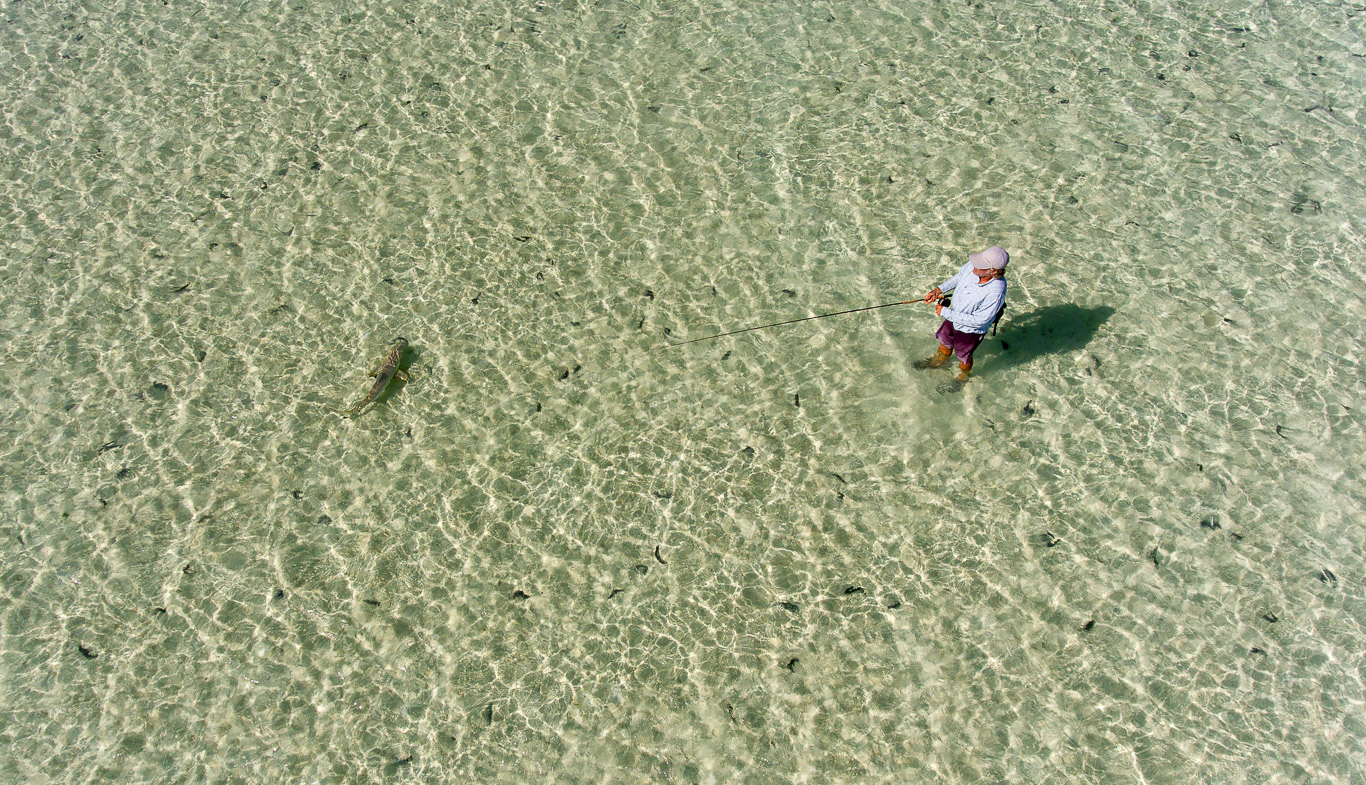




















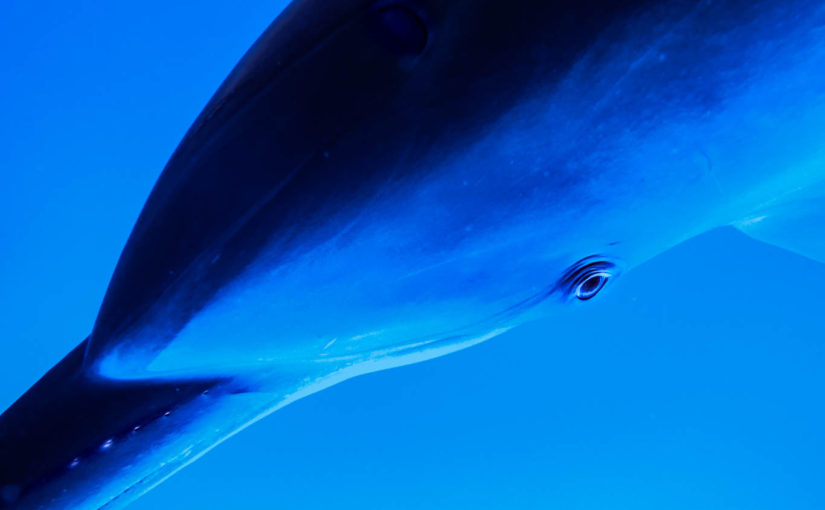














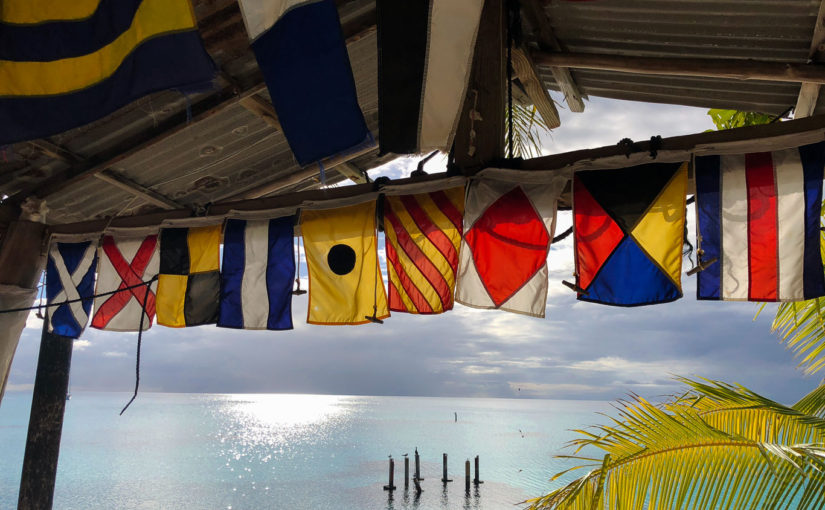

































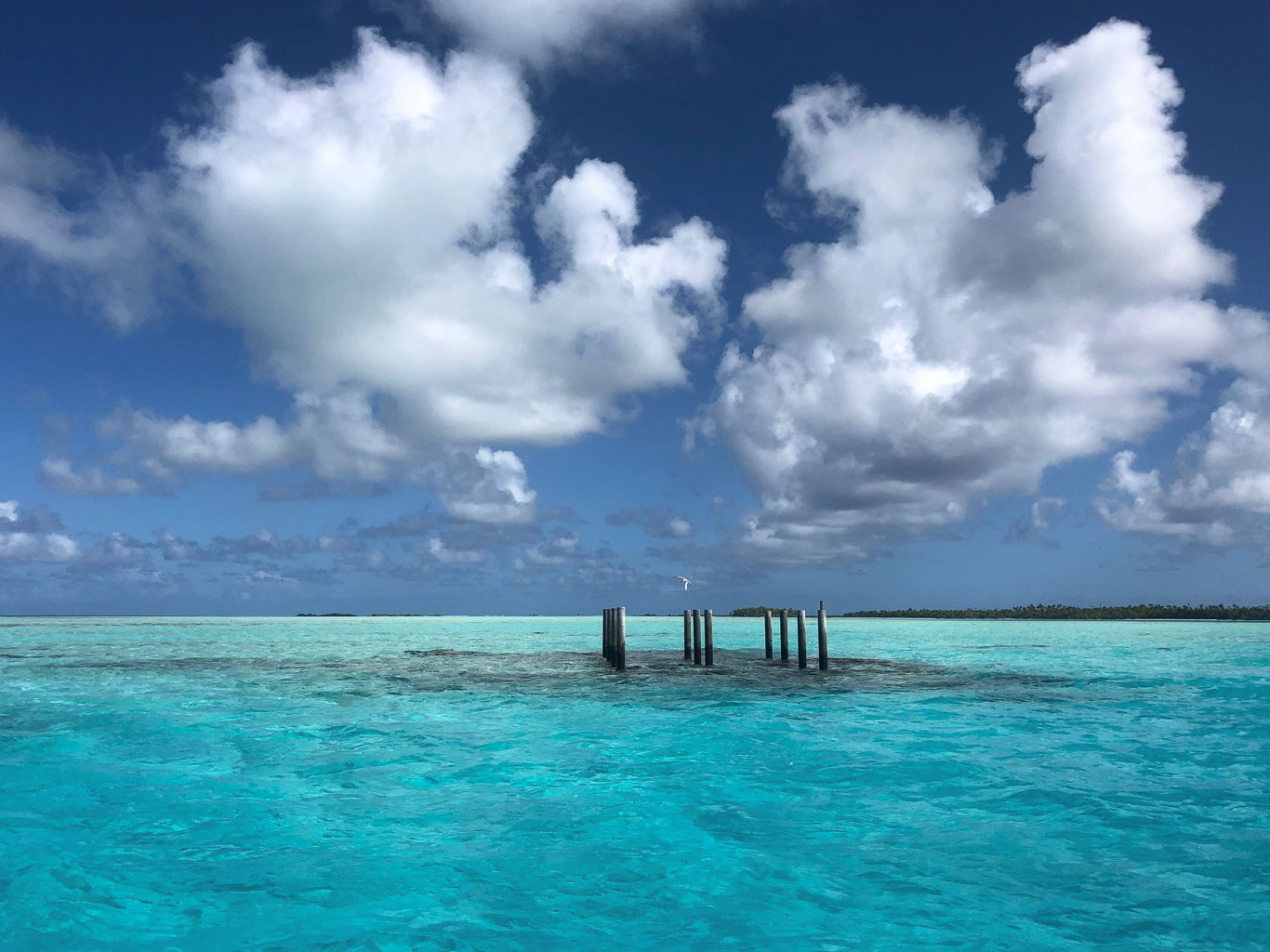

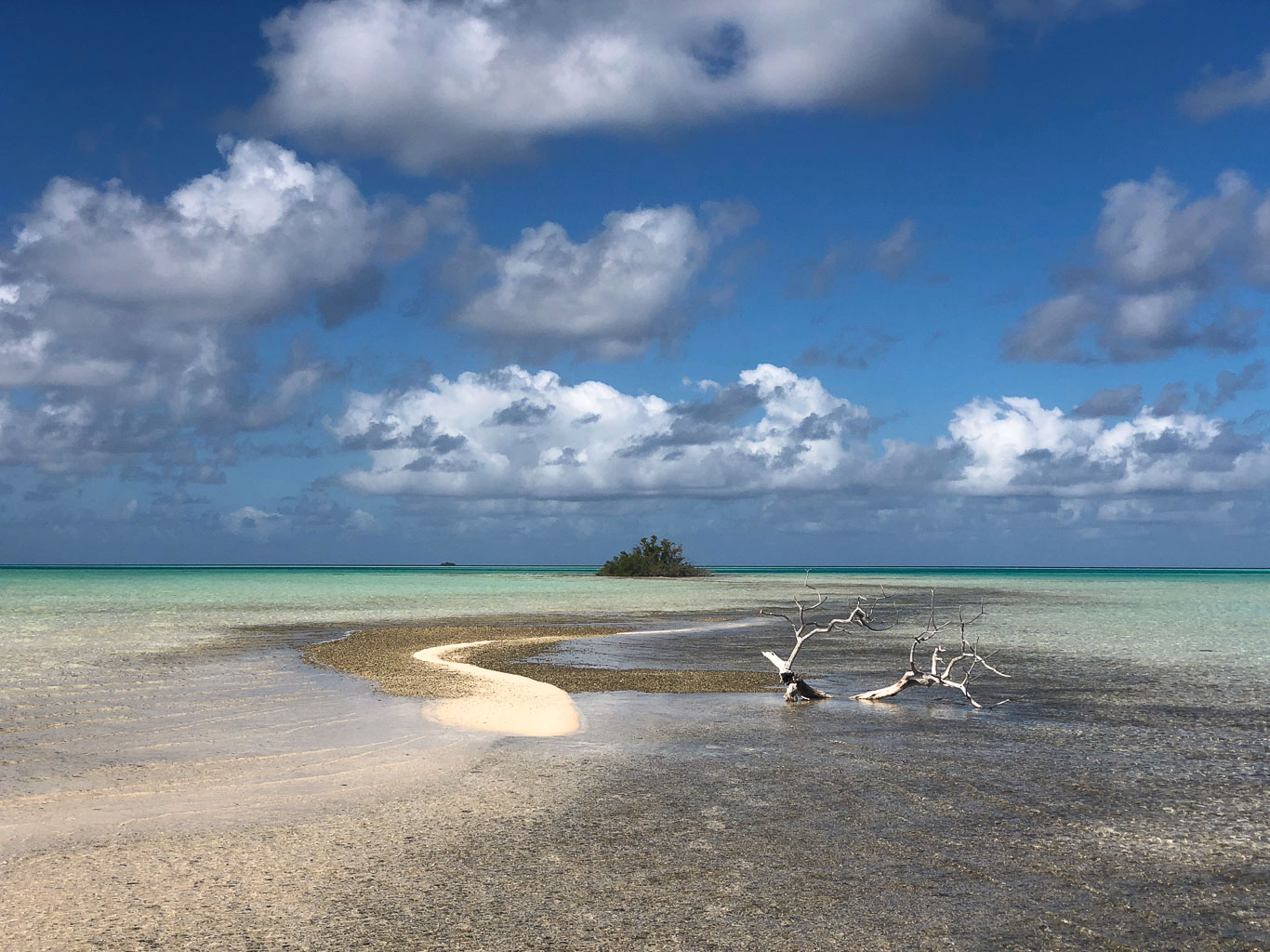











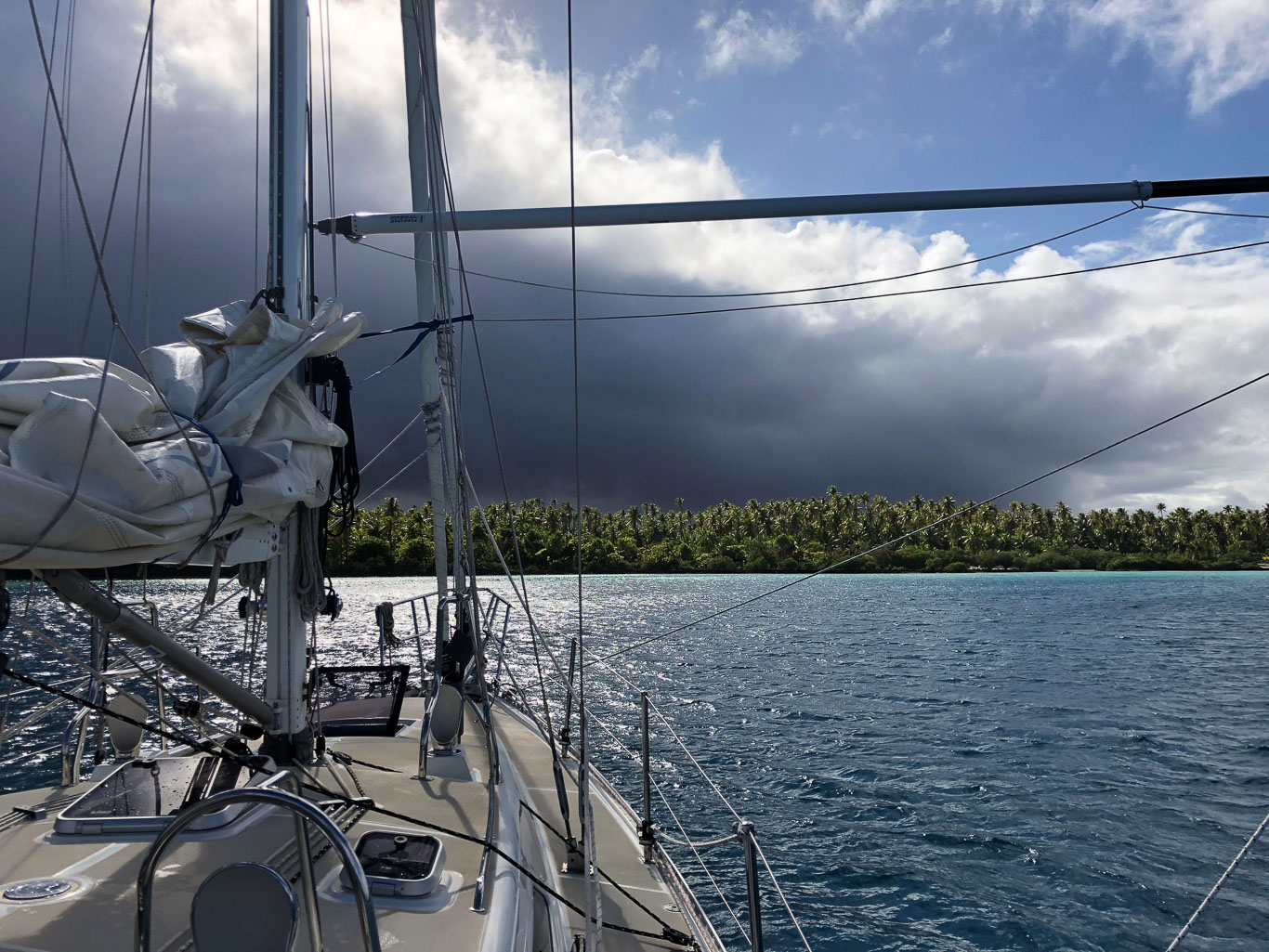







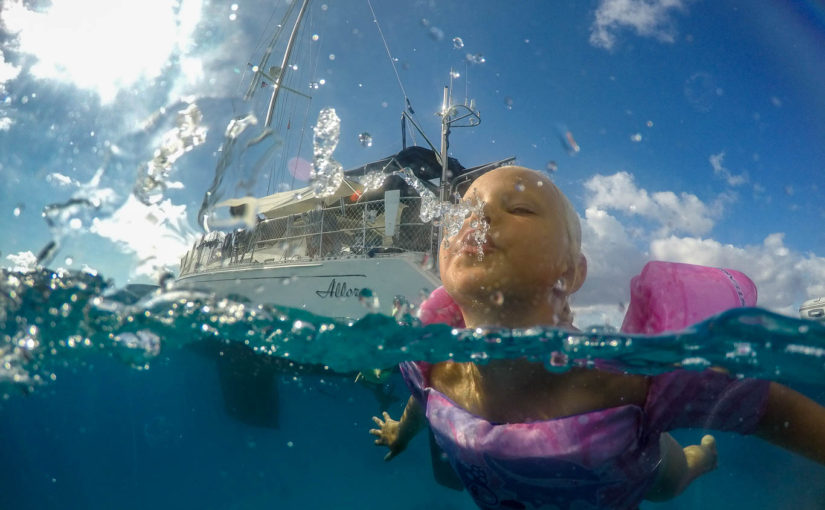

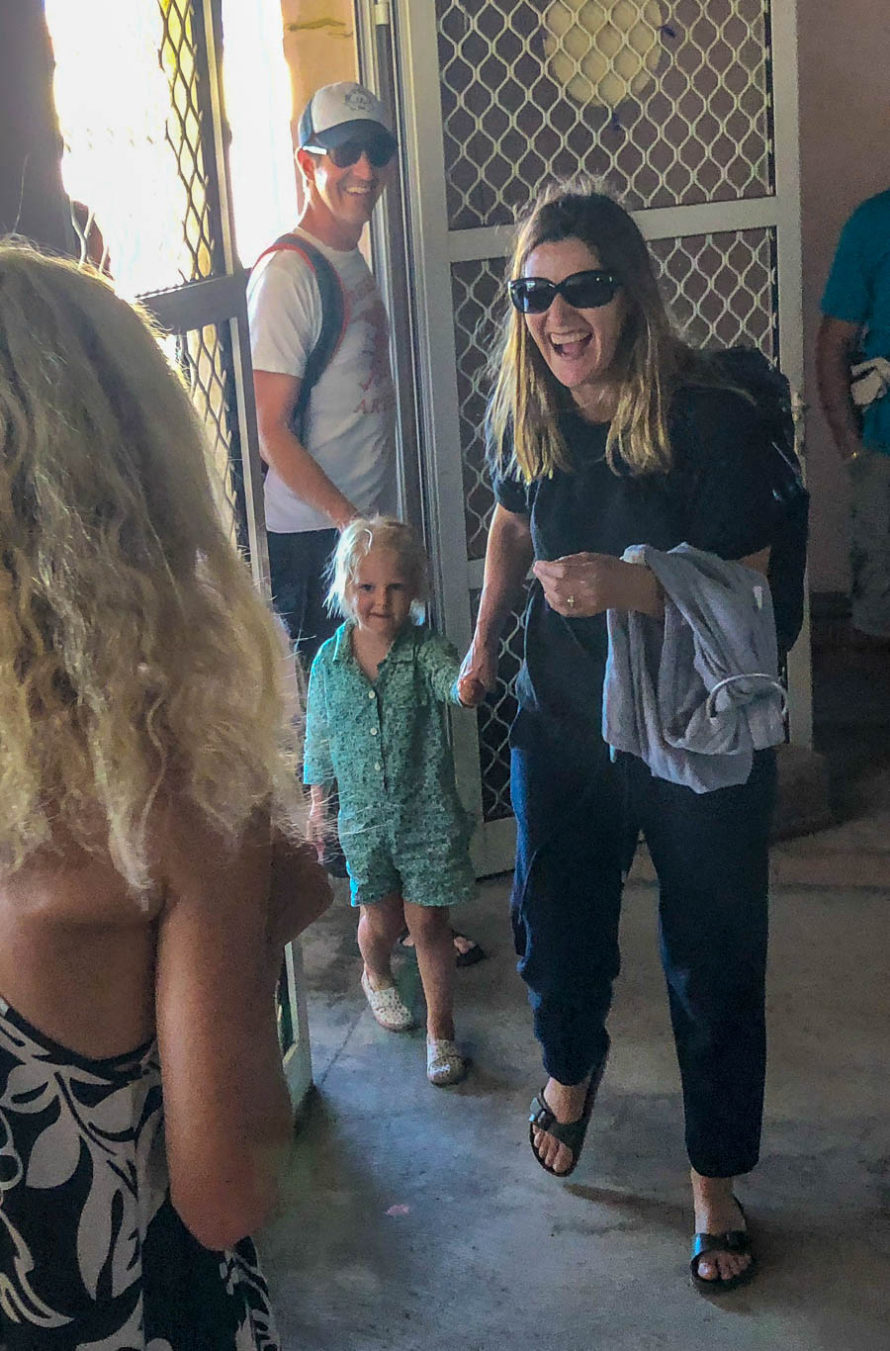
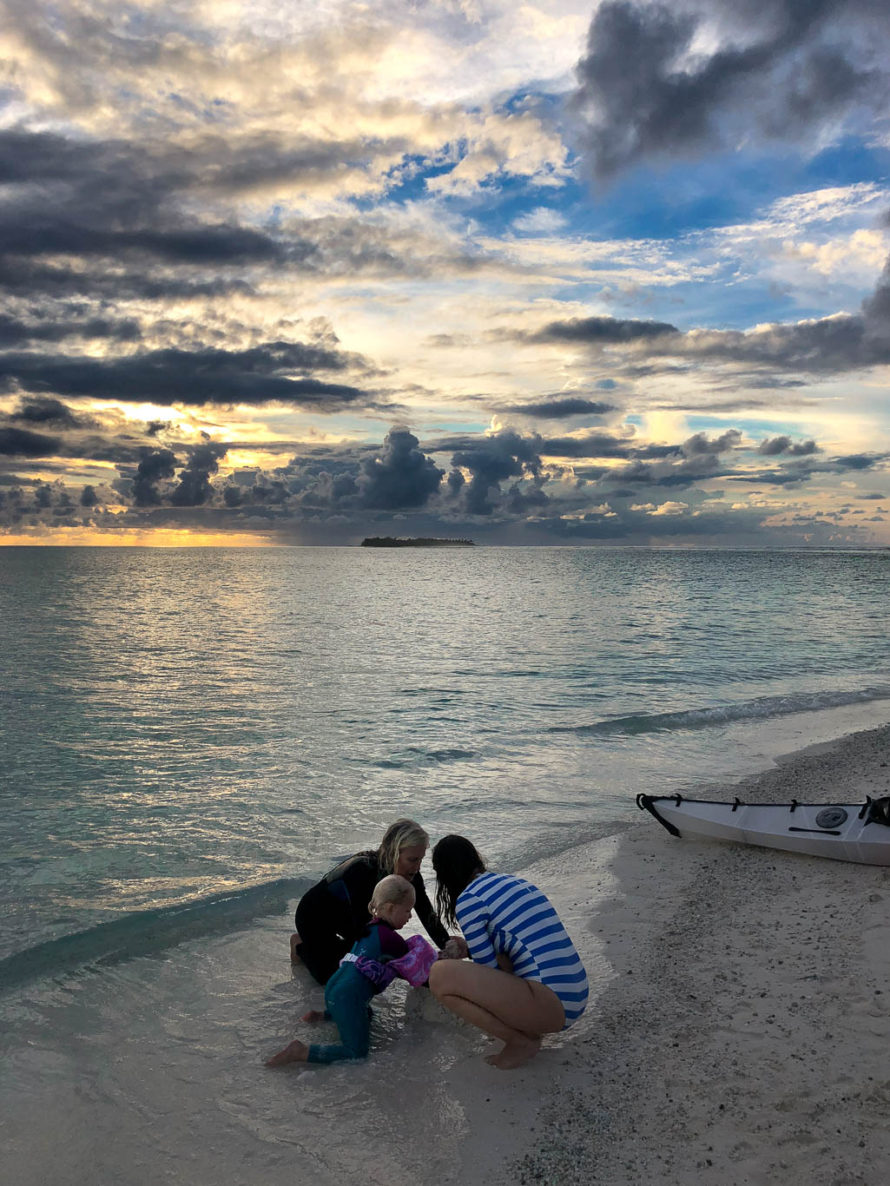



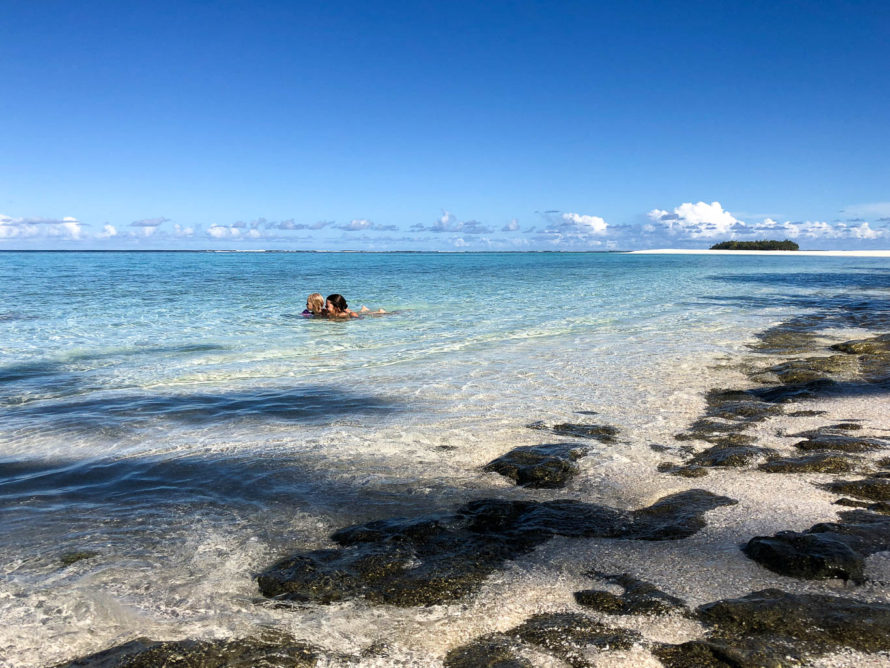
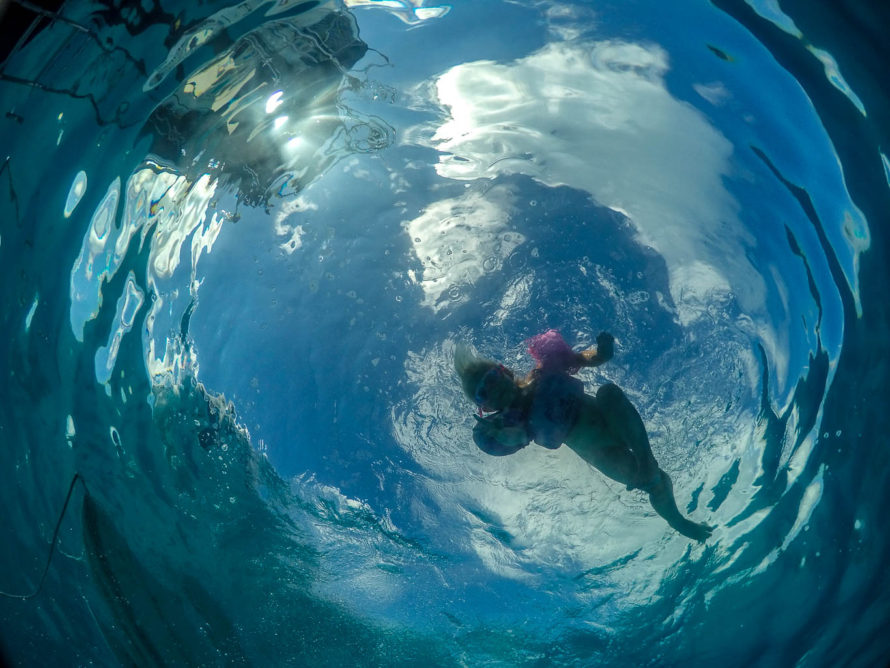
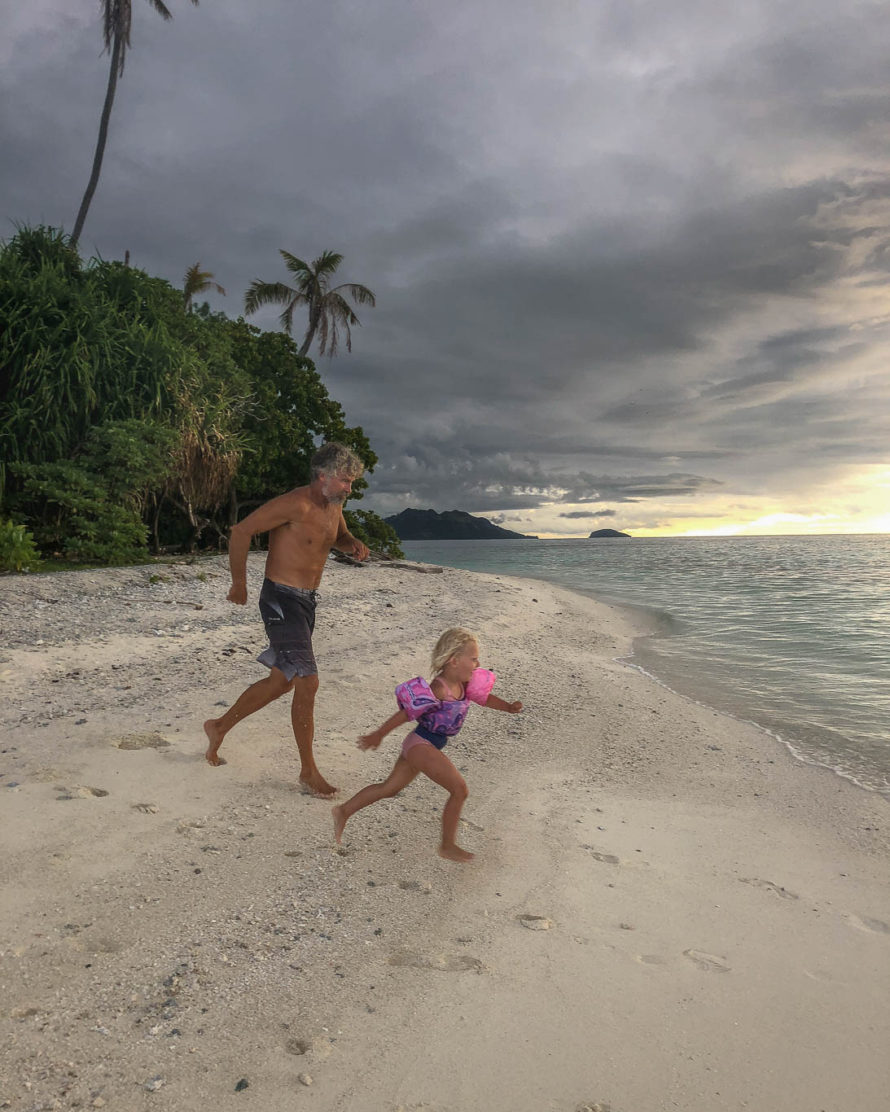




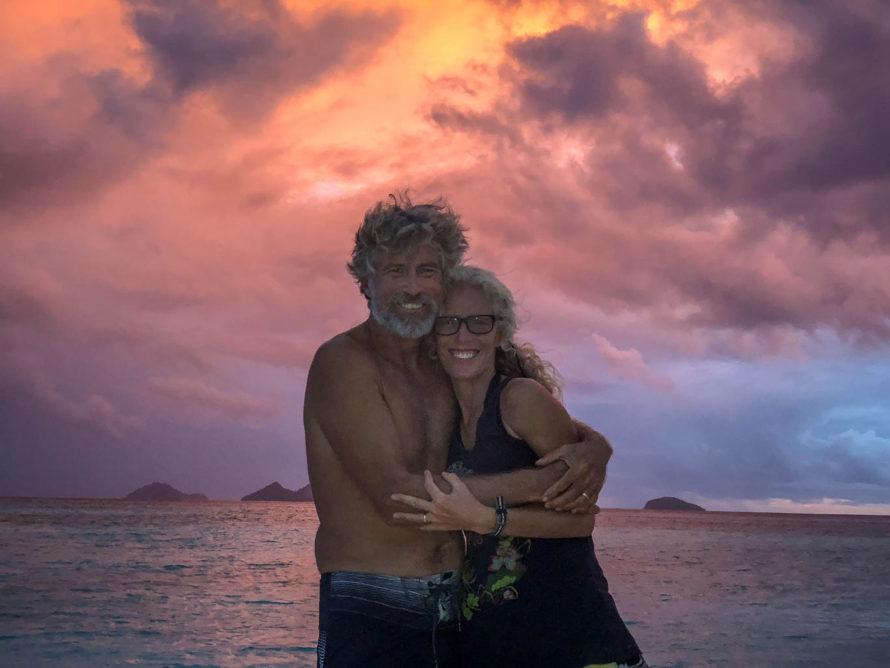
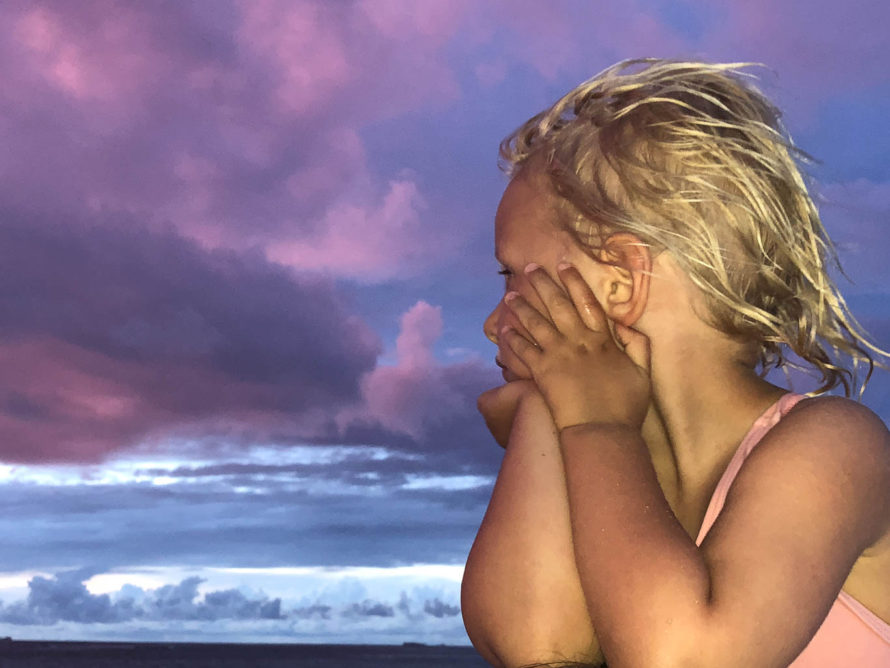
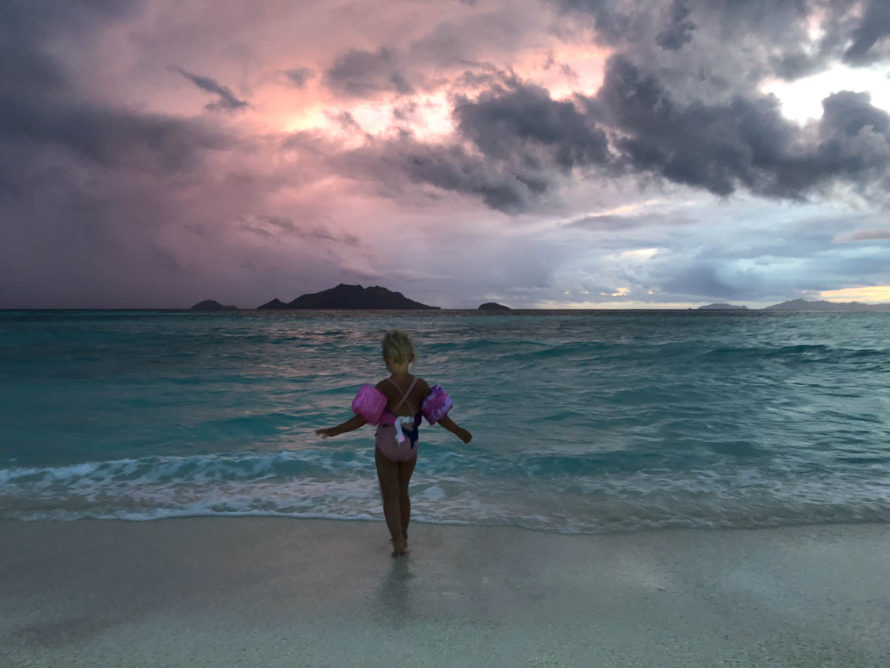

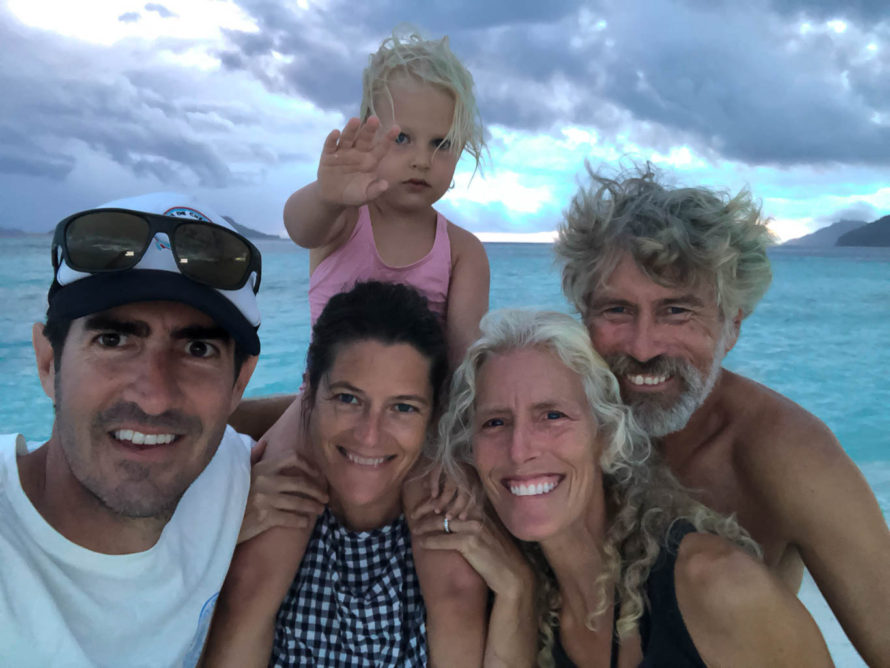


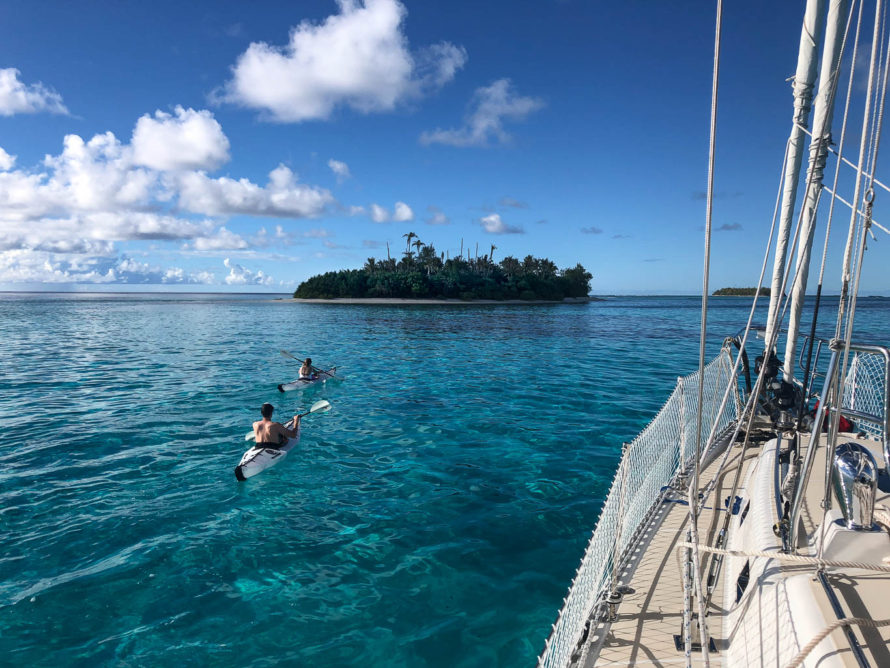

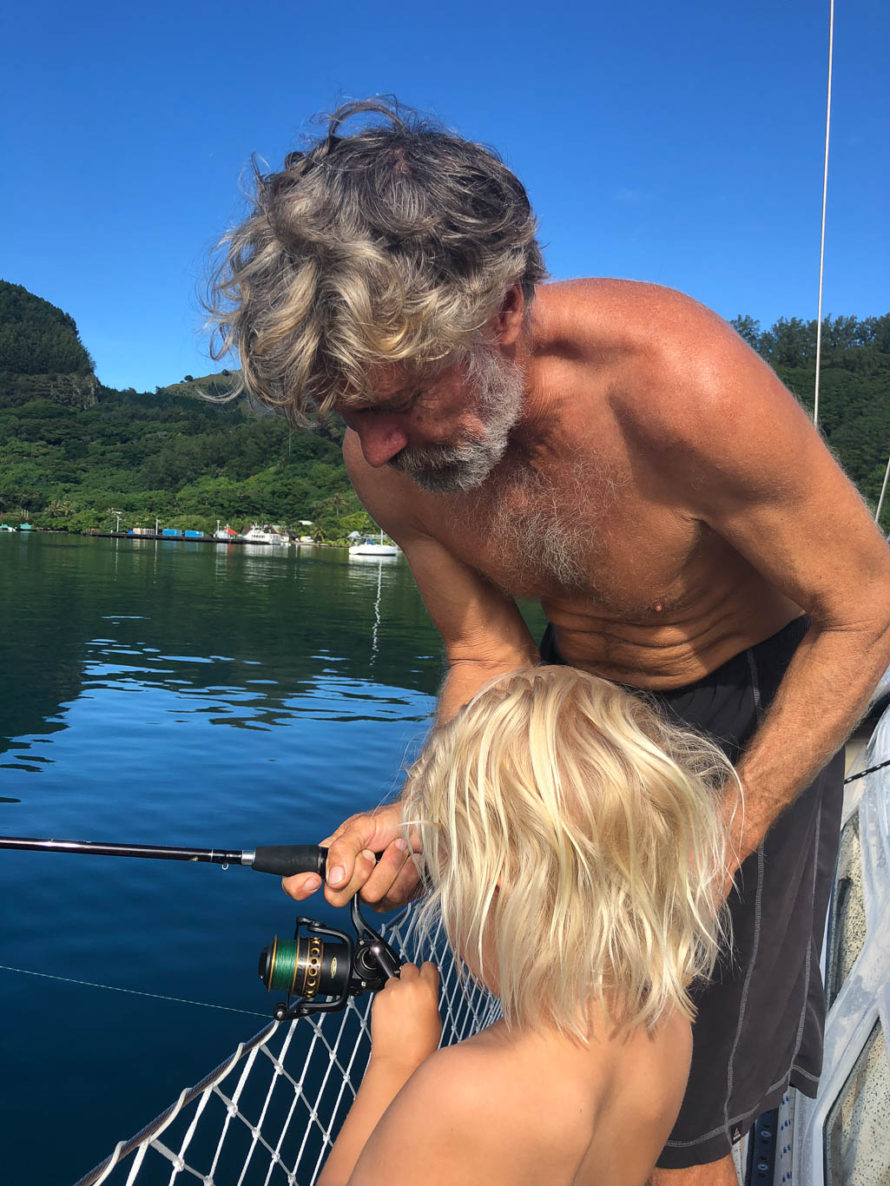
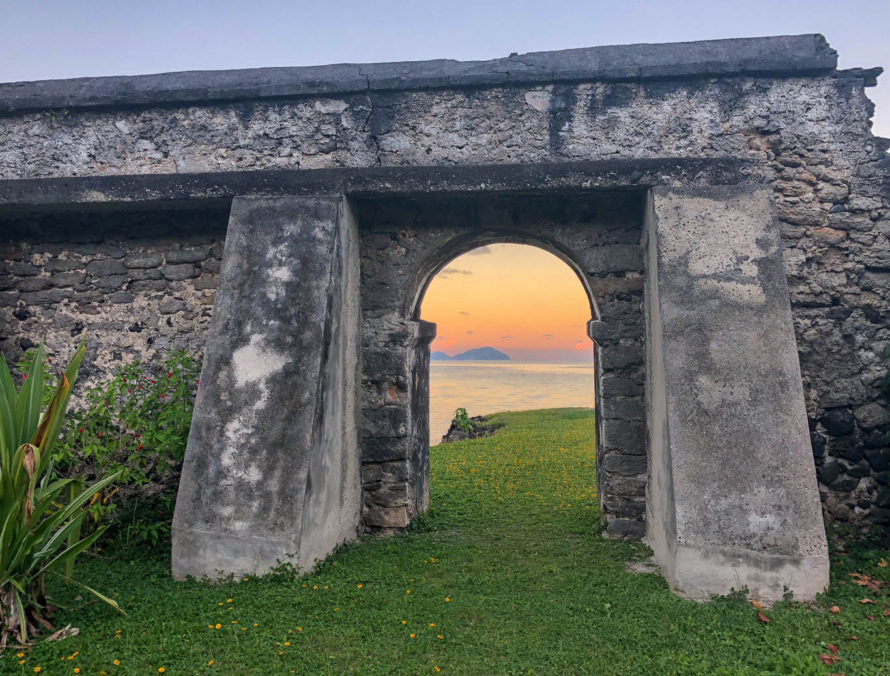
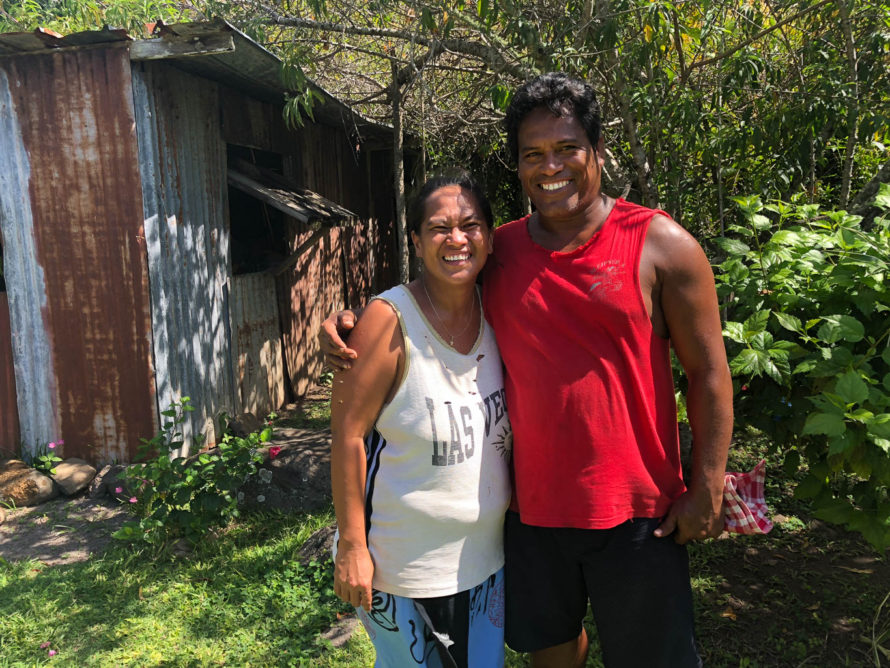
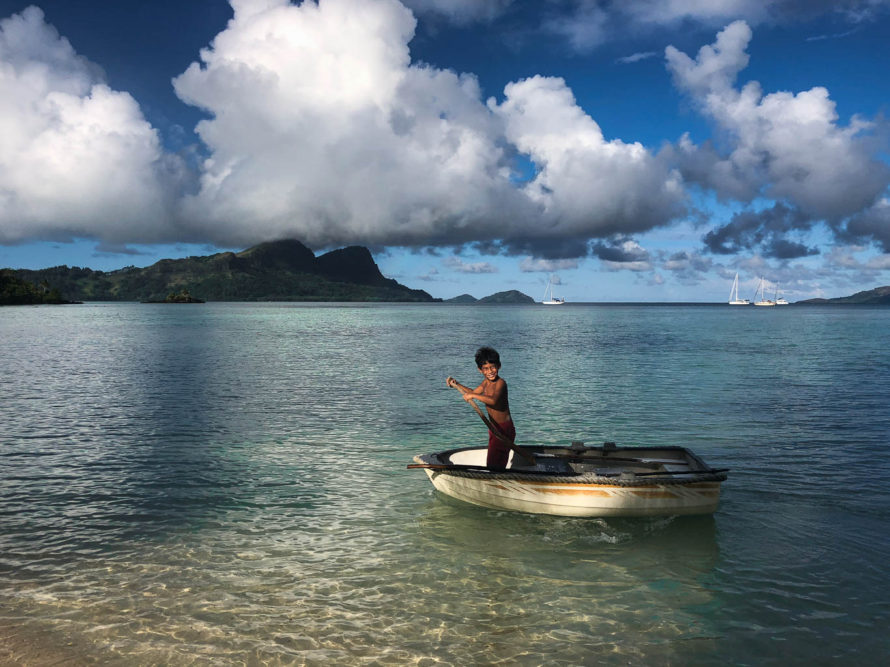
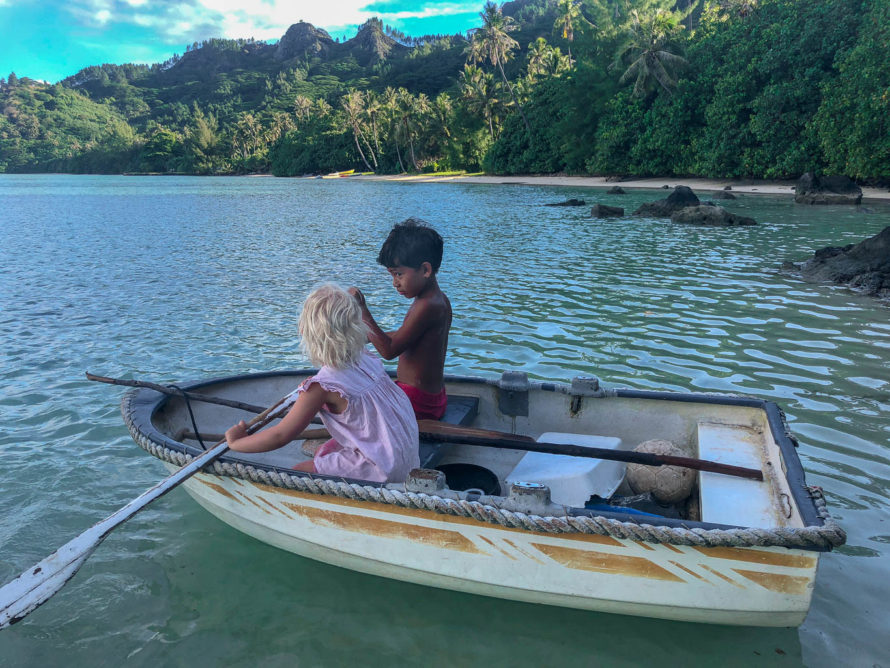







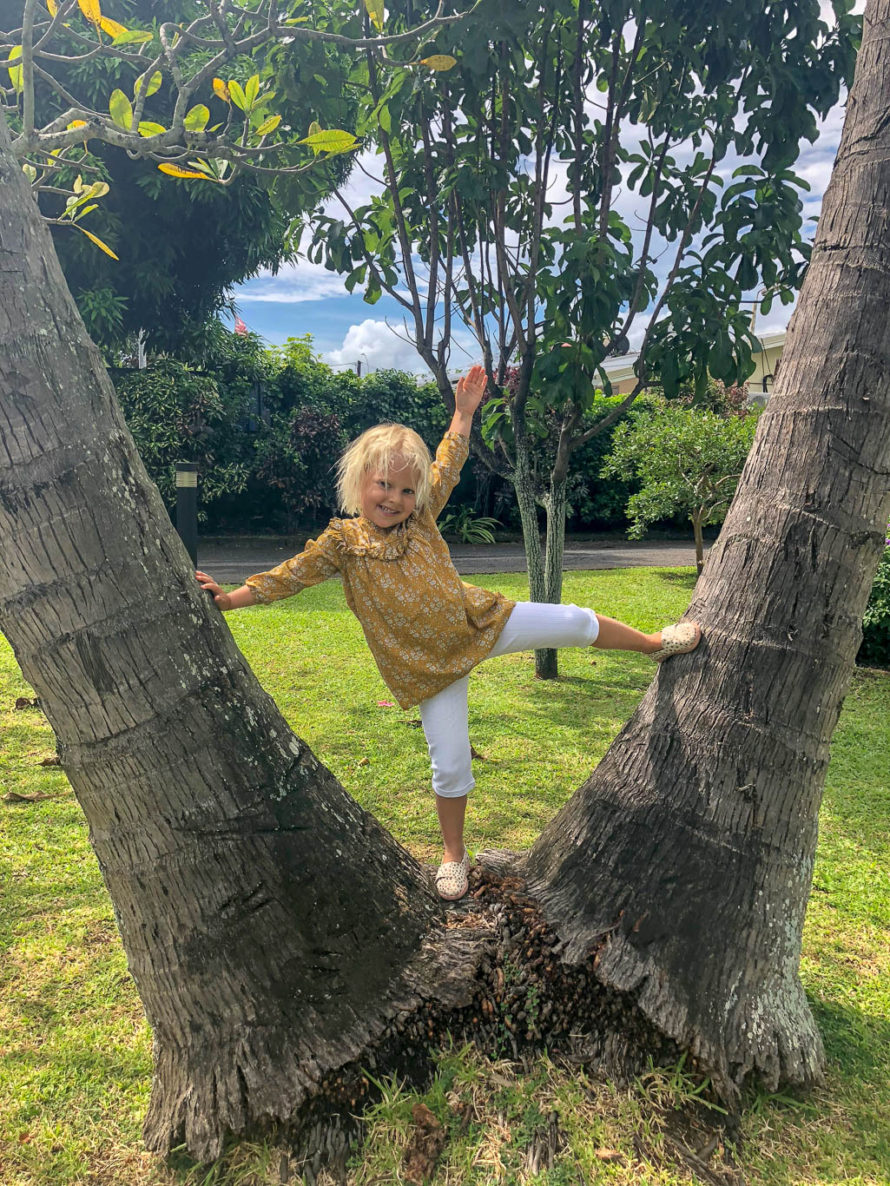
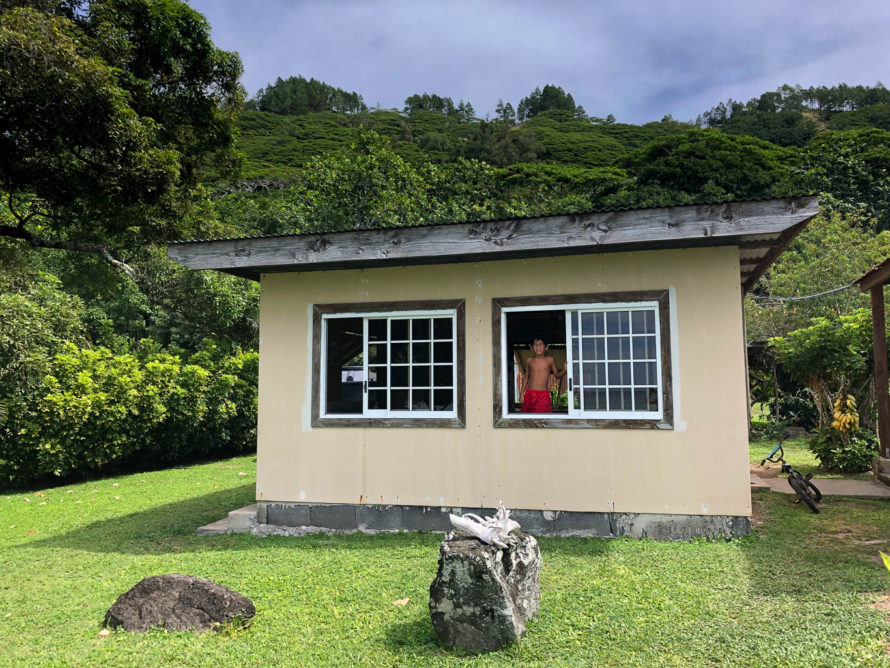
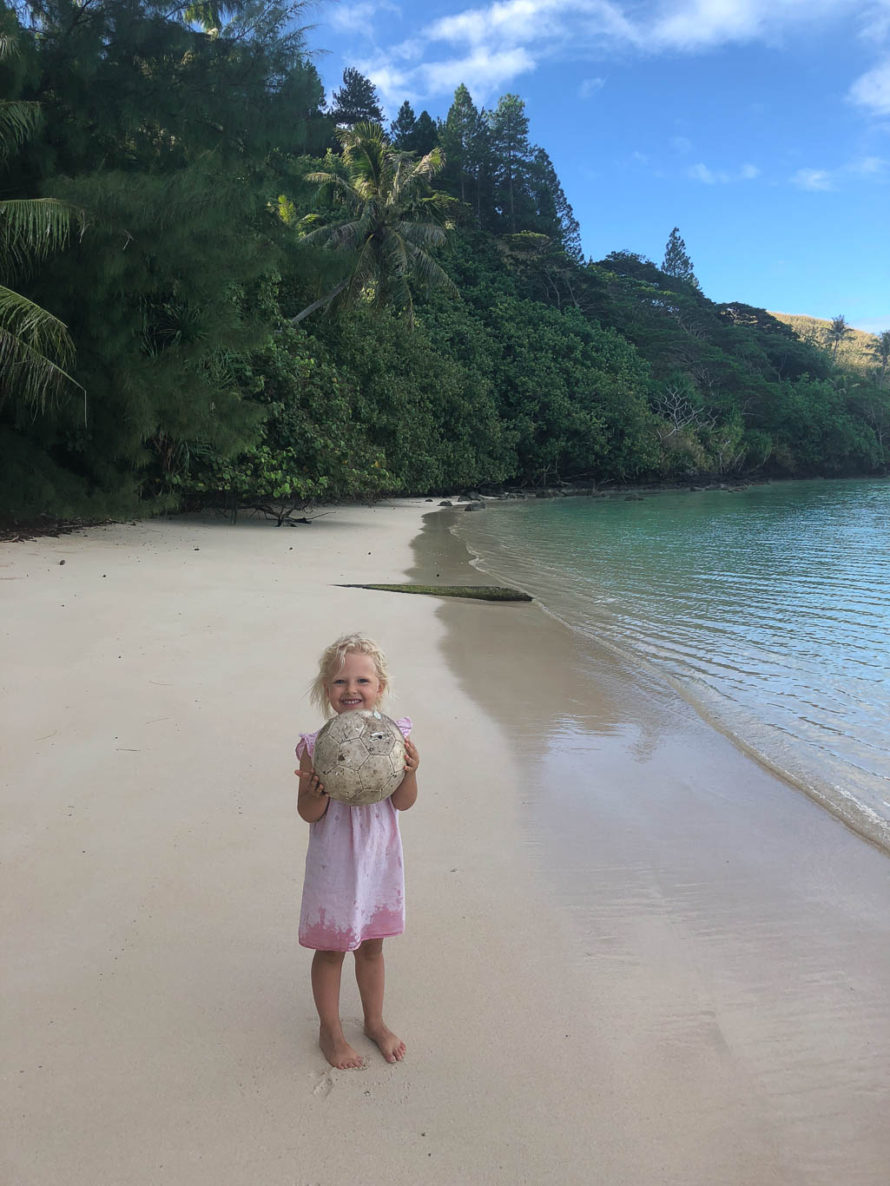


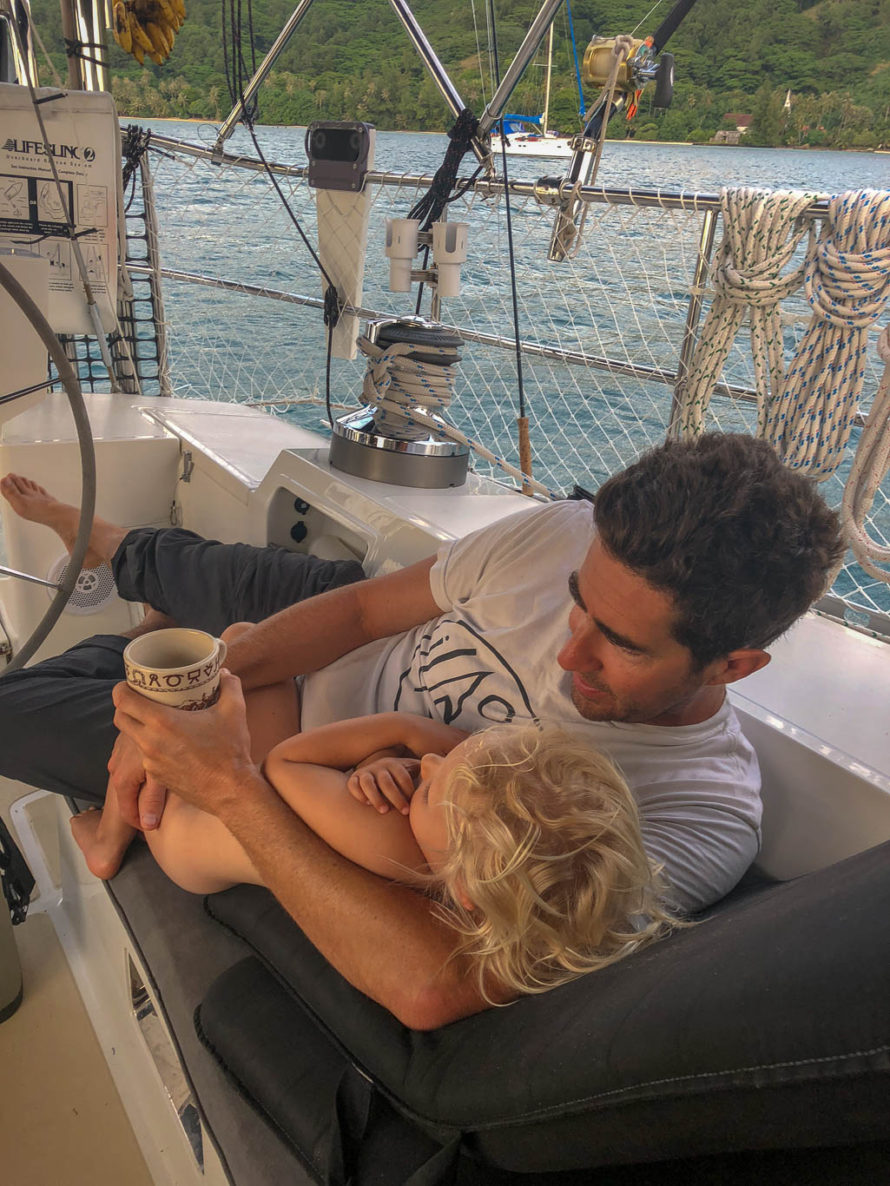

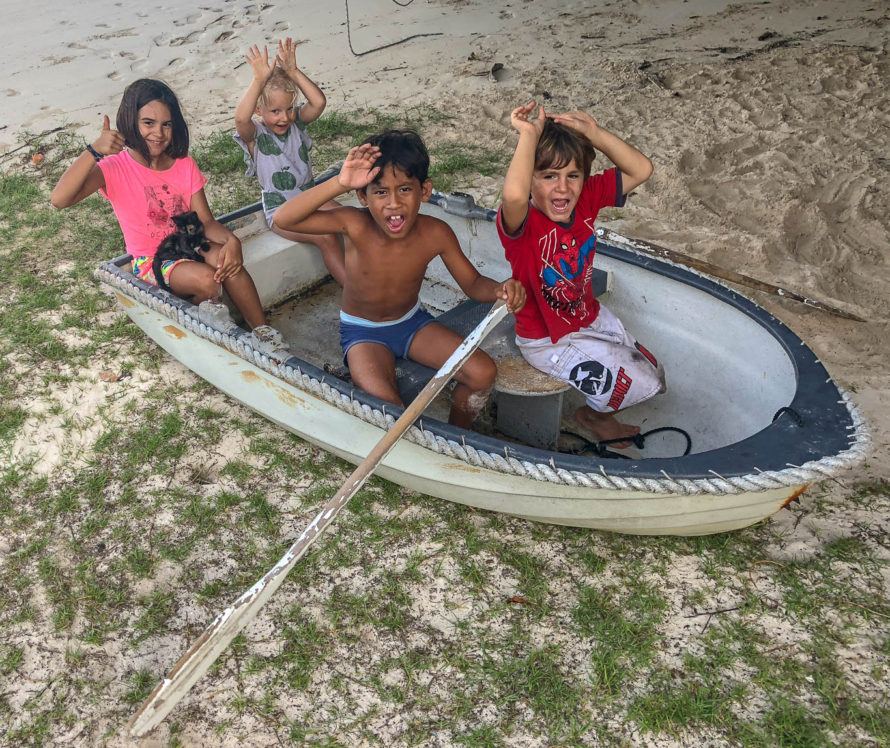
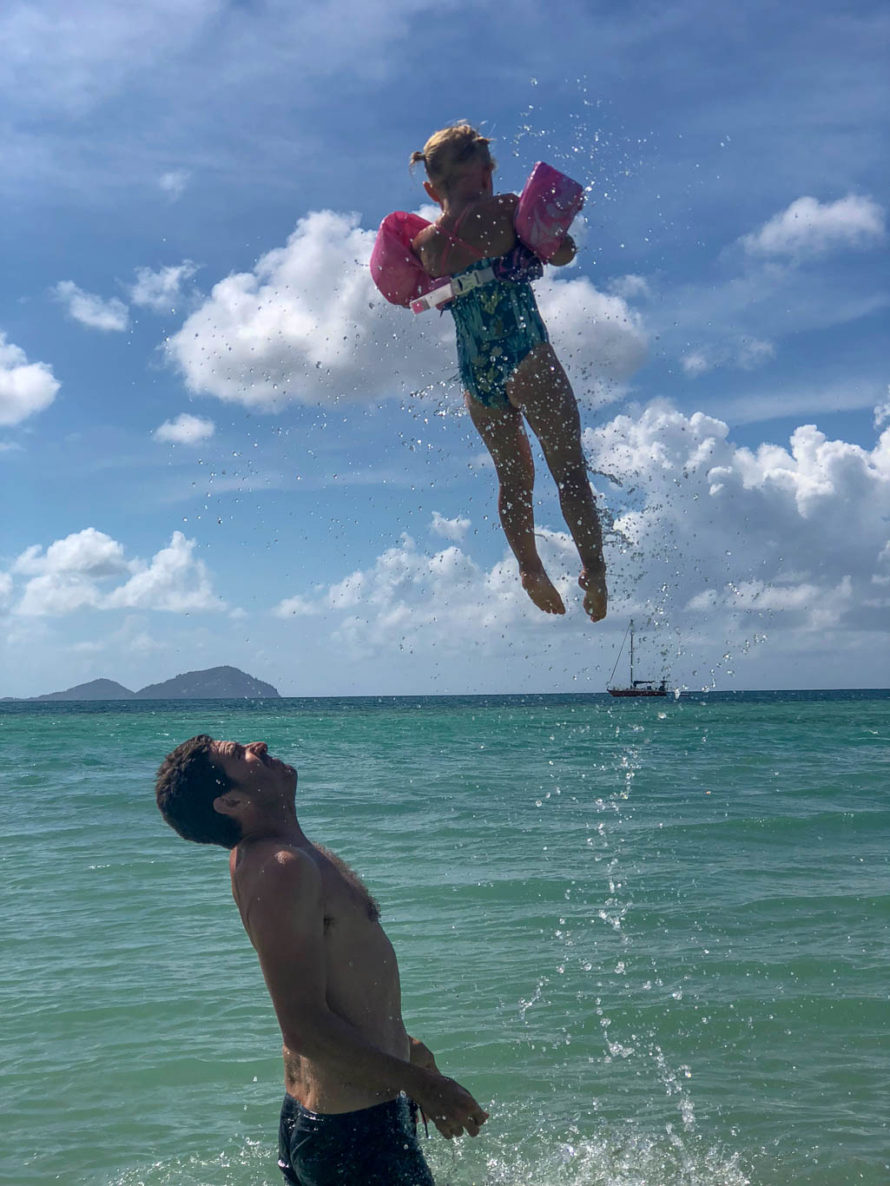
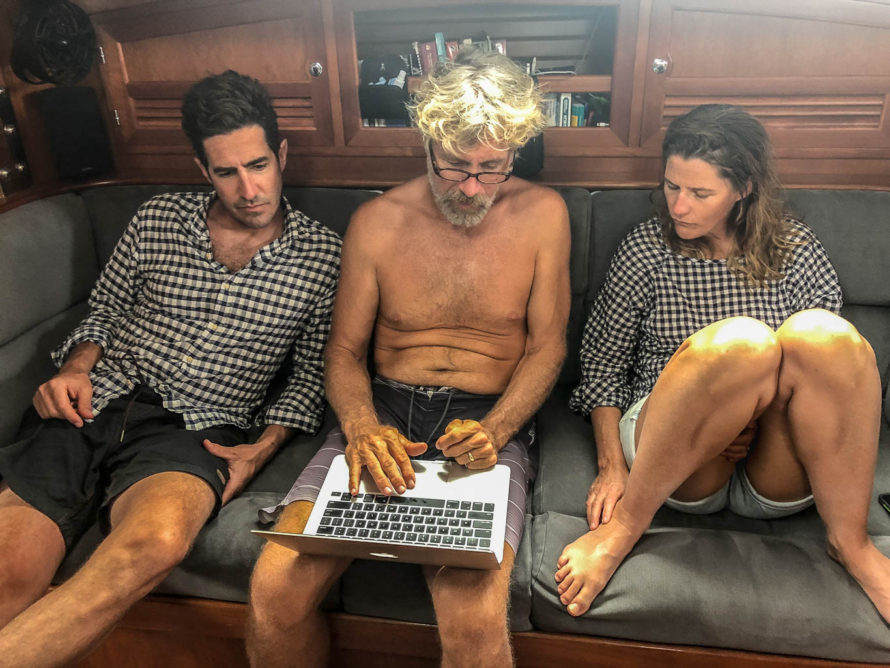
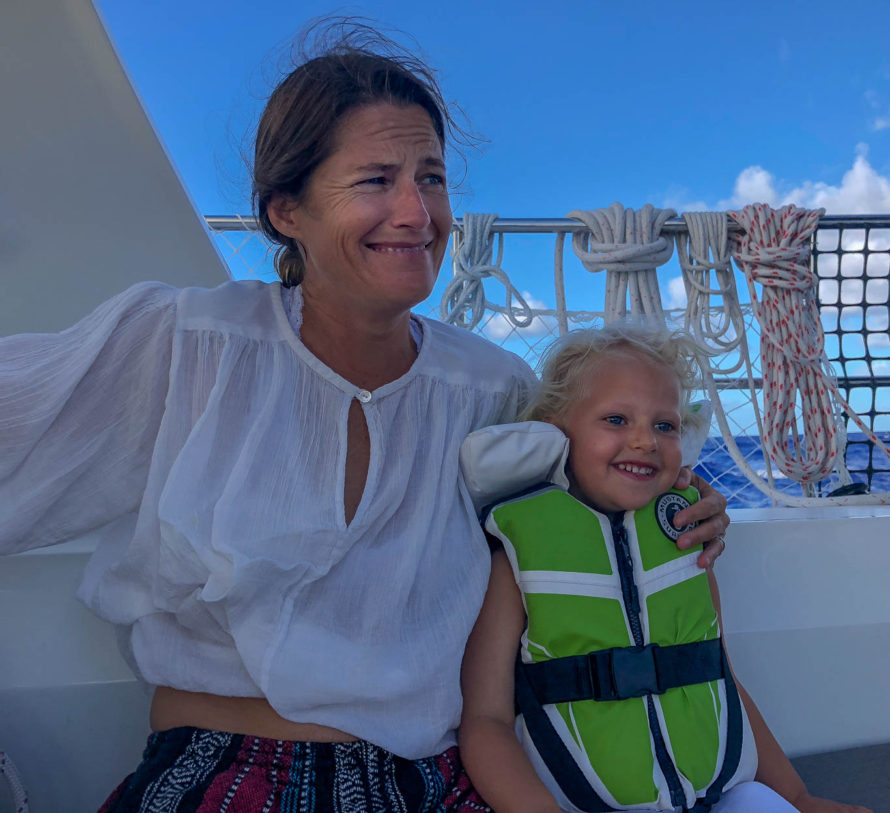
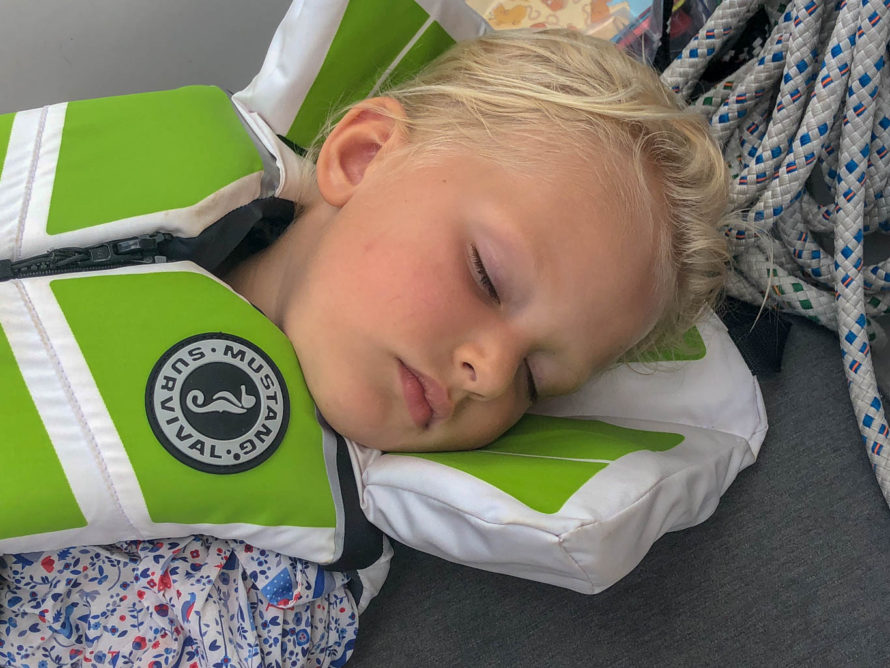
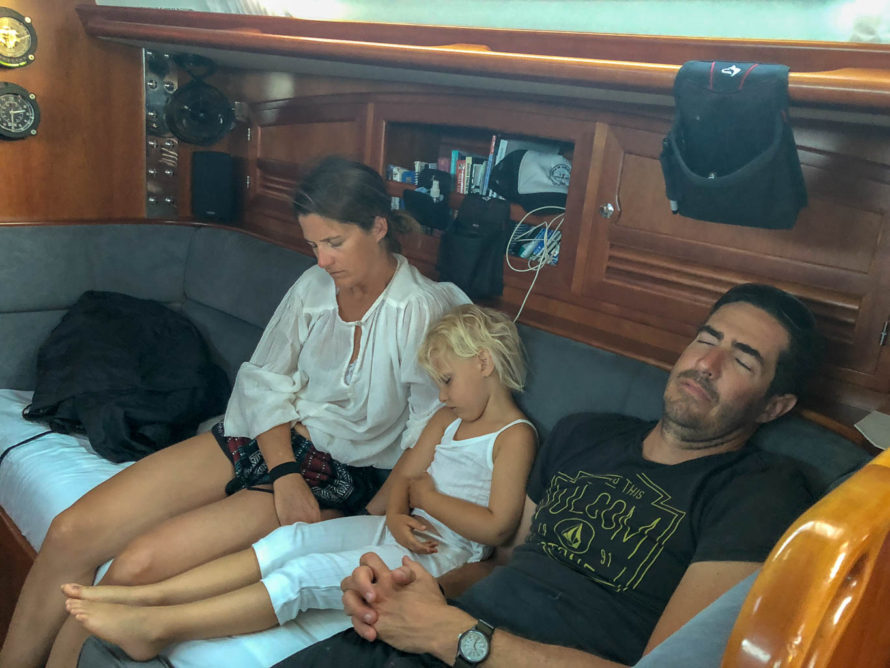
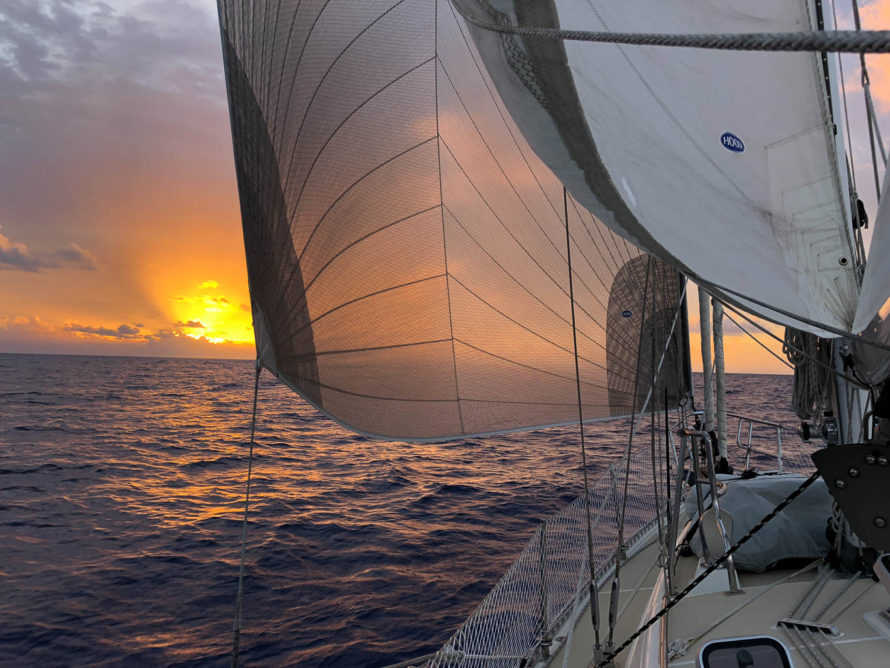
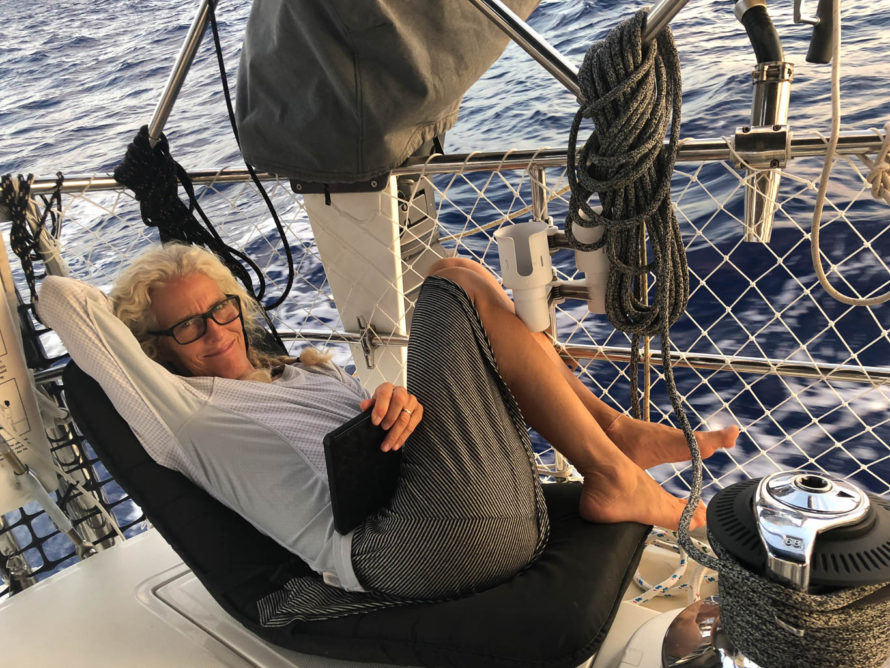
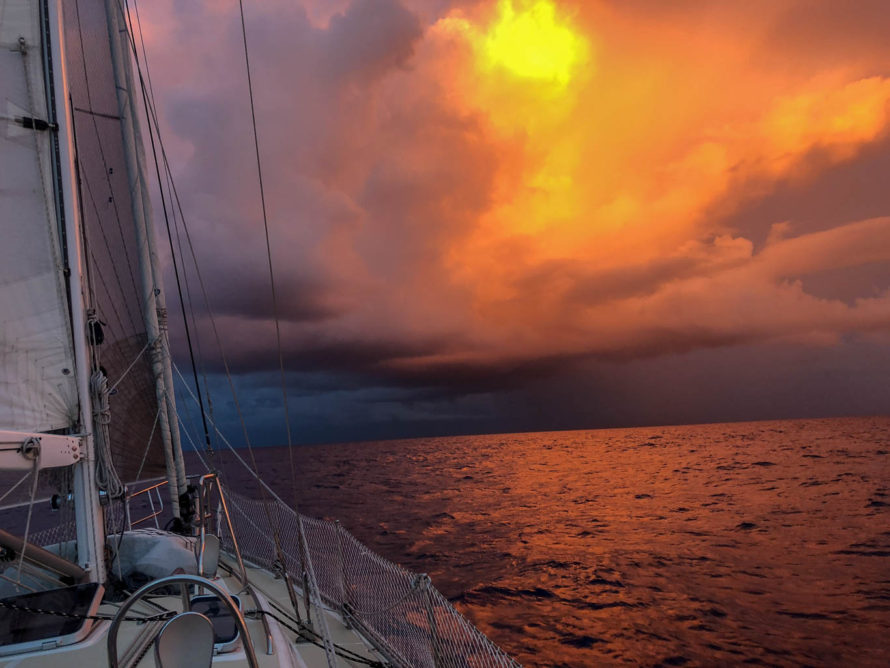
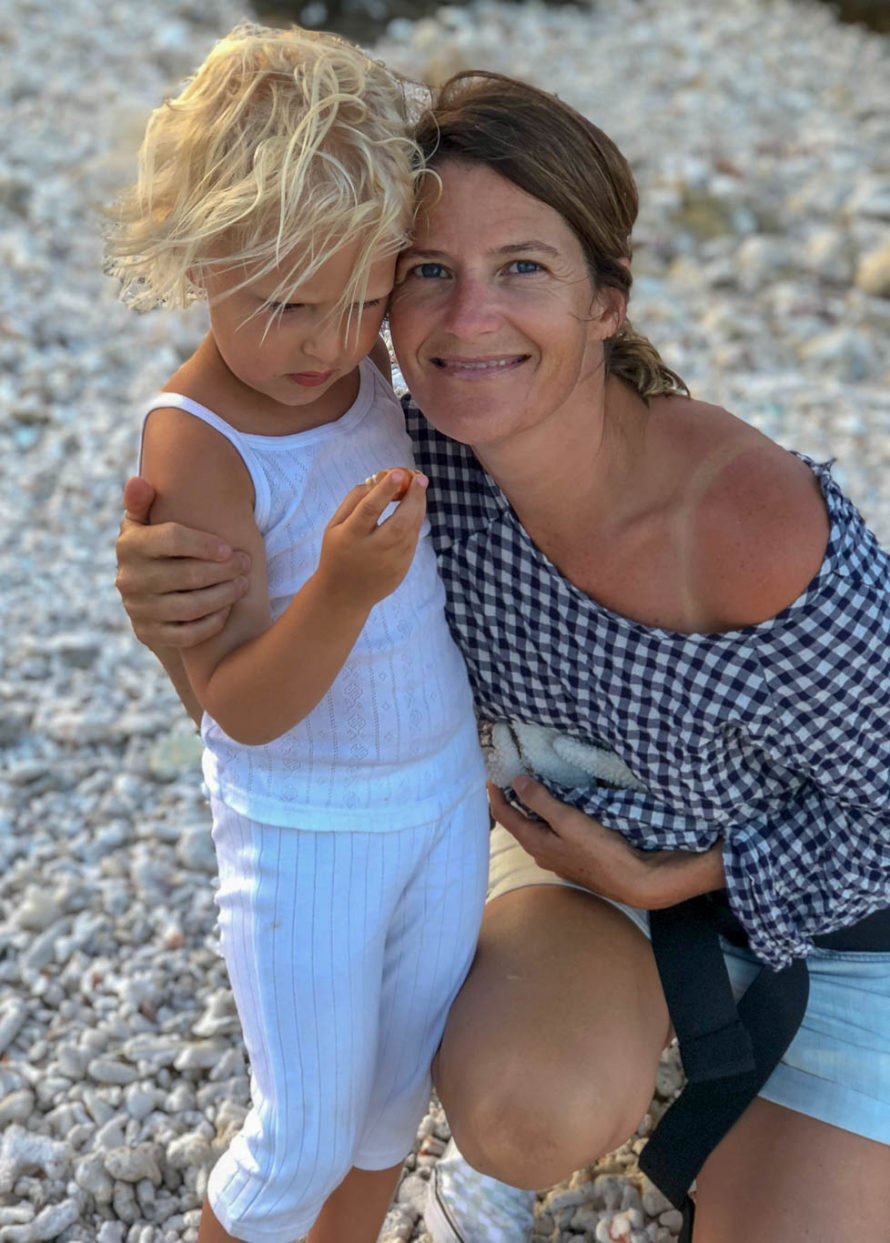
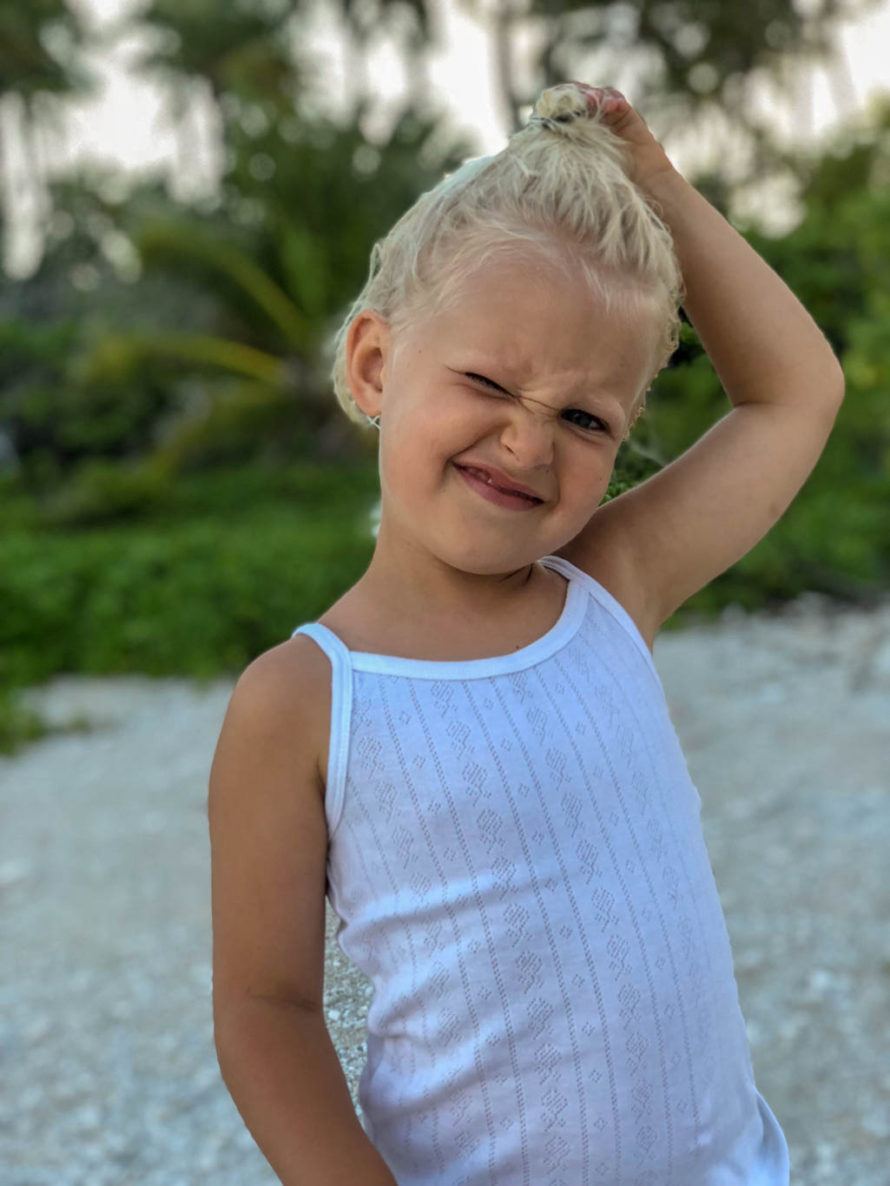
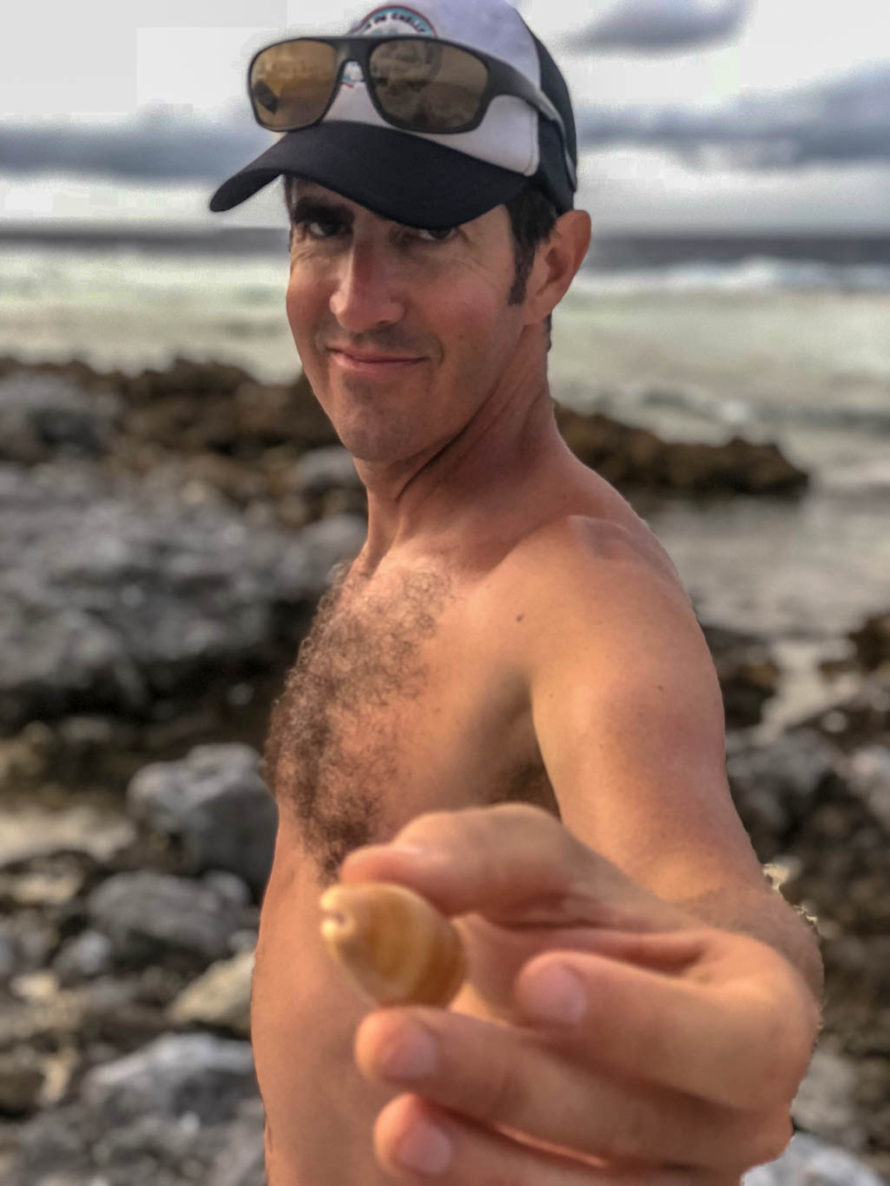
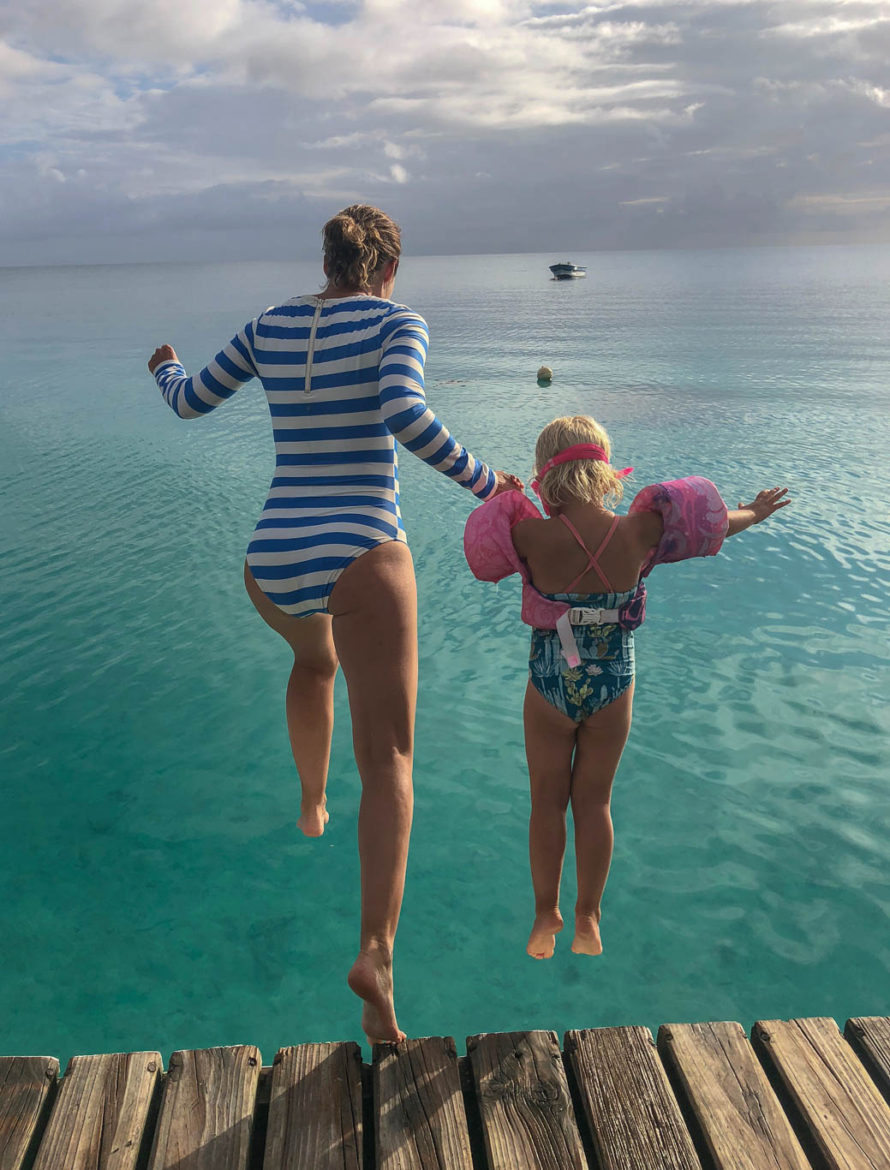

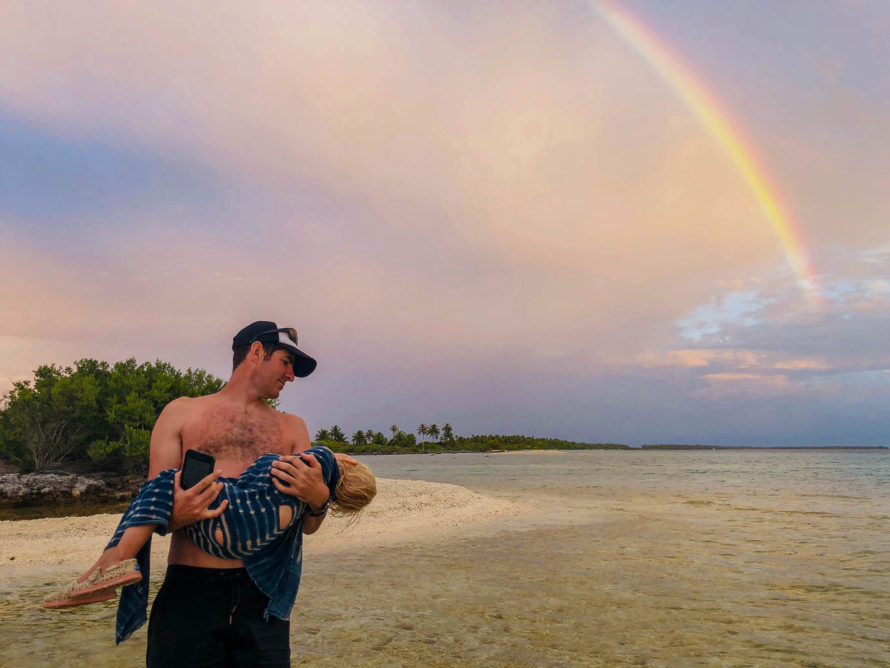
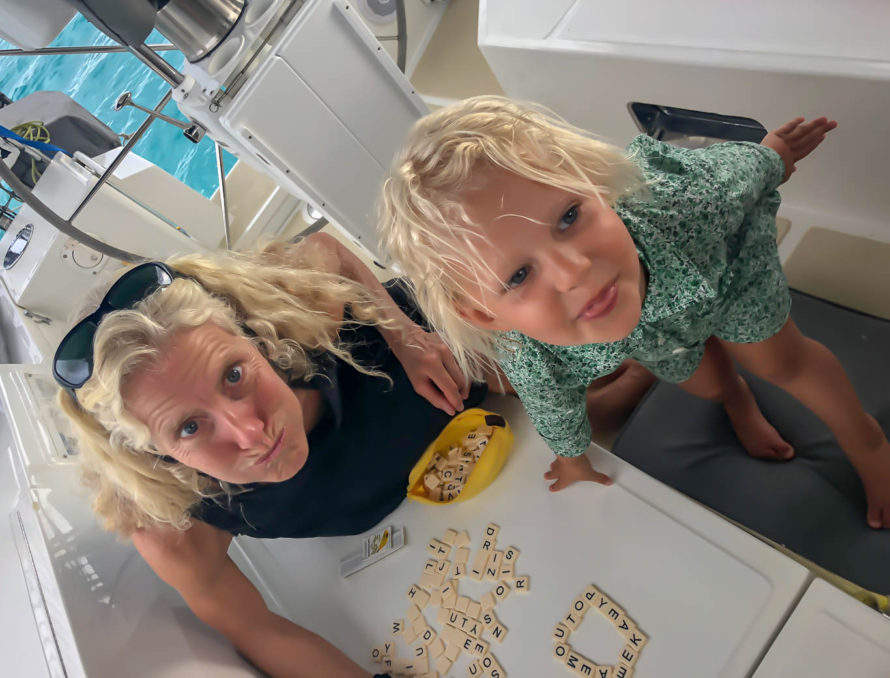


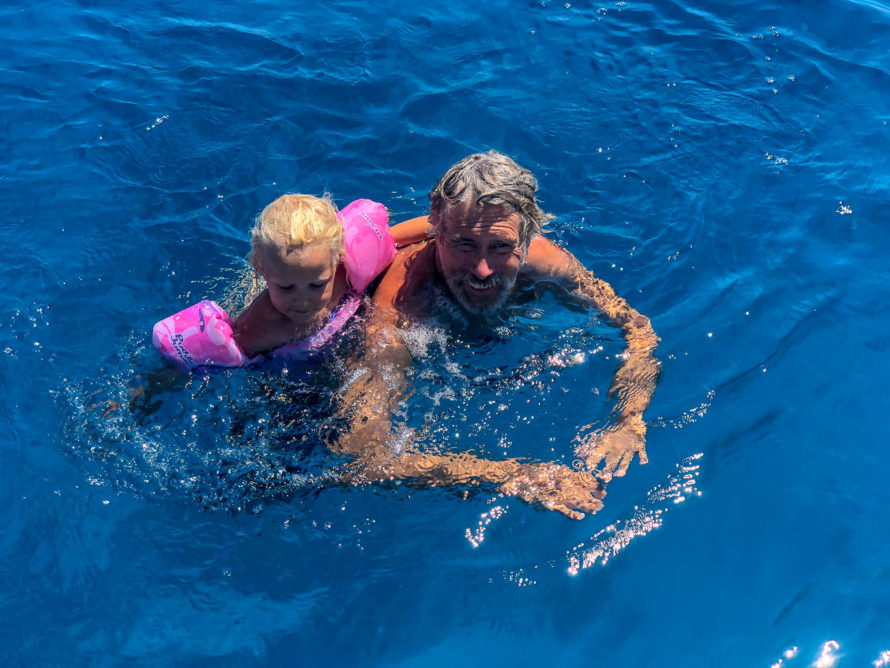



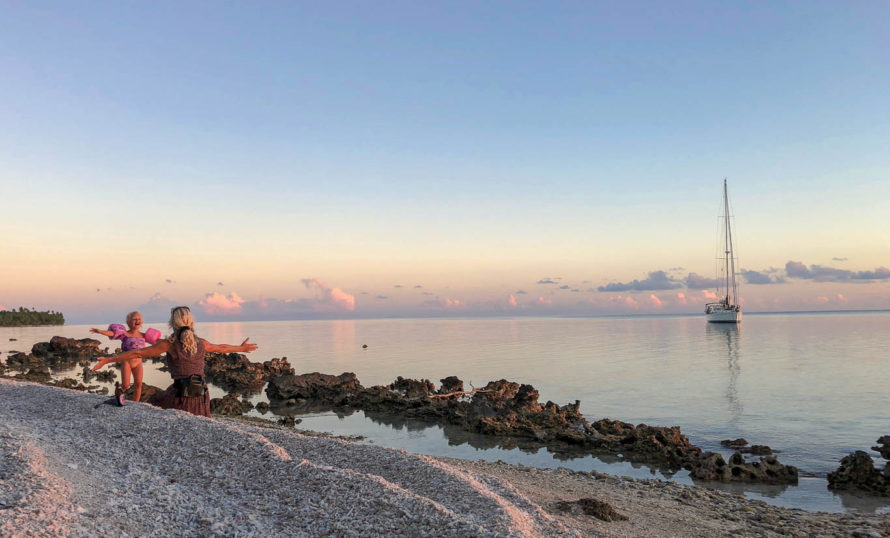
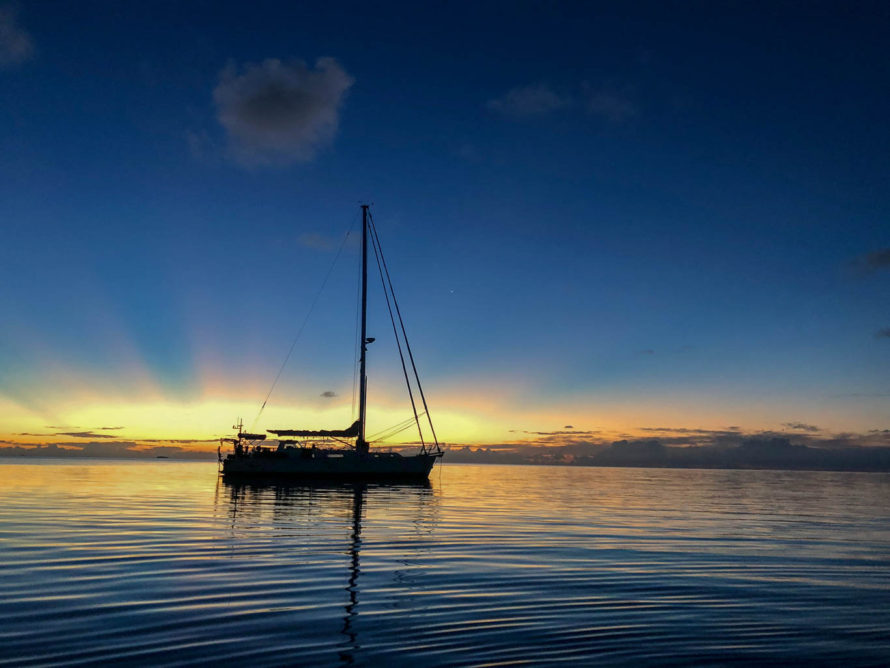
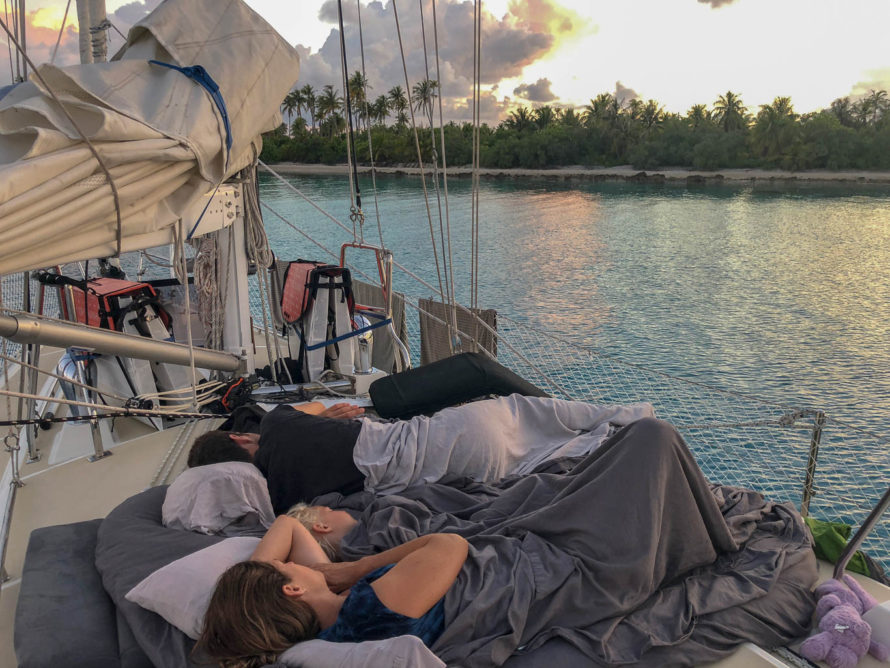
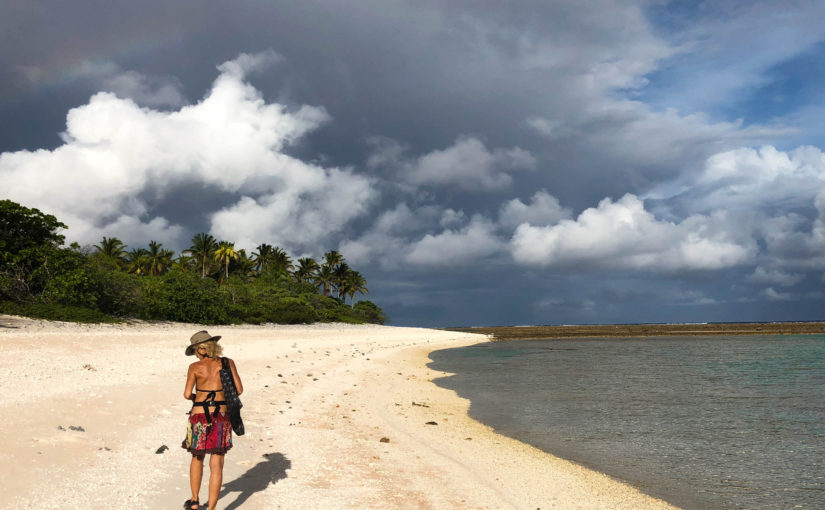






























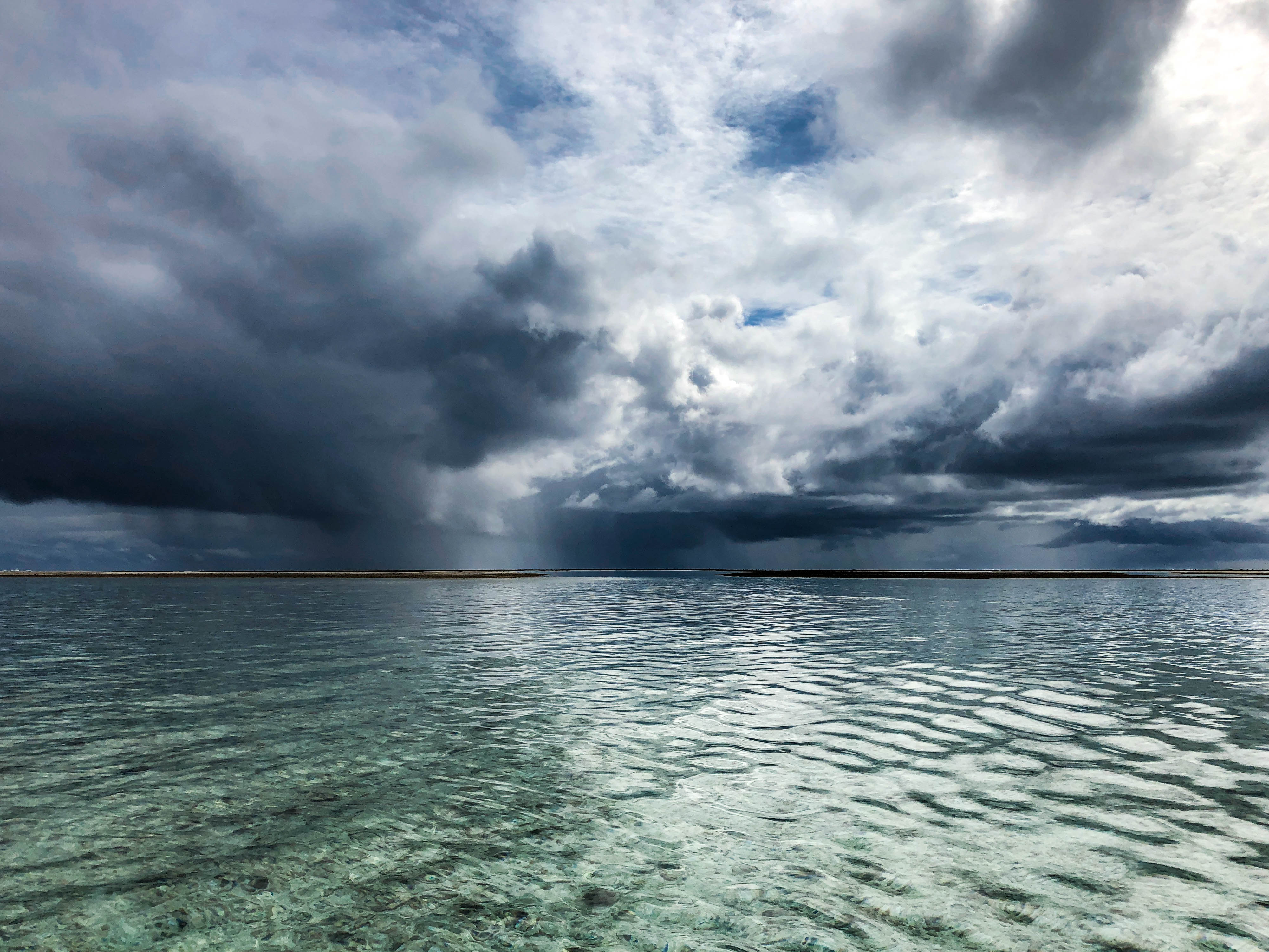






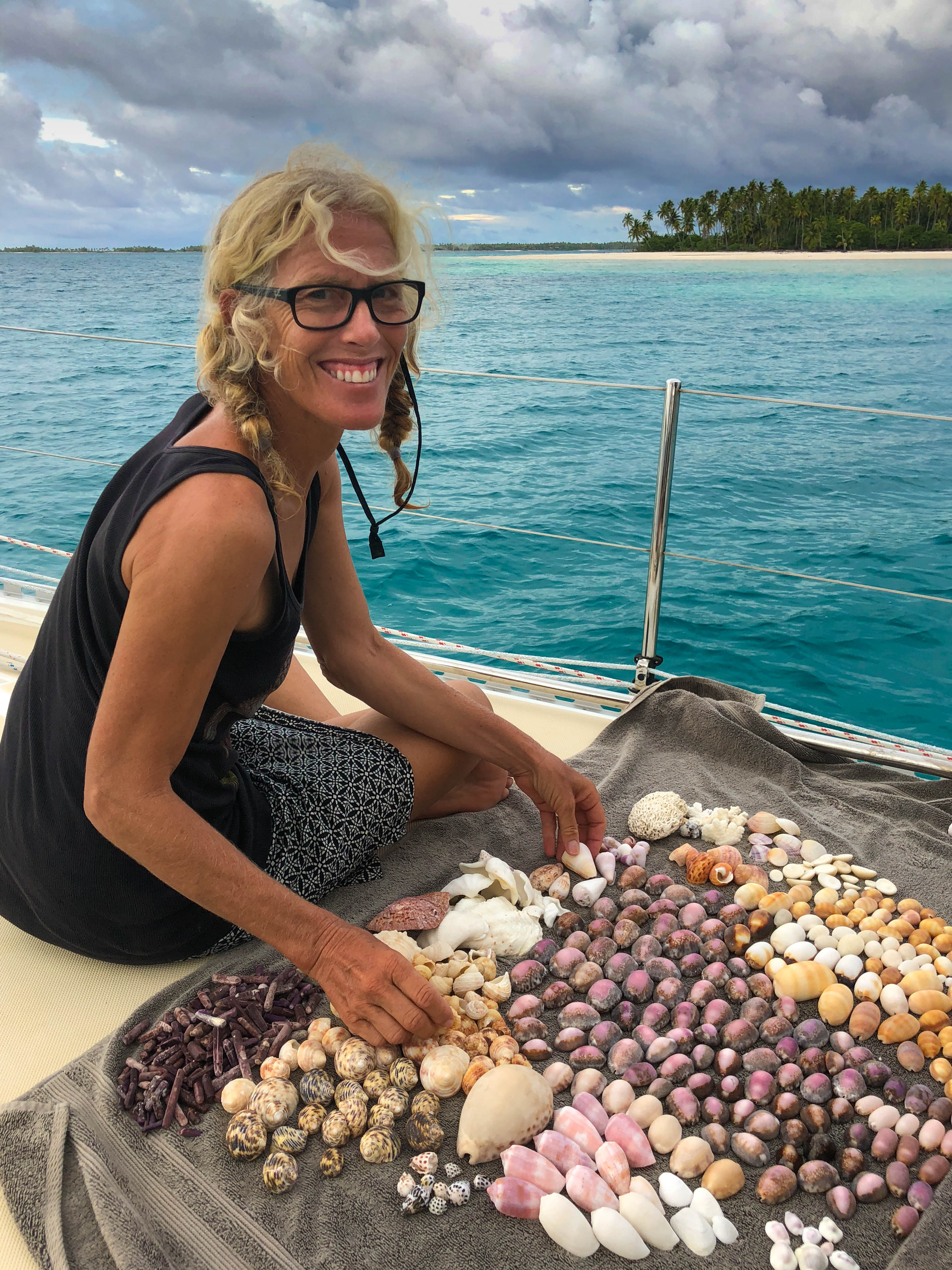


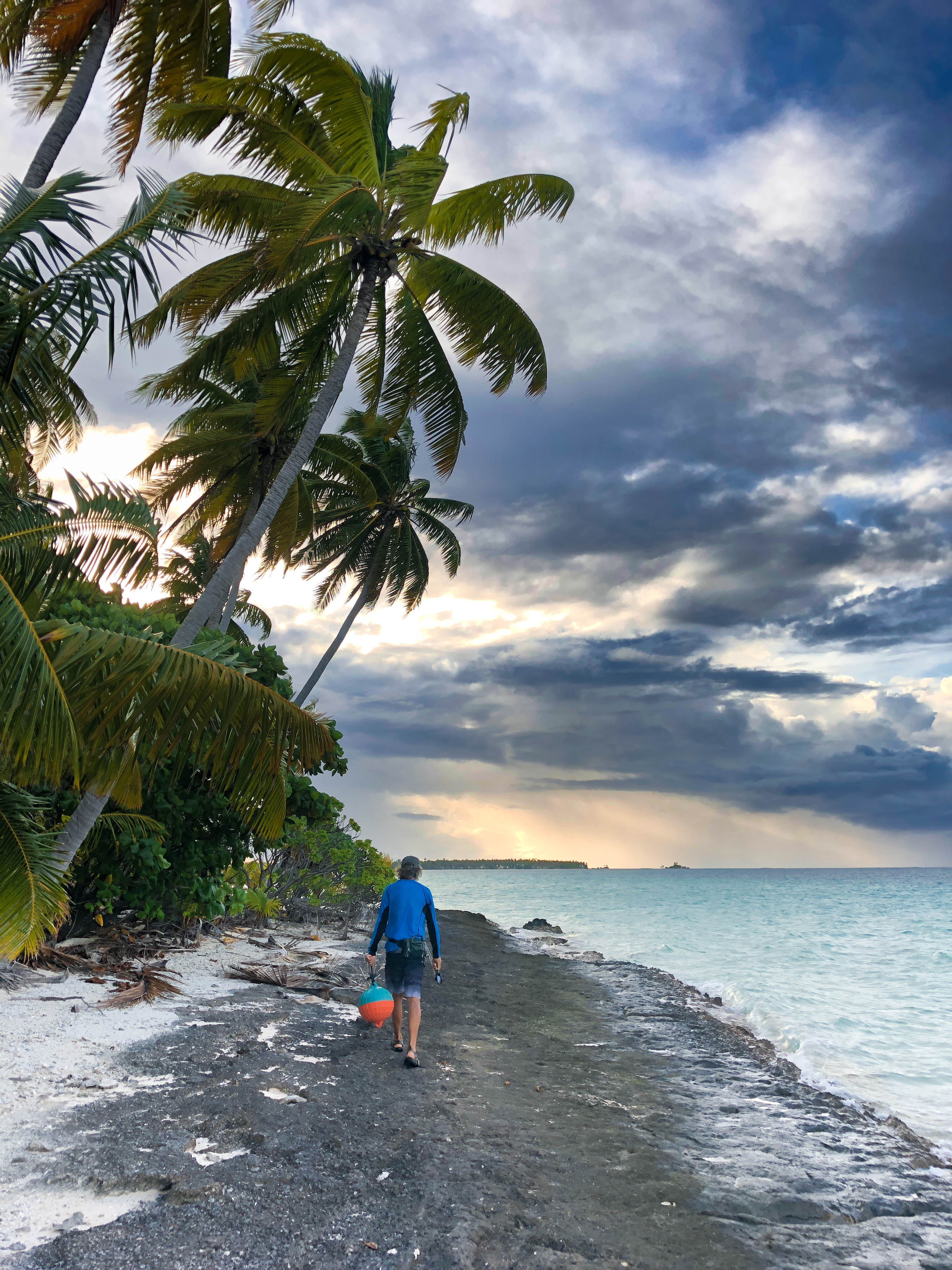





























 " data-envira-height="475" data-envira-width="570" />
" data-envira-height="475" data-envira-width="570" />







































 " data-envira-height="480" data-envira-width="570" />
" data-envira-height="480" data-envira-width="570" />
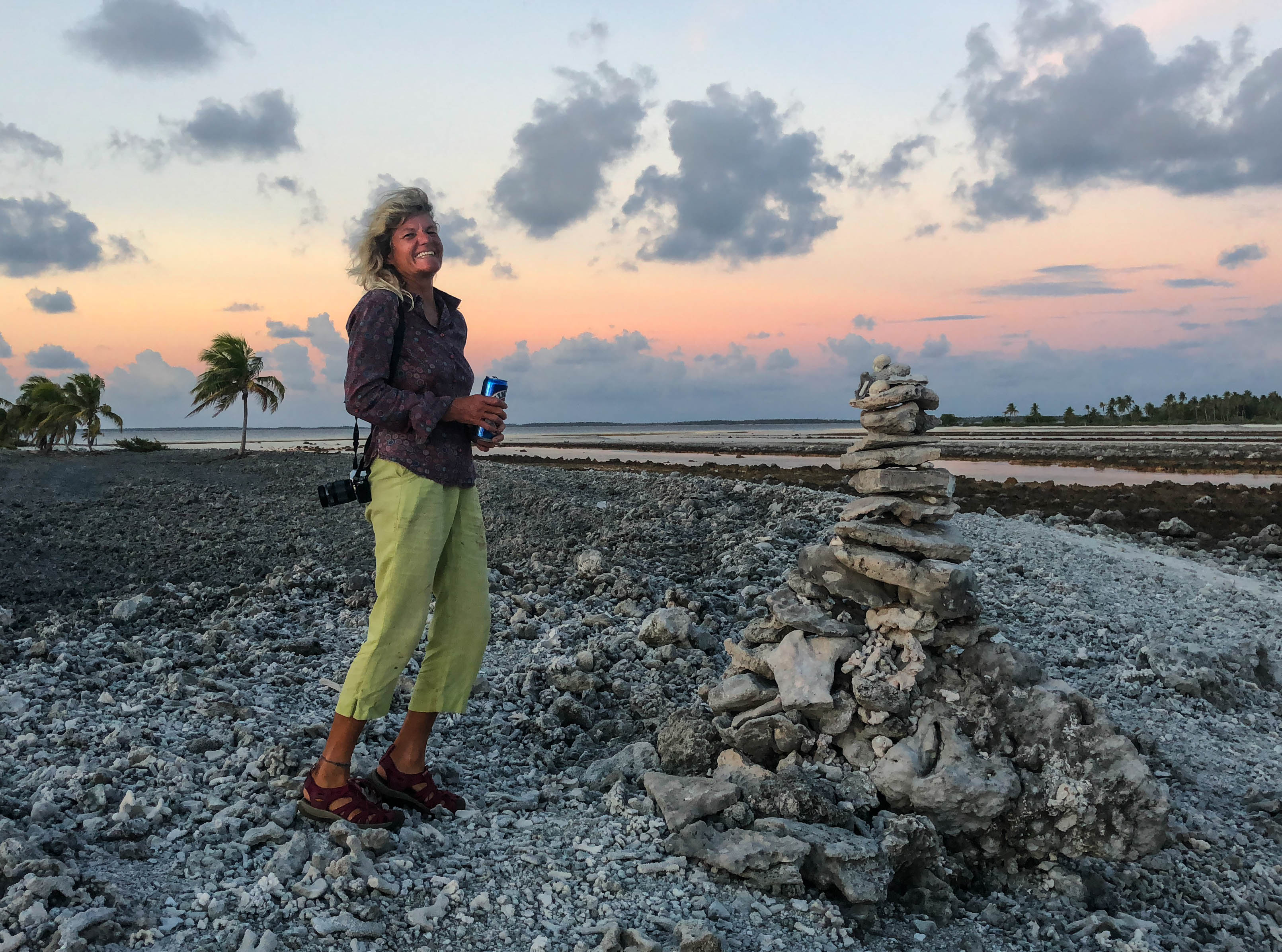




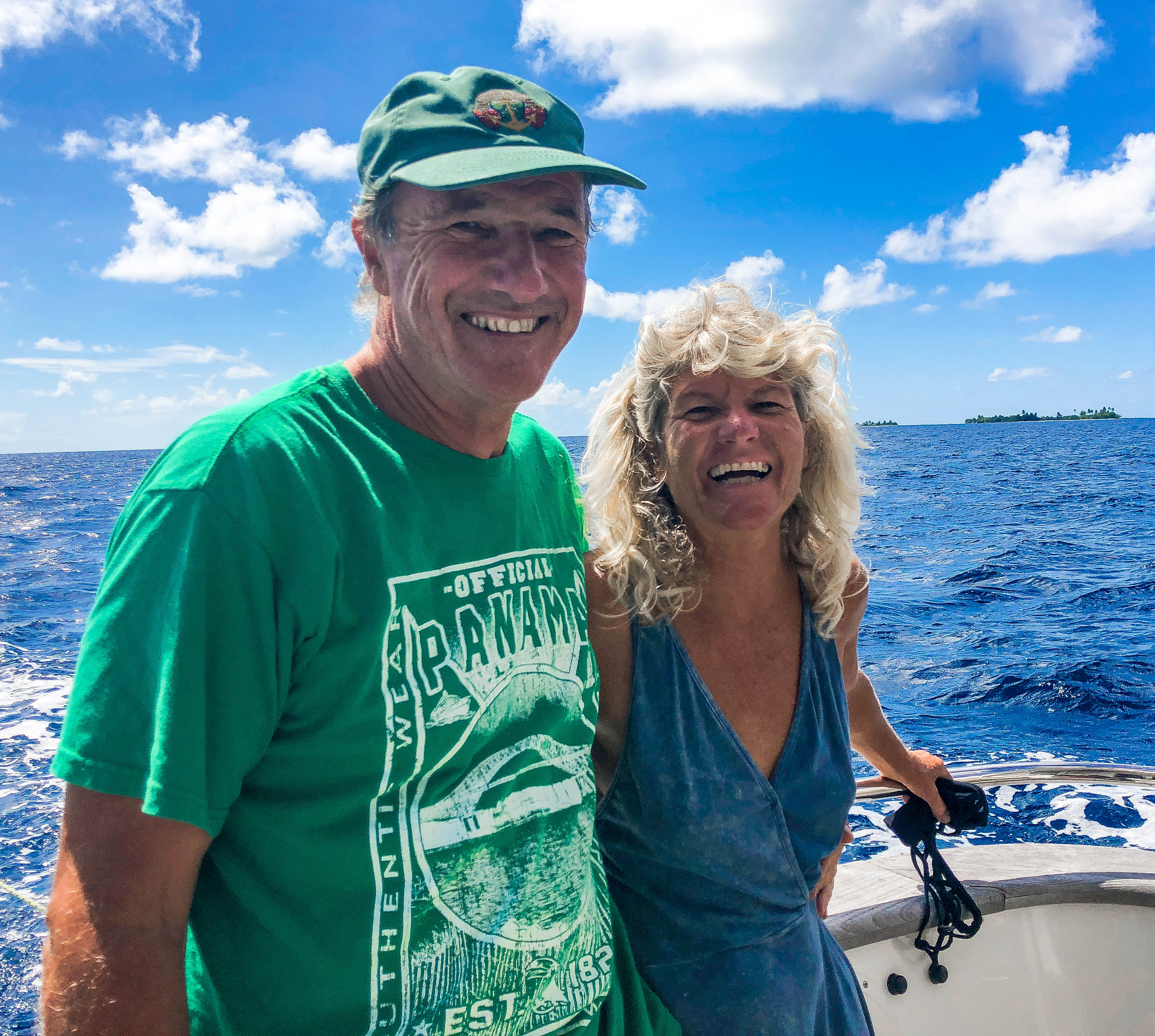











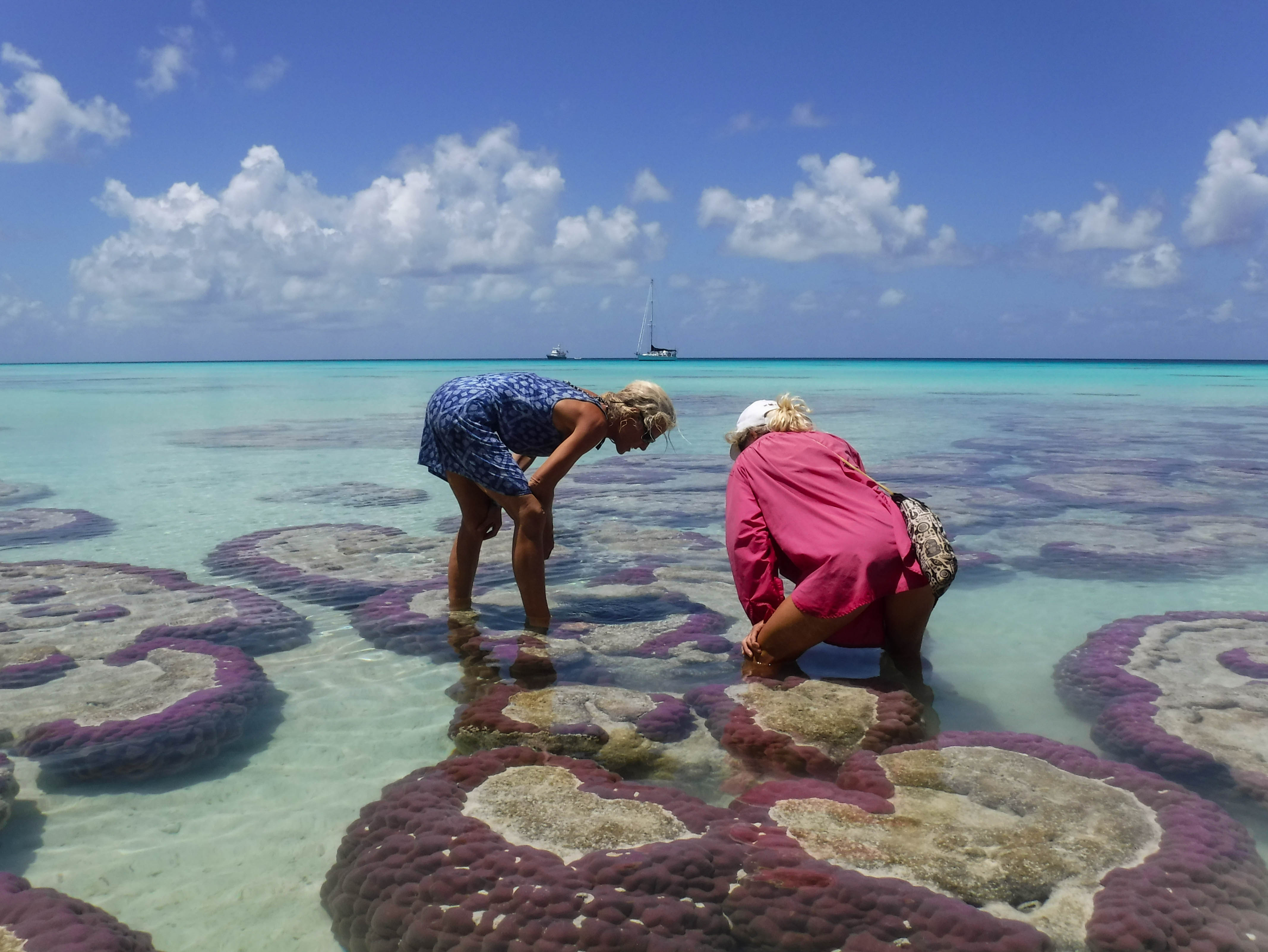



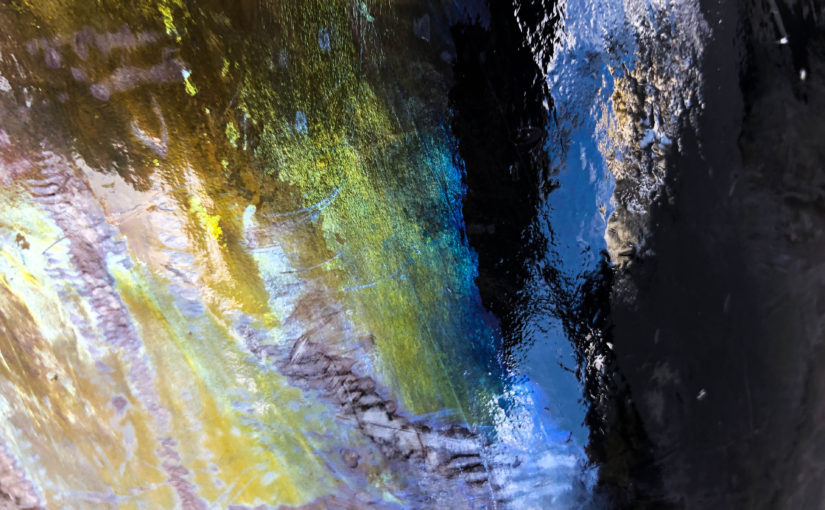


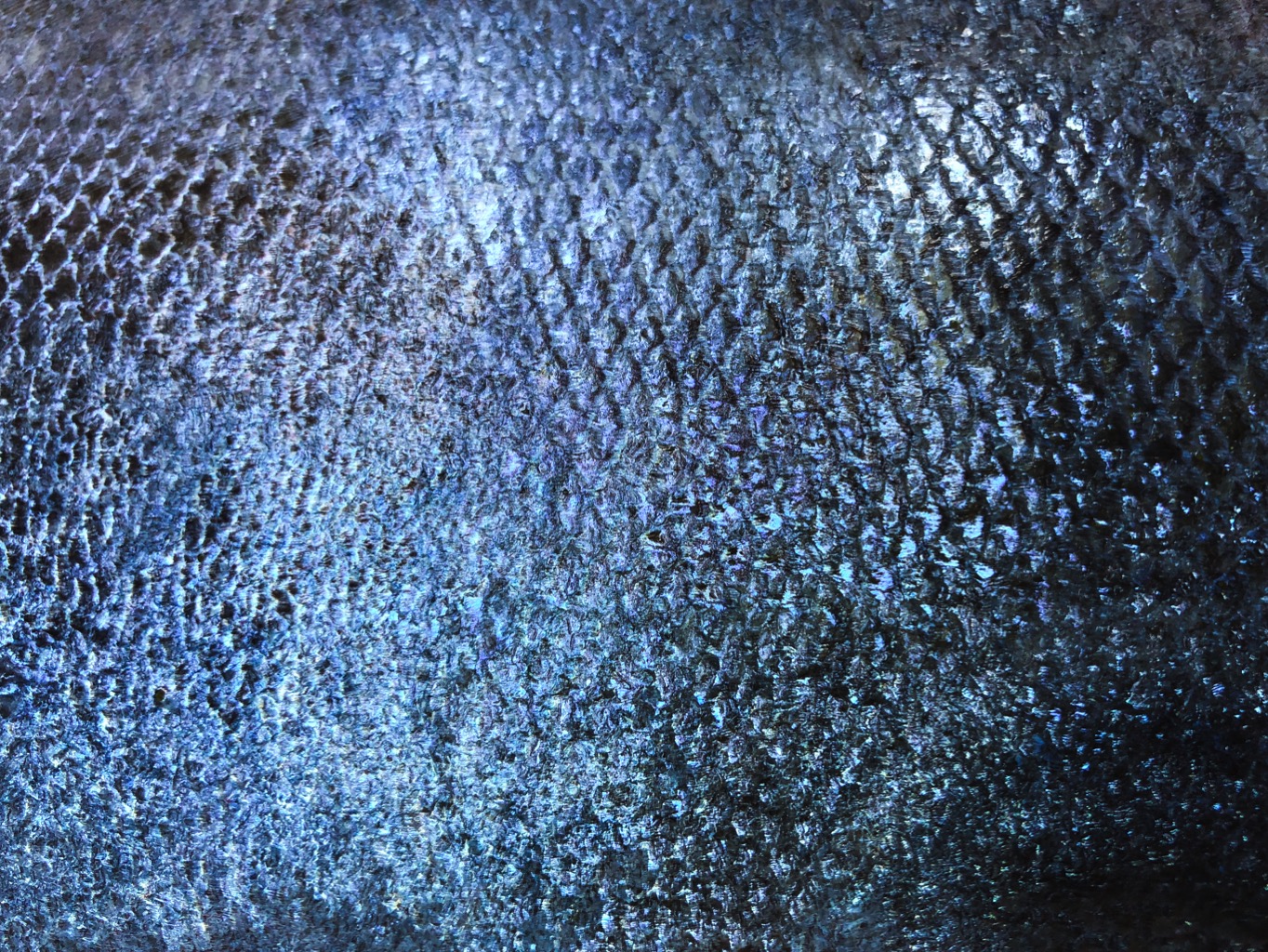
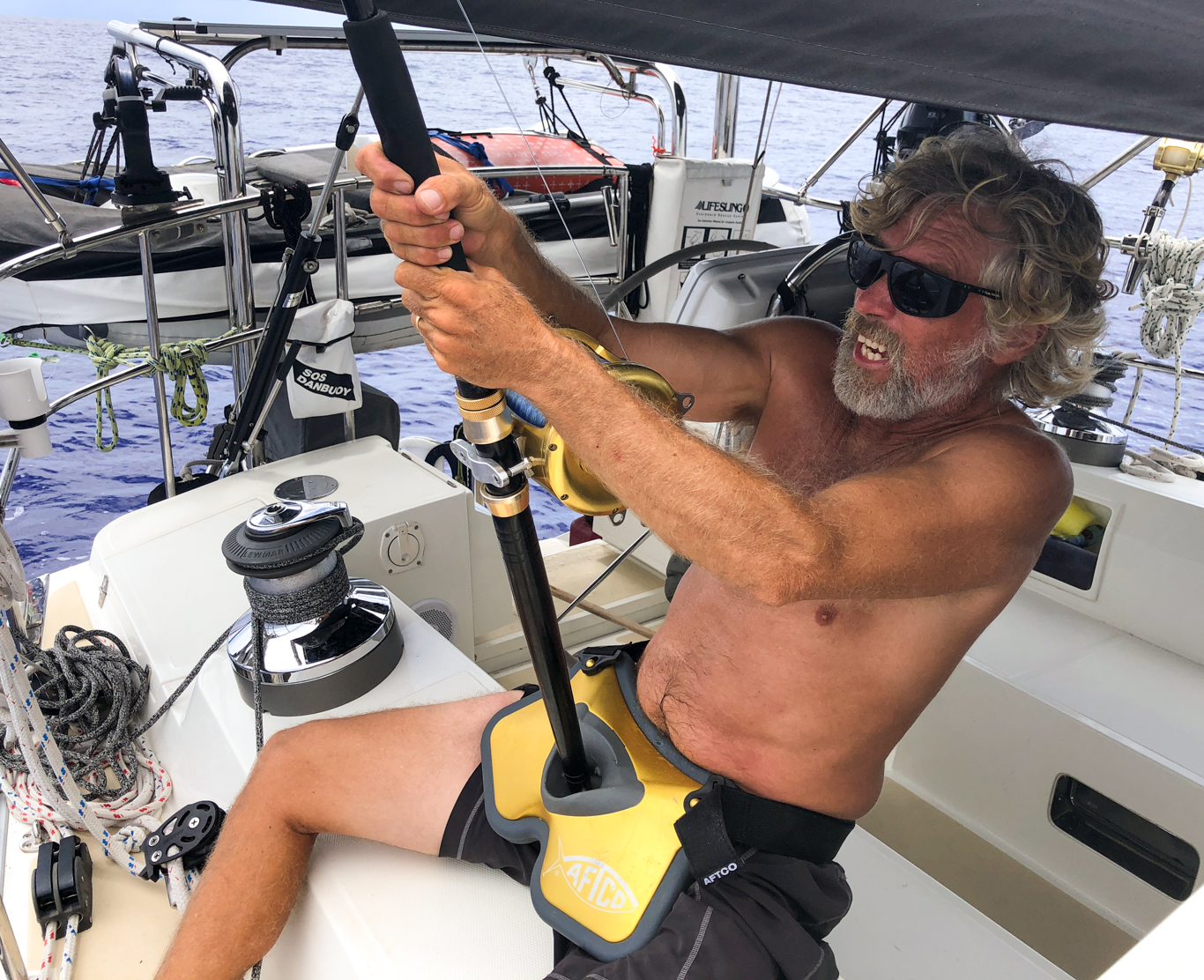


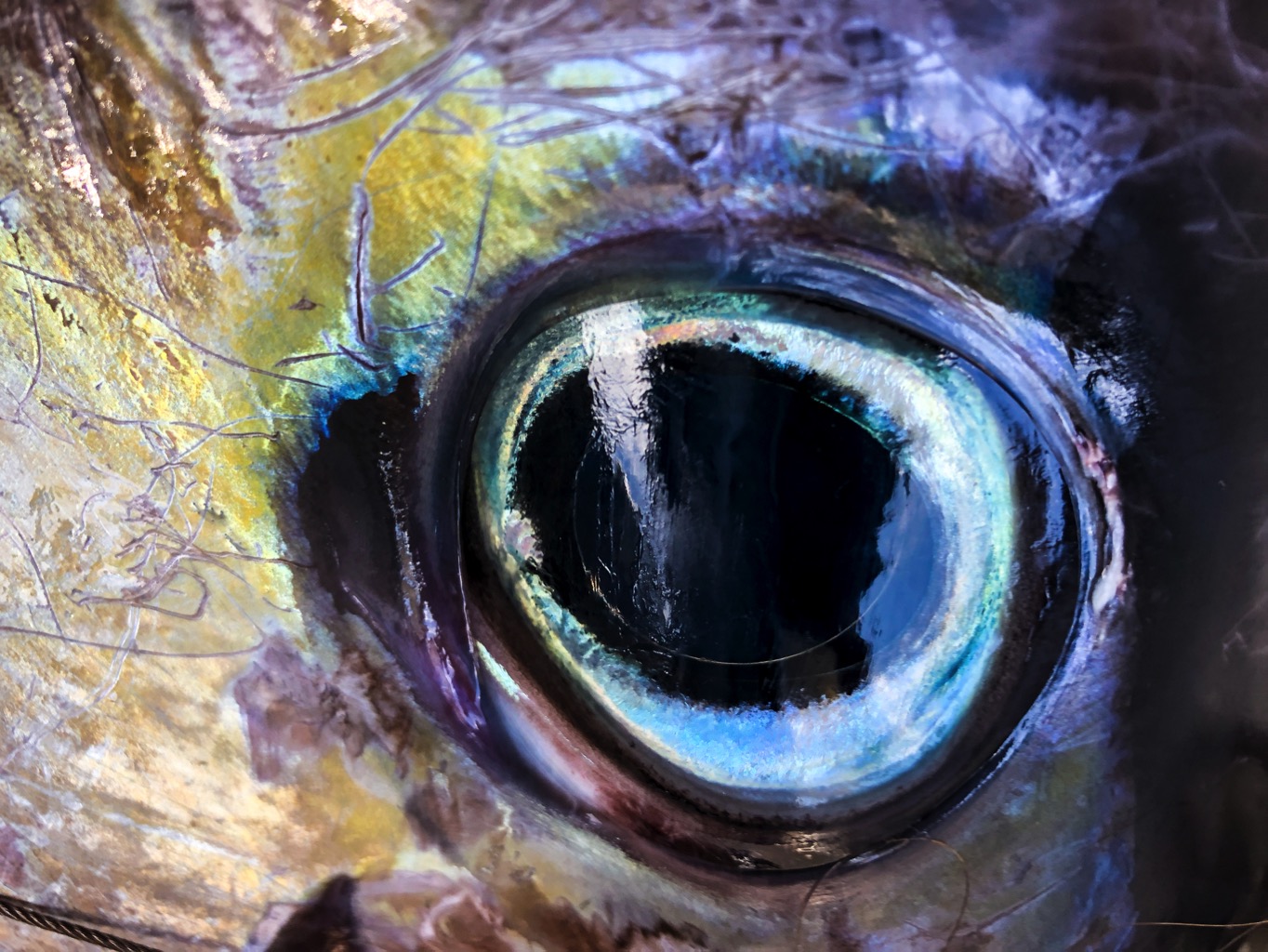



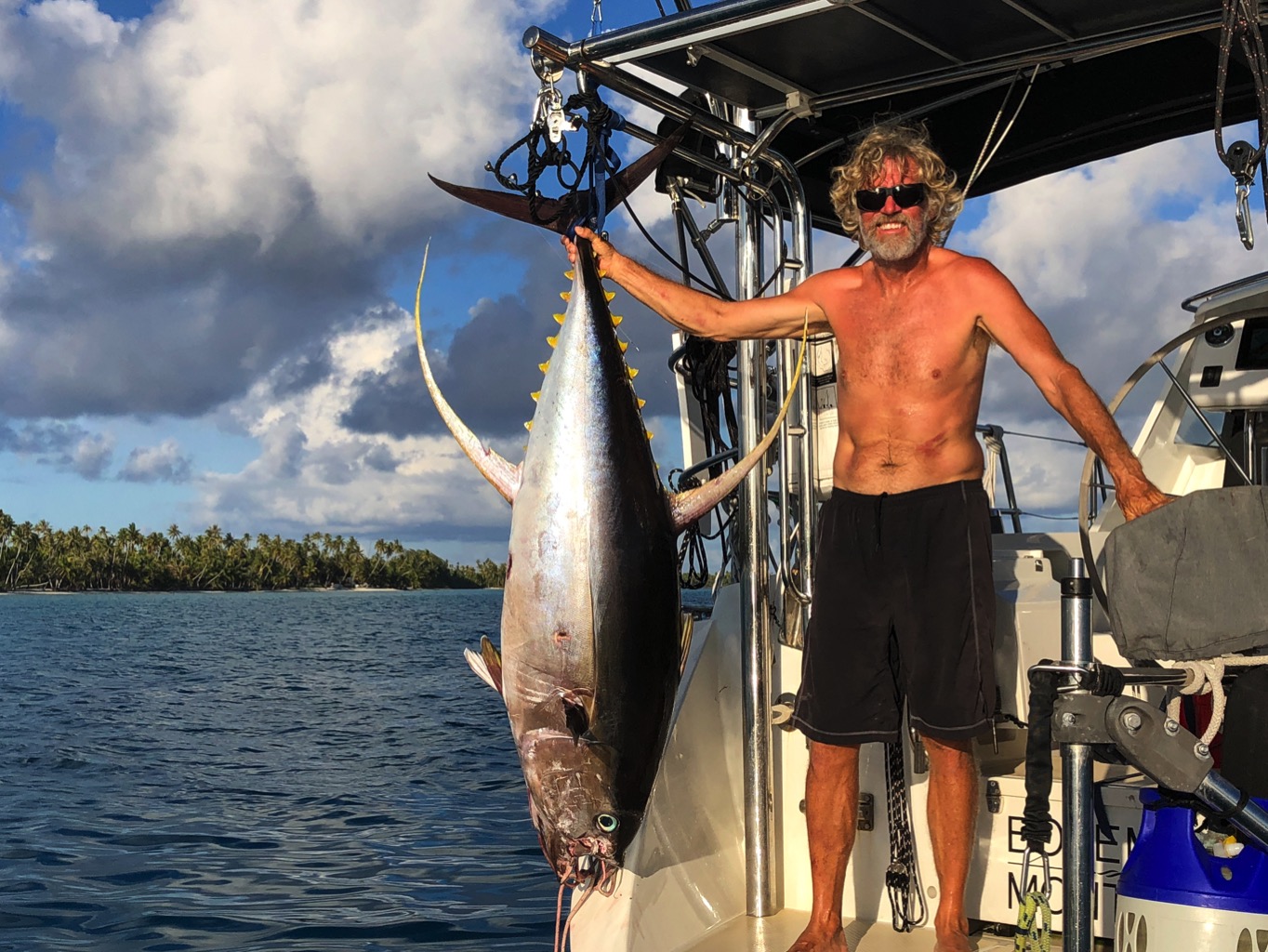


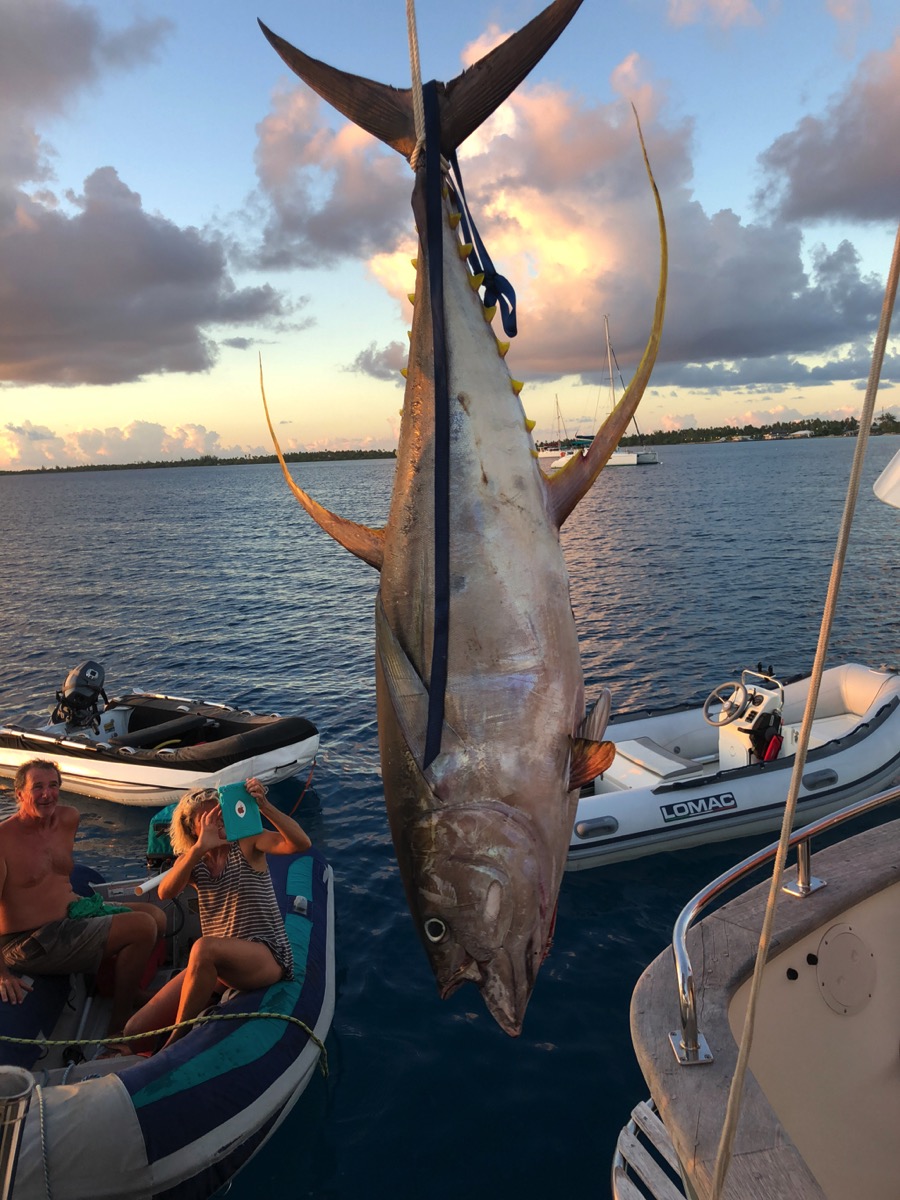

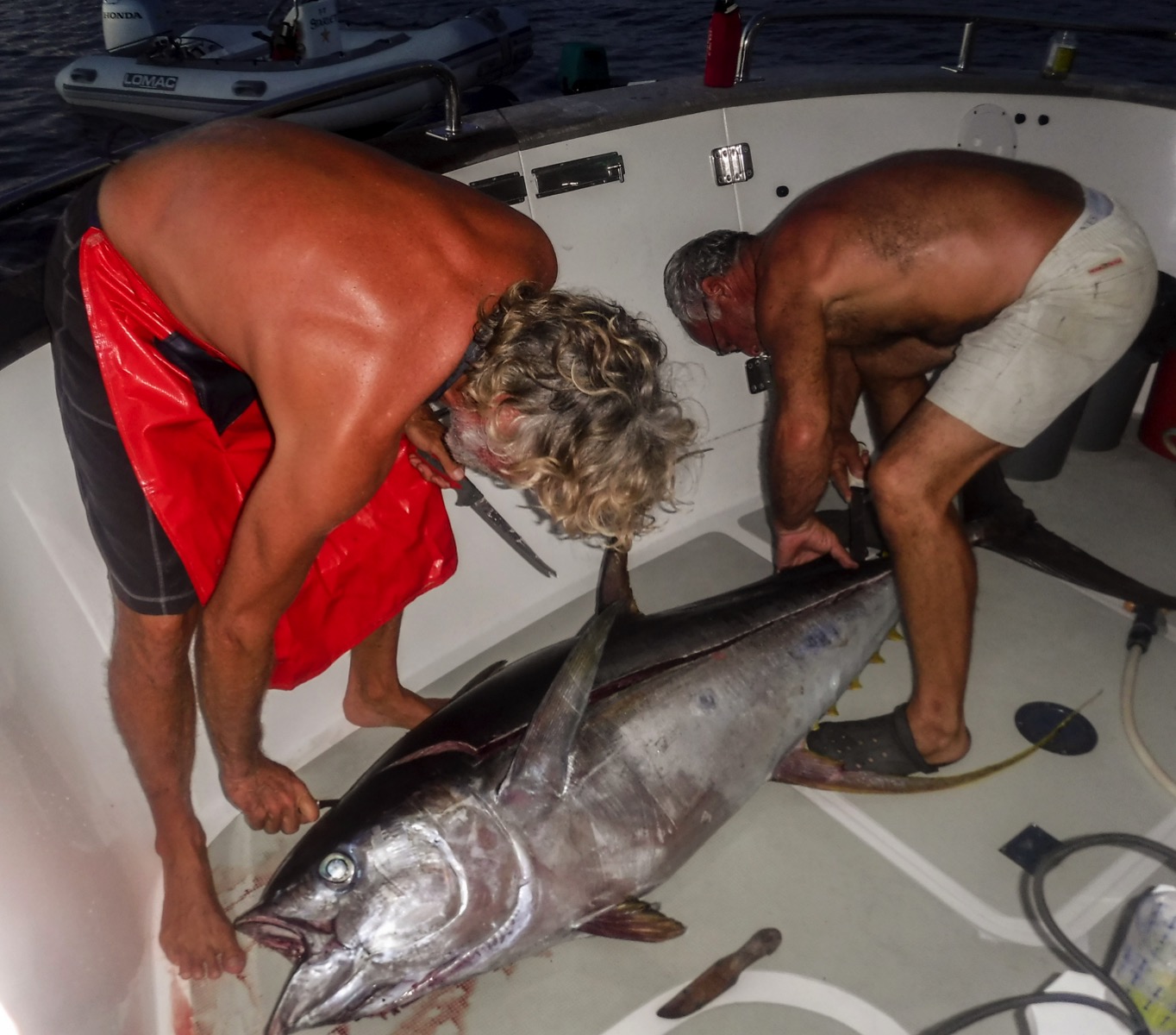
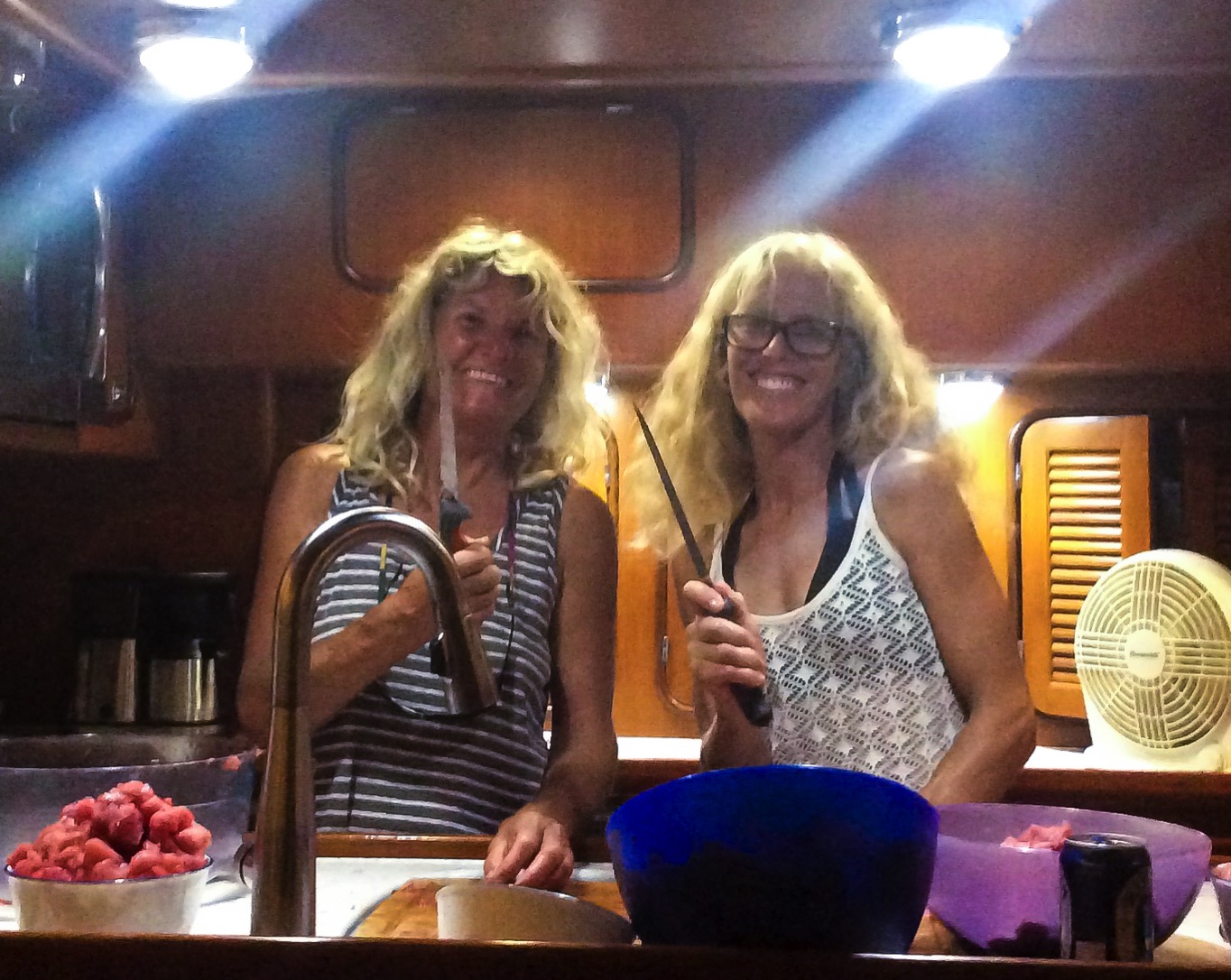
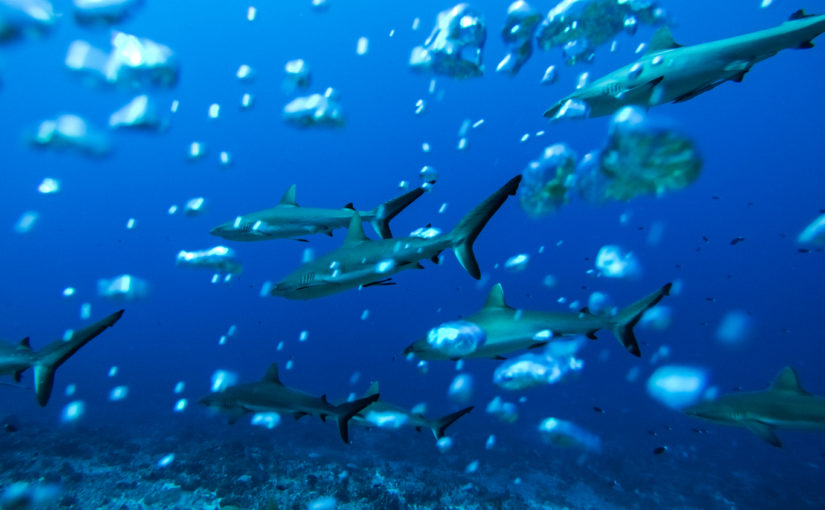










































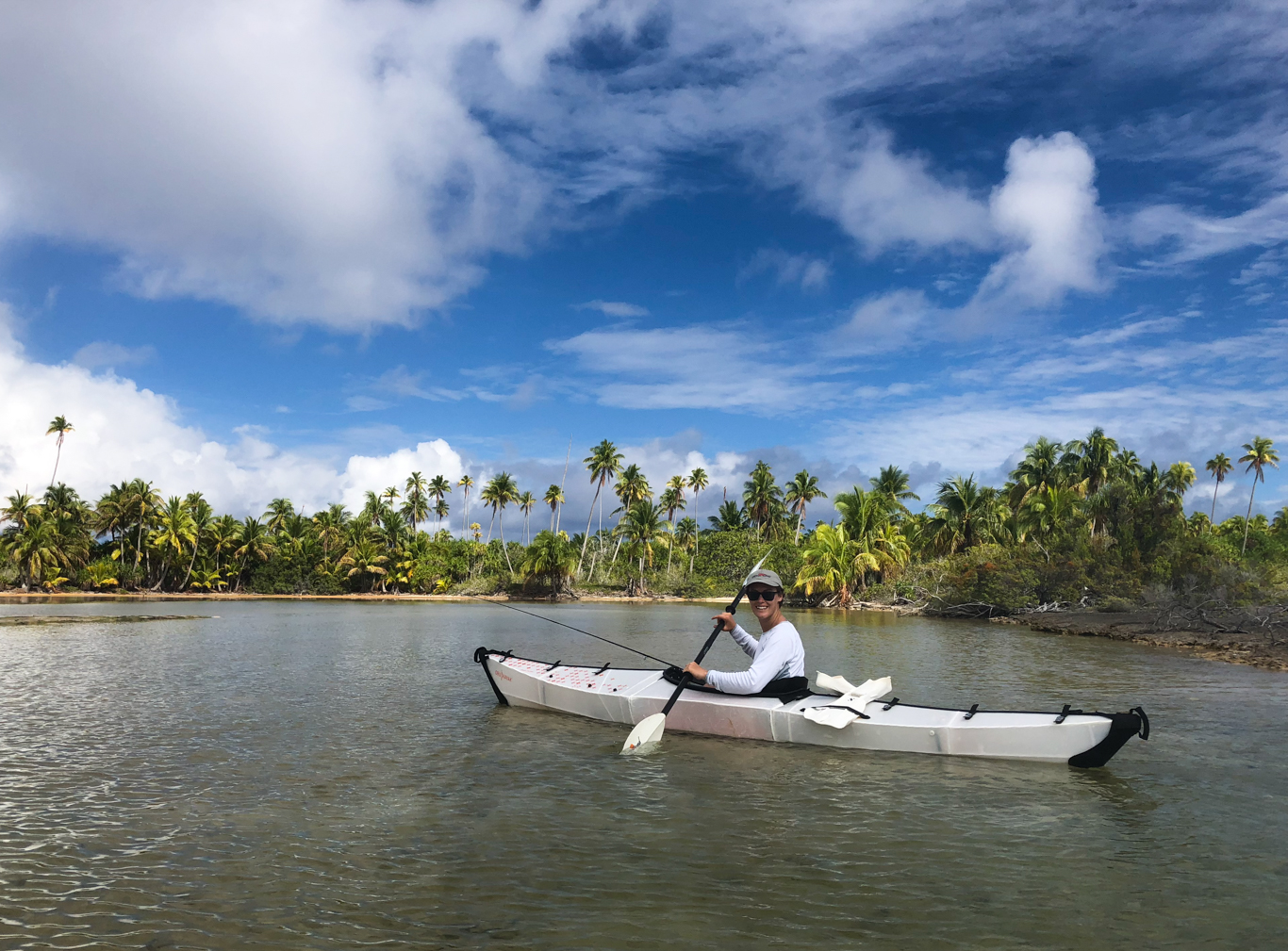

 " data-envira-height="428" data-envira-width="570" />
" data-envira-height="428" data-envira-width="570" />



















